A GREAT REVIVAL
AV LIGHTING SOUND REINFORCEMENT RECORDING STAGE SOUND BROADCAST September–October 2023 DOCUMENTING LIGHTING VIDEO MIXING
SWITCHING TO WIRELESS IEMs
Notre Dame du Rosaire, Lourdes Singapore: MICA (P) 014/05/2023 PPS 1644/05/2013(022954)
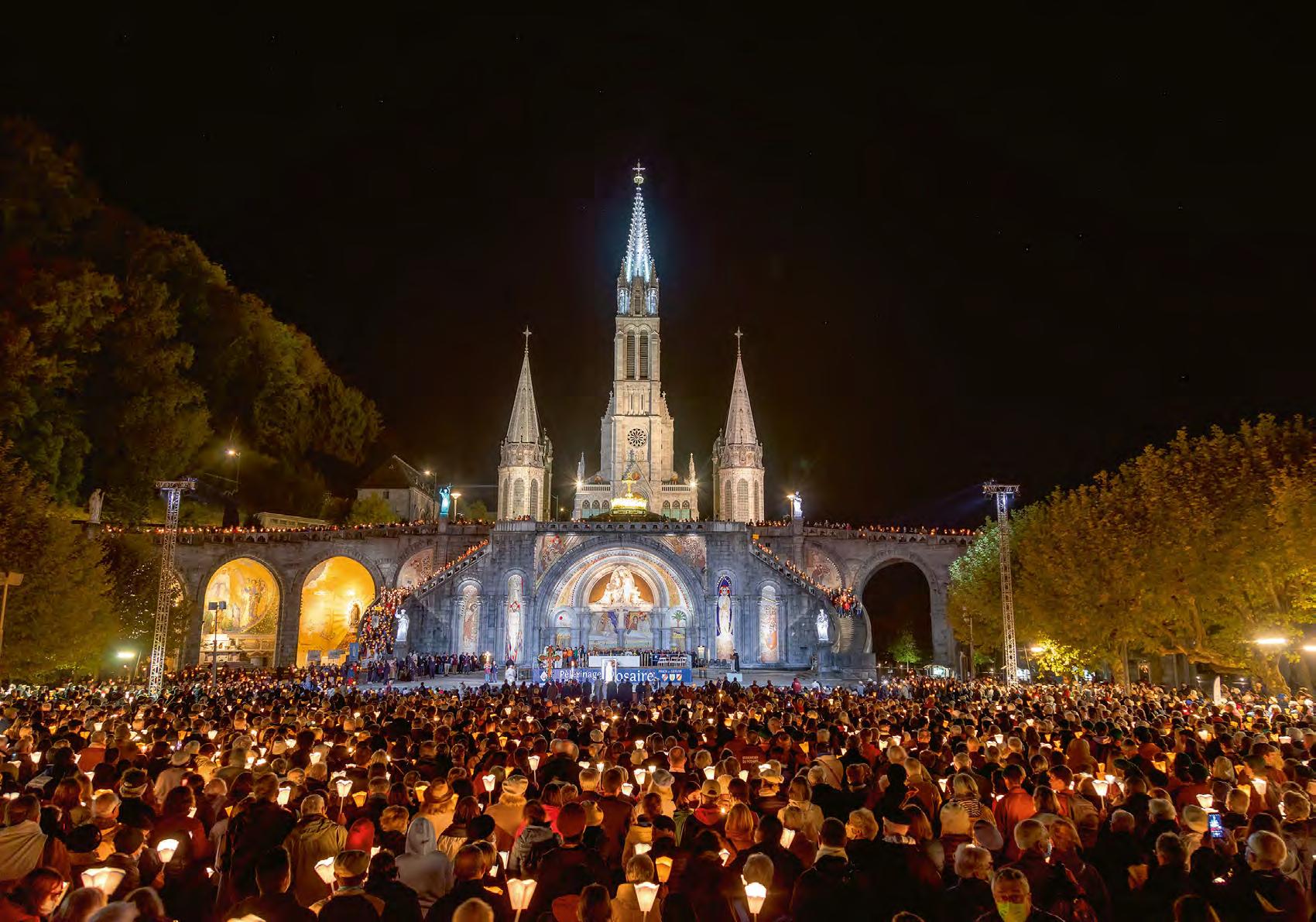

THE PLATFORM WITH THE AMPLIFIER ON BOARD. Unica is the next-generation cloud based amplifier platform designed to provide a safe and consistent user experience for any size application, whatever your installation requirements and efficiency goals might be. Unica cloud based amplifier platform. Unlock the power of consistency.

THE PLATFORM WITH THE AMPLIFIER ON BOARD. DANTE EMBEDDED MORE INFO
e 935
Elevate your voice.
The e 935 cardioid dynamic microphone was designed to elevate your voice on any stage. A transparent high-end and warm, defined lower mids accentuate even gentle voices with impressive intensity. Add superior feedback rejection to a rugged design and you have yourself the ideal companion to help deliver your message through speech and song.
sennheiser.com/e935

Worship sites, particularly those of historic importance, have enormous ongoing significance in today’s world; just remember the emotional scenes that greeted the devastating fire at Notre Dame in Paris in 2019. Fortunately, there is often an outpouring of help at hand to not only restore but renew places of worship after such disasters. A case in point is the Baitul Futuh Mosque in south London – said to be western Europe’s largest –which also suffered a fire in 2015 and has reopened after a £20m refurbishment project, including a new AV system (p.22).
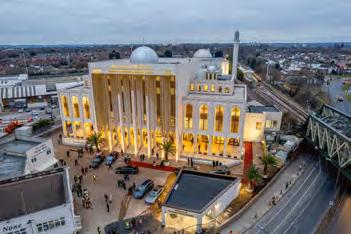
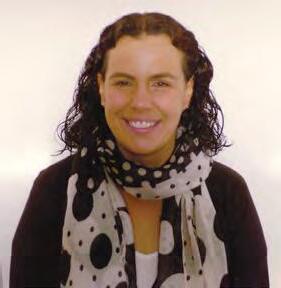
Another site to undergo a big AV renovation – though thankfully not as a result of a disaster – is
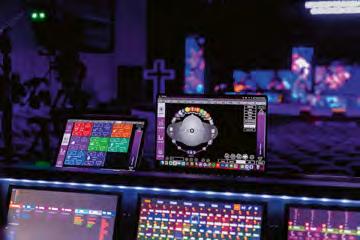

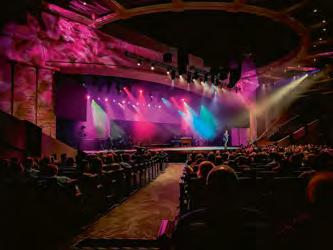
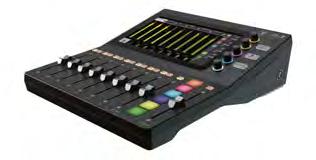

basilica in Lourdes, one of the world’s most popular pilgrimage sites (p.18). The update to the interior of the basilica should guarantee a more intelligible audio experience for the 1,000 worshippers it can accommodate, while outside, the new sound system has improved the acoustics for the millions of visitors that Lourdes receives each year. Also in this issue, our valued contributors have provided a plethora of helpful advice and tips on a variety of topics relating to audio, video and lighting in houses of worship – I hope you find their articles insightful.
Follow us on social media @WorshipAVLMagazine





September–October 2023 WORSHIP AVL 3
All rights reserved. No part of this magazine may be reproduced or transmitted in any form or by any means, electronic or mechanical, including photocopying, recording or by any information storage and retrieval system, without prior permission in writing from the copyright owners.
LICENCES: Singapore: MICA (P) 014/05/2023 PPS 1644/05/2013(022954) CIRCULATION: circulation@worshipavl.com
Contact us Contents September–October 2023 Issue 82 Email: kwallace@worshipavl.com PUBLISHED BY: 18 Upper Grosvenor Road, Tunbridge Wells, Kent TN1 2EP, United Kingdom Tel: +44 (0) 1892 676280 Web: www.worshipavl.com Richard Lawn General manager rlawn@worshipavl.com Sue Gould Advertising director sgould@worshipavl.com Carolyn Valliere Sales associate cvalliere@worshipavl.com Caroline Moss Contributing editor cmoss@worshipavl.com Simon Luckhurst Senior reporter sluckhurst@worshipavl.com Nick Smith Digital media manager nsmith@worshipavl.com Chris Yardley Video editor cyardley@worshipavl.com Adrian Baker Production manager abaker@worshipavl.com Marne Mittelmann Circulation manager circulation@worshipavl.com Jack Stennulat Digital content creator jstennulat@worshipavl.com Libby Stonell Digital content editor lstonell@worshipavl.com COVER: Notre Dame du Rosaire PRINTER: Times Printers Singapore COMMENT TECH VIEW PROJECTS 10 Northridge Church 12 Good Gifts Christian Church 16 Desert Reign Church 18 Notre Dame du Rosaire 22 Baitul Futuh Mosque 24 Immanuel Church 26 Community Bible Church 28 Hackney Pentecostal KNOWHOW 30 Avoiding handling noise 32 Distributed videowalls 34 Documenting lighting TECHNOLOGY 36 Switching to wireless IEMs 38 Converters 40 Emergency lighting 4 Azizi Ala, Robert Soo and Don Boomer 58 Mikhail Sujan PRODUCT SPOTLIGHT 42 Atomos heads to the cloud Editor’s Letter 44 The industry’s most comprehensive product news NEW PRODUCTS 12 22 26 30 40 44
Design vs reality
IN A PERFECT WORLD, THE installation of a mosque visual system that’s been designed by an integrator or AV consultant should be straightforward; however, we all know that challenges can arise during the process. There could be a variety of problems, including infrastructure issues, design mistakes, equipment reliability, or installer or integrator errors.
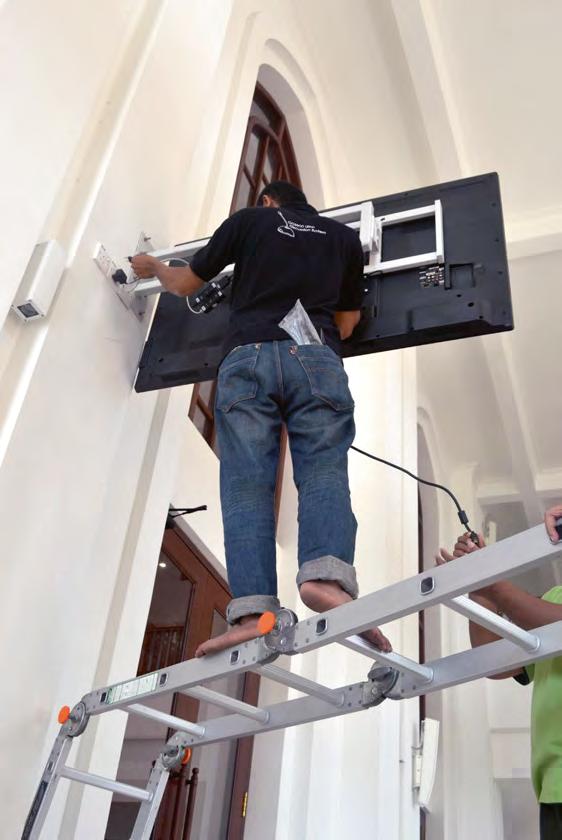
Any project will have its system designed according to the user’s needs. However, sometimes the design will look perfect on paper but issues during the implementation process can create problems for the end user. In this article, I’ll share a few of the common problems that might occur during or after implementation,
together with advice on how to overcome the situation.
The problems
A project should begin with the planning of the cable infrastructure whereby conduit, ducting or trunking will be installed before the cabling can be laid accordingly. Nowadays, Category cabling is commonly used for signal distribution in visual systems using either Cat5e or Cat6 cabling. This cable can be divided into two main types: Unshielded Twisted Pair (UTP) and Shielded Twisted Pair (STP). Selecting the wrong type of cable for the project can prove to be a disaster. Using an STP-type cable is advisable as the cross-talk phenomenon can negatively
affect a digital video signal when it’s run through UTP cabling. The resulting visuals will intermittently disappear because of signal interference among the unshielded cables sharing the same conduits, ducting or trunking. System features are always related to product selection and are very important because they will determine whether the entire design concept can be achieved or not. However, in certain circumstances such as budget constraints, this ideal is overridden and indirectly leads to design compliance and product compatibility issues. The choice of video switchers is a typical example as this product is costly and contributes towards a large proportion of the overall budget. For instance, matrix functions can only be achieved by using a matrix video switcher but not through a normal video switcher. Alternatively, an integrator may choose substandard products in order to retain the original design concept. Nevertheless, this substandard product lifespan is sometimes very questionable. In terms of lifespan, remote power management is an important feature for visual systems to prolong the equipment. Remote devices such as transmitters/receivers, encoders/ decoders and cameras can be powered up through two methods: remotely or locally. It is preferable to use devices that have a remote method as Power over Ethernet (PoE) draws power from an Ethernet switcher for encoders/ decoders and cameras, while Power over HDBaseT (PoH) draws power from the transmitter to the receiver unit or vice versa. By doing this, remote devices’ power is efficiently controlled depending on the system rack power status rather than powered locally through a power adaptor tapping to the nearest power point, which is running continuously 24/7 and affecting the longevity of the device. Unfortunately, this remote method cannot be applied to TVs as PoE or PoH are not available.
In this scenario, TVs regularly use a locally powered method with the ability to remotely control the power state of the unit, whether it goes to Standby or On using Infrared, RS-232 or an Ethernet Insertion command. This is beneficial for large-scale systems with a lot of TVs to manage compared to the conventional way where operators need to manually control each TV’s state using a remote control.
It’s not just because of the hardware but problems could happen also because of inappropriate video settings. Extended Display Identification Data –or EDID – is a classic issue that could happen on any visual system causing images not to be shown on the display. This can be rectified with built-in software such as EDID Manager or configurator (if available) with the correct settings between the input source and output display. Other than that, you should optimise the resolution and refresh rate settings in order to avoid mismatch resolution and flicker issues.
Integrator responsibility
System design often has to be revised due to budget constraints and the drawback of this process is that certain features of the systems will be unavailable or omitted. Try and find the best solution with an equivalent product which won’t affect the original design concept, as long as the solution doesn’t impact the end user in the future in terms of maintenance costs. Last but not least, the integrator should explain the pros and cons of any replacements to avoid any disputes later on.
I hope that this article gives a brief overview of the common problems that can arise and how to overcome them. Until we meet again in the final article in 2023, where I’ll continue the topic of streaming and broadcasting in a mosque. Take care and goodbye.

4 WORSHIP AVL September–October 2023
COMMENT
Azizi Ala looks at some of the common problems that could occur during the installation of visual systems in mosques and how to overcome them
Azizi Ala
Founder and technical director at Acousticon Sdn Bhd
Local power for a receiver unit is not advisable
Introducing the world’s most portable all-in-one television studio!
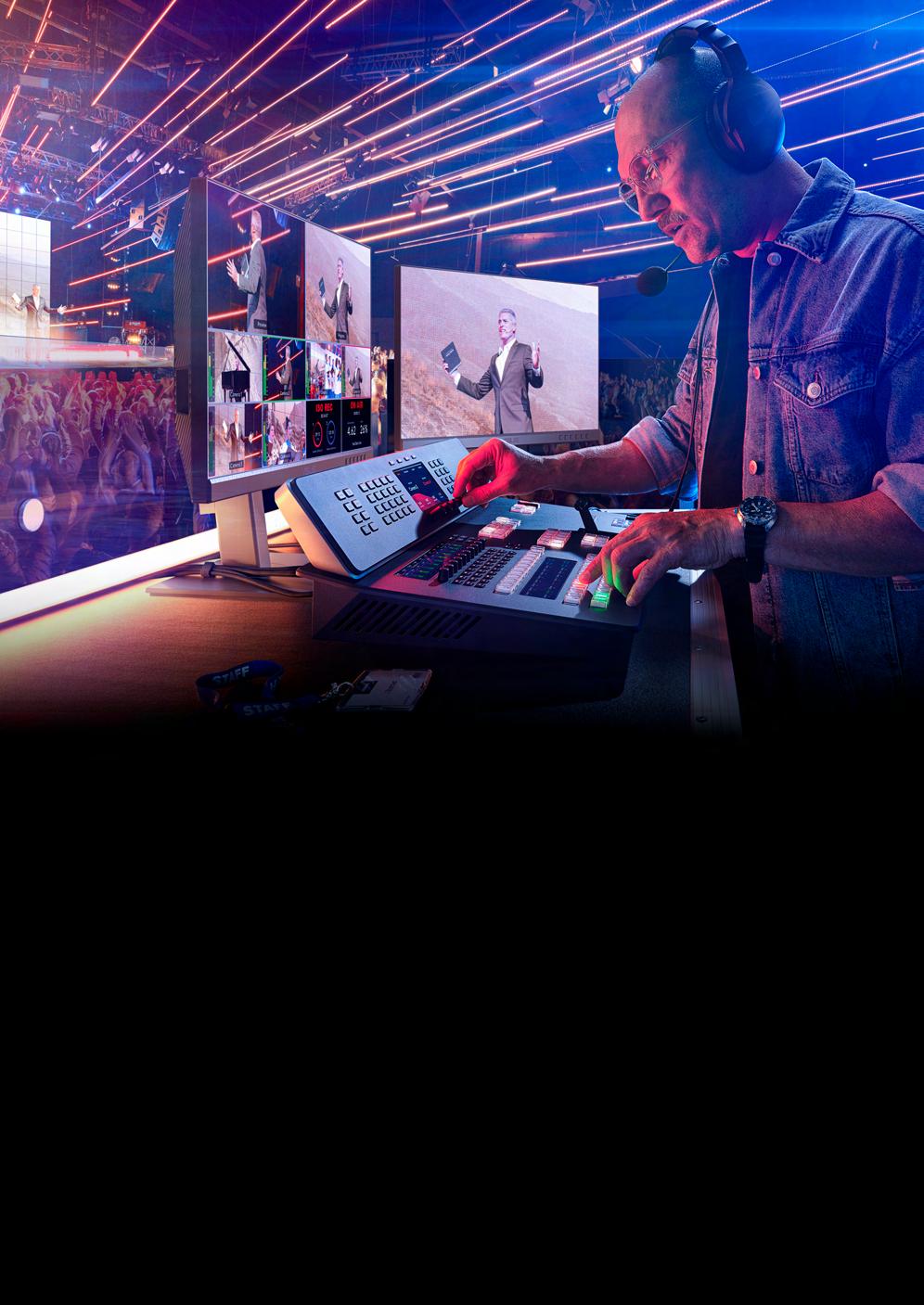
The new ATEM Television Studio HD is a professional live production switcher built into a broadcast control panel so it can be used for high end work while being extremely portable. You get a powerful switcher with 8 standards converted SDI inputs, 2 aux outputs, 4 chroma keyers, 2 downstream keyers, SuperSource, 2 media players and lots of transitions! There’s even an ISO model that records all 8 inputs for editing!
Easy to Use and Fast to Learn!
There’s never been a switcher that’s easier to use, as you simply press any of the program row buttons on the front panel to cut between video sources. You can select from exciting transitions such as dissolve, or more dramatic effects such as dip to color, DVE squeeze and DVE push. You can even add a DVE for picture in picture effects with customized graphics. Then you can live stream the results!
Self Contained Broadcast Quality Switcher
ATEM Television Studio HD combines a switcher and control panel into the same unit, so it’s extremely portable. The front panel includes buttons for selecting sources, triggering transitions and setting up video effects. You also get a built in t-bar for manual transition control! The front panel even has an innovative audio mixer control area with live metering on a dedicated LCD.
Record to Internal Network Storage!
ATEM Television Studio HD8 ISO supports recording all video inputs to optional M.2 internal flash storage! The internal storage will then be available to share over the local Ethernet network so you get a whole post production workflow! This means people can work on post production tasks such as editing, color correction and graphics preparation while recording new live shows!
Built In Fairlight Audio Mixer
With a built in Fairlight audio mixer, ATEM Television Studio HD makes it possible to do complex live sound mixing. The internal mixer features enough channels for all SDI inputs, as well as extra channels for the XLR, RCA and MADI inputs! Each input channel features the highest quality 6 band parametric EQ, compressor, limiter, expander and noise gate as well as level and pan controls.
ATEM
www.blackmagicdesign.com/sg Learn More! SRP is Exclusive of Taxes.
Television Studio HD8 ISO S$5,295
levels of excellence. In our last article, I touched on the popular subject of audio mixing, so I felt an appropriate follow-up would be to discuss video mixing, a topic that has become equally important in churches over the recent pandemic years.

At the very heart of church video systems today is a video switcher. The popularity of utilising several computers for visual content as well as multiple cameras that allow worshippers to view different angles on big screens (IMage MAGnification or IMAG) or elsewhere via broadcast or streaming has made the video switcher indispensable.
The terms “video switcher” and “video mixer” are often used interchangeably and can be confusing. Video “mixer” tends to be used more in Europe and most parts of the world, whereas “switcher” is more common in the United States. Personally, I refer to simpler rackmounted units as “switchers” (such as matrix switchers) and reserve the name “mixer” for systems with
wipes and other effects. For our discussion on video mixing, we will make reference to video mixers that come with functions often associated with live productions.
The role of a video mixer is quite similar to that of an audio mixer, in that at its most basic level it is simply used to make connections between its input sources and the respective output destinations. Beyond that, it also allows you to switch between different video inputs or to mix them together and add effects like titles and graphics. They can also provide much more advanced functions like audio mixing, keying and many other features which we’ll discuss later. Video mixers come in hardware and software options (and require a computer and a video capture card), though most prefer the hardware version because of its higher reliability. When the number of video input sources goes beyond four, working with a hardware version would seem a better choice. Video mixers that come with a desktop
control panel and a T-Bar for controlling transitions also allow for simpler and quicker control.
As we dive into video mixing, let’s discuss the common functions of a video mixer that will be beneficial for use in church worship services.
As already established, a video mixer is required for toggling between various input video sources and routing them to one or more video receiving destinations, such as a display, recording device or upload to a stream. The number of I/Os required would simply depend on your video setup but, more often than not, the destinations would outnumber the available outputs and this is where a video distribution amplifier (or DA) would come in, as prices of video mixers with more than
video input sources as well as outputs on a single HDMI or SDI TV monitor.
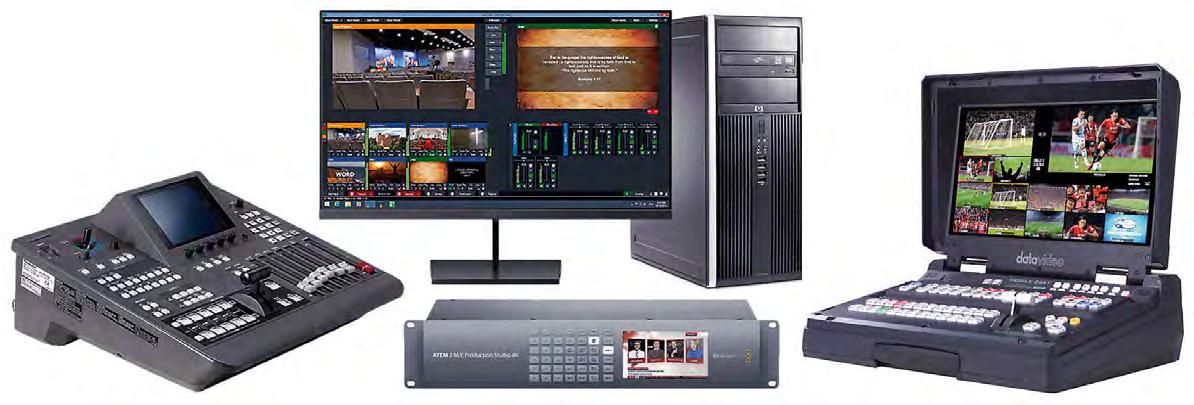
external monitor. This is helpful when there aren’t too many inputs and outputs to monitor and where physical space is limited.
The use of video effects is where the magic begins and can greatly enhance the visual delivery and impact for a worship service. Since we are discussing video mixing, let’s begin with the mix effect.
Mix effect refers to a transition where two videos smoothly overlap each other without breaks or interruptions (such as fade to black). Known as the cross-dissolve effect, it gives viewers a feeling of elegance as compared to a hard cut often associated with video matrix switchers. With the most common being horizontal and vertical wipe, other wipe effects such as diagonal wipe, iris wipe, heart wipe and matrix wipe are named after their transition styles. Additionally, the video operator is able to control the transition time either by key-control or by manually using the T-Bar to customise the transition timing.

6 WORSHIP AVL September–October 2023
COMMENT
Robert Soo discusses how video mixing has become just as important as audio mixing in a post-pandemic world
There’s a wide choice of video switchers and mixers that can support church worship services
Using effects like DSK and PiP for church worship
Picture-in-Picture (or PiP) function places smaller videos on a background clip, showing two or more video clips on the same screen. This is useful both in live settings as well as in livestreaming applications; for example, a smaller image of the pastor or the worship team can be inserted over a slide of the sermon text or worship song lyrics, so the worshippers would not lose visual connection with the ministry team. Keying is a powerful function where it allows the operator to cut or “key” any part of the image.
� Chroma key – where “chroma” means “pure colour” and “key” is a technical term for removal – is a process of removing a particular pure colour from the image and then overlapping the resulting image on top of a pre-configured background image. Normally used in studio applications, it has become widely adopted for online worship services as it provides a means for the preacher and worship team to present from anywhere, even from their homes. All that is needed is a green or blue backdrop (colours that are furthest away from skin colour) and they can look like they’re ministering from the sanctuary.
� A less common keying approach is luminance key, which removes the background based on the luminance of an image. A feature usually found in professional mixers, luma key is typically used for making subtitles.
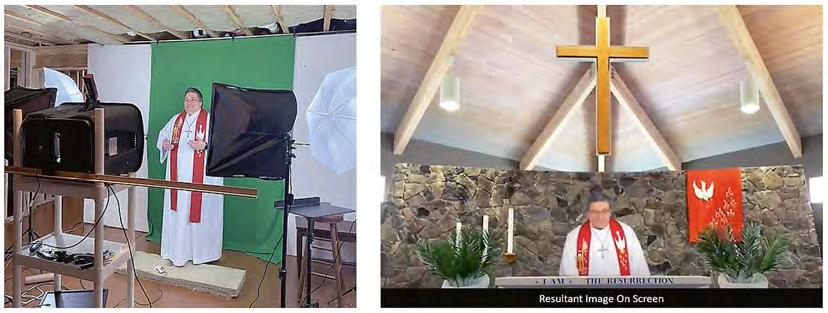
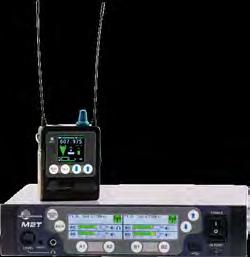

� Downstream key (or DSK) is the control for displaying the top layer of the image, often used for inserting song lyrics, church logos or other images into the live video, and the good thing is that the DSK layer will remain on the screen even after the background image and video input sources are changed (for example, switching between cameras). The ability to put text
over video is useful when a single display needs to convey both text content (teaching material, song lyrics, announcements, etc.) and video imagery (such as IMAG or a particular scene). In streaming applications, remote worshippers get to watch the service only from a single screen, so it needs to simultaneously convey as much information or content as possible within a limited space and time.
Speaking of logos, a useful feature to have is the ability to store a logo. When you’re working with only one laptop and you receive a last-minute video insert request, or perhaps you need to fix an error on your slide, it

gives you something to put on the screen while making changes on your laptop (instead of flashing your desktop to everyone).
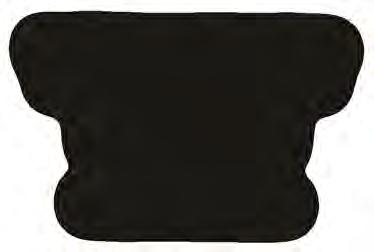
I hope this short article has helped bring greater awareness and understanding about the wonderful video mixing tools available for church use today. My view is that the use of such video technology in church settings is not meant to provide entertainment for the eyes, but when used in full reverence for God, it can certainly bring a great blessing to His worshippers. As always, there is much more that I would like to share, so do look out for my next article. Till then, take care and God Bless.

September–October 2023 WORSHIP AVL 7 COMMENT Dante™ digital and analog line-level inputs 2 stereo transmissions in 1/2 rack unit Phenomenal Stereo Imaging 470 - 614 MHz tuning range NEW, improved M2Ra US Made Lectrosonics quality IEM STEREO TRUE TRUE STEREO IEM For Your Next Stage For Your Next Stage USA 1-800-821-1121 In Asia +855(16) 201 280 In Canada, call 877-753-2876 In Europe, call +33 (0) 78558 3735 In South America, call +57 310799 4564
The benefits of using chroma key on green screen for livestreaming
Omni vs directional antennas

THE BASIC TENET OF SUCCESSFUL wireless mic/in-ear operation is to ensure that your receiver receives your intended signal at a level at least 20dB stronger than it sees the RF noise floor at the same frequency. When selecting antennas
types of antennas in the end zone of a football field, for example, both would cover the field but the omni will also cover the car park behind the field. If we need to cover both, then an omni would be a good choice. But if we only need to cover the field, the omni will be sending RF signals to the receiver that we
would rather exclude. If we wanted to cover only the field with an omni, then it should be placed half-way out into the field, which is likely not possible. If you have a significant mic collection, I’m betting almost all of them are directional and very few are omni (at least mine are).
Now that we’ve picked the proper antenna, we simply need to point it in the direction of the transmitters. Most paddle-type (LPDA) antennas are typically 120° in their horizontal pattern. An easy way to make sure you are covering what you intend to is to lay a 120° triangle over your floor plan. If you have selected an omni antenna, it should be placed near the middle of its 360° horizontal pattern.
For trouble-free operation, you should have “line of sight” between your transmitter and your receiving antennas. Placing your antennas inside a metal rack or behind a cupboard door will result in a very large loss of signal. You should provide a diversity pair of antennas in each space you wish to cover (but probably only one pair unless your venue holds more than 1,000 people). Using more antennas than you need is problematic.
Installed antennas are typically wall-mounted about 2–3m above the deck so that they clear potential blockages from bodies. Again, omni whips should be
centre-mounted and not installed onto walls for best results.
Antennas should not be mounted against metal surfaces of lighting truss unless they have a back plate (uncommon). Also, where possible, keep away from video monitors and Wi-Fi access points.
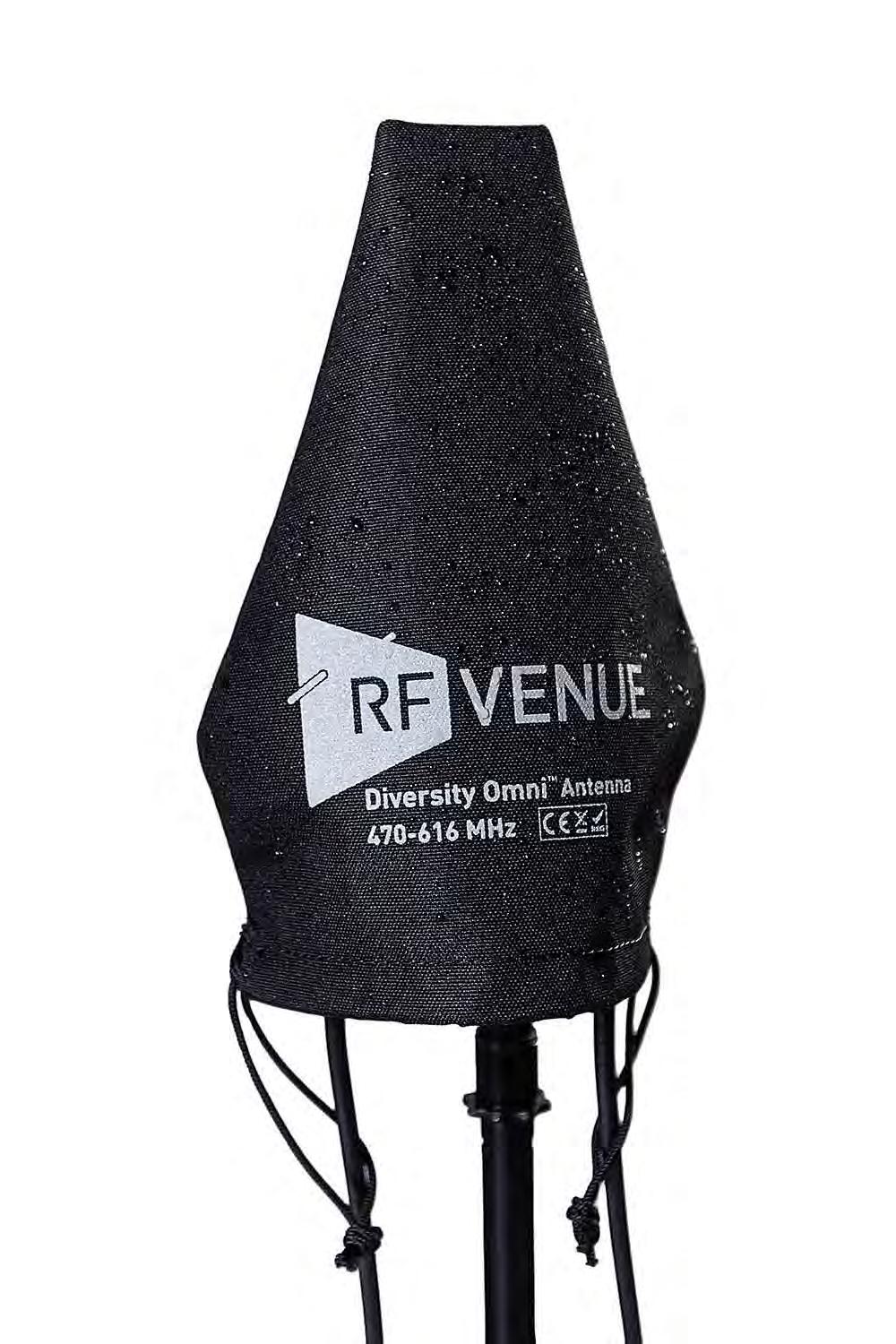
Antennas should be mounted about 1.8m apart and need to operate as a pair in their coverage to maintain quality and reliability (see Figure 1).
If you are using both wireless mics and IEM systems, it is very important that the IEM transmitting antenna is not pointed directly into the receiving antennas of your wireless mics. Think of this like avoiding pointing a microphone at a speaker and getting feedback. This unfortunately is nearly unavoidable when using omni whip-type antennas. IEM antennas should be pointed in the same direction as your wireless mic antennas or at 90° angles to each other in order to ensure success.
8 WORSHIP AVL September–October 2023
www.rfvenue.com COMMENT
Most users have a clear understanding of how to place and aim their microphones but have doubts about how to place and aim their antennas. RF Venue’s senior applications engineer, Don Boomer, shows that, fundamentally, they have a lot in common
Figure 1
SOMMER CABLE based in Straubenhardt/Germany was founded in 1999 and is now one of the leading suppliers of professional high-quality cable and connection technology with a focus on the audio, video, broadcast, studio and media technology sectors. The product range including the in-house brands HICON, CARDINAL DVM and SYSBOXX covers cable bulkware, connectors, connection cables, individually adaptable distribution systems and electronics.
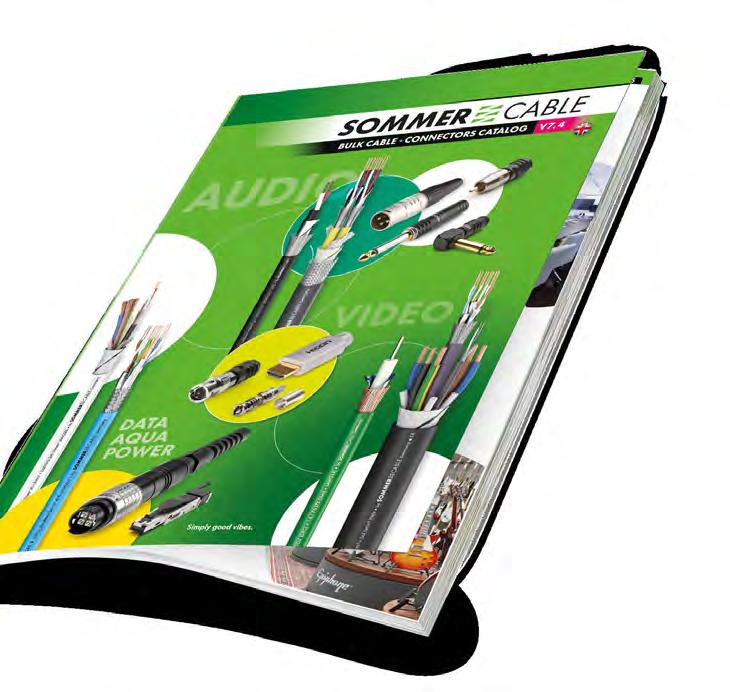


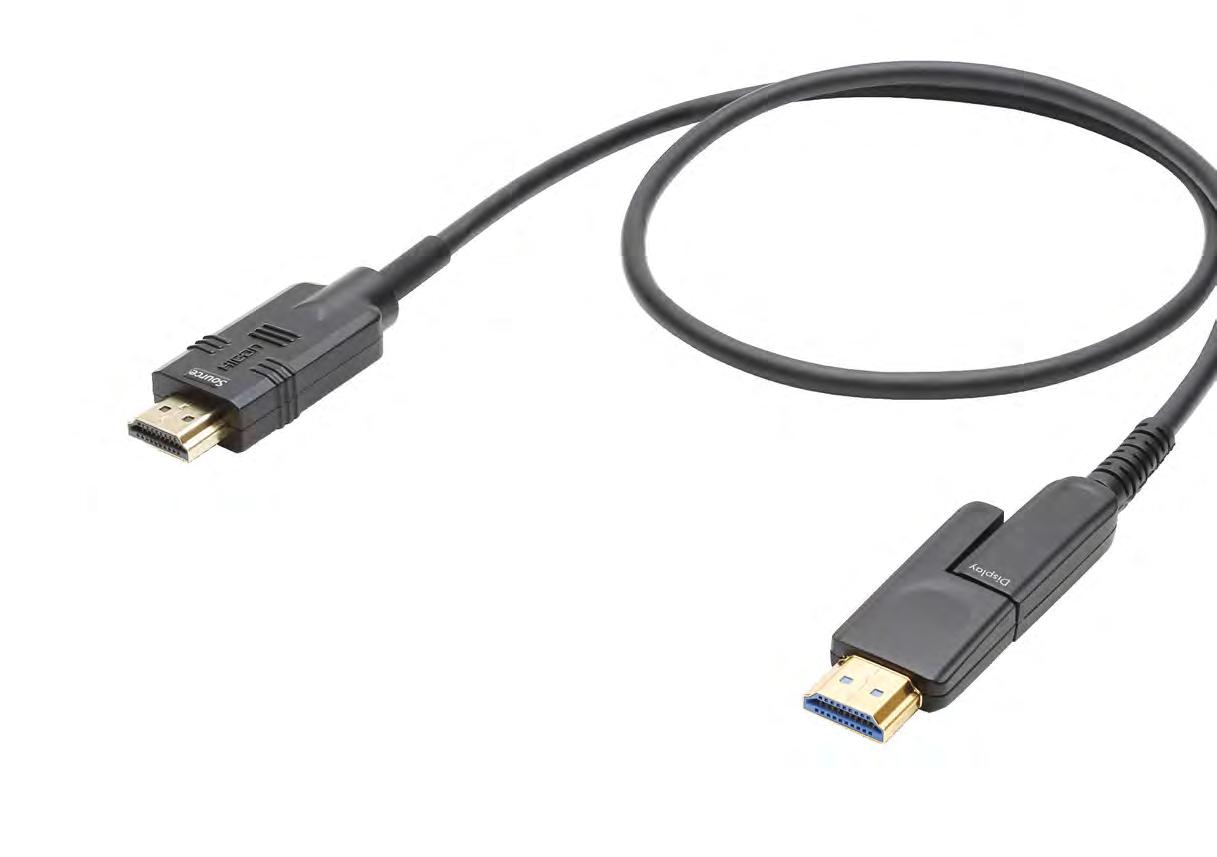
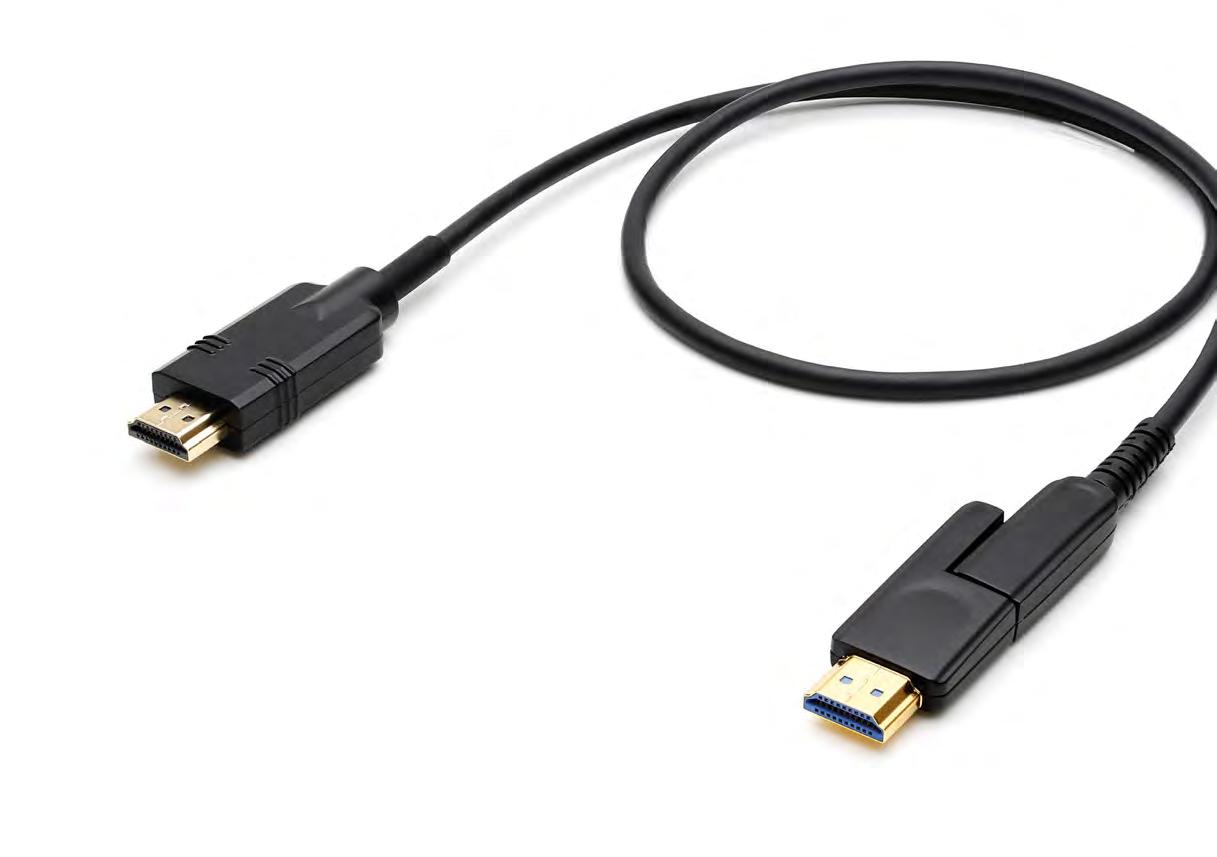
A B2B shop with over 25,000 products is available 24/7.



















HICON – A Division of AUDIO VIDEO BROADCAST MULTIMEDIA HIFI x01683 www.sommercable.com • info@sommercable.com
HDMI® AOC (Active
Installation & Conference Broadcast Solutions
Event Technology
HDMI® D with pulling aid
Optical Cable) UHD HDMI Installation up to 50 m
Professional Studio
BULK CABLE · CONNECTORS CATALOG FOR FREE · ORDER NOW! NEW 2023
Pushing boundaries
Clear-Com Arcadia upgrade expands Northridge Church’s creative boundaries

NORTHRIDGE CHURCH OFFERS
a fusion of technology and creativity, evidenced by the HOW’s praise band playing against an LED backdrop of digitally rendered but stunningly effective stained-glass “windows”. That fusion is integral to its mission at the main campus in Plymouth, Michigan. The church has recently taken delivery of a Clear-Com Arcadia Central Station to blend in with its existing Clear-Com infrastructure. Brandon Schultz, Northridge’s live video director, cites the perspective of senior pastor Brad Powell, who has been with the church for 35 years, as a principal influence on the church’s broad approach. “[Pastor Brad] places high value on technology and innovation,” he explains. “He regularly says, ‘God is a creator, and his people are made in his image.’ We love to be creative, to use technology to bring about that creation, and we’ve been blessed to try out all kinds of technologies, experiment with them and push our creative boundaries.”
The adoption of Arcadia as part of an overall upgrade to their intercom infrastructure is a prime example of optimising technology
to allow for more creativity, as it helps the church’s production team leverage their intercom system more effectively to create ever more immersive and high-impact worship services. “We already had an extensive comms system based on the Clear-Com Encore Analog Partyline system that we’ve ‘grafted’ onto over the years, but we wanted to bring it forward in a way that our growing creative ministry needs,” Schultz adds.
Northridge had already been evaluating Arcadia as a solution, but the release of the integration of Arcadia with HelixNet Digital Partyline, Schultz says, “sealed it for us. We looked at competing options, but nothing had the same comprehensive feature set and native integration.”
Arcadia met these requirements.
“Not only for our existing needs but the more creative ideas we have had about how we can use our intercom system beyond how we’ve used it before,” Schultz continues. Plus, the church was able to retain its legacy wireless system and integrate it into the new Arcadia-based system seamlessly. “We didn’t have to
change out our entire system to go digital, or redo how we send comms to cameras and distribute them to video control,” he adds. “And, frankly, the price point was far better than I had imagined it to be, given what Arcadia is capable of.”
Ultimately, Arcadia was installed in the campus’s production booth, with FreeSpeak Edge 5GHz IP transceivers distributed in multiple zones in the church to support FSE wireless beltpacks.
Overall, according to the church, Arcadia has delivered far more functionality and flexibility, allowing IP connectivity and greater channel capacity over a single network cable instead of via multiple runs of copper through the building, substantially increasing wireless coverage across the entire campus (as well as the number of production staff who can be on comms simultaneously), and, by extension, simplifying their workflow.
Schultz reports that was a gamechanger, particularly for Northridge’s annual Christmas production – The Glory of Christmas – which requires up to 50 users to connect via
intercom at once. “Arcadia gives us the ability to have unique user profiles that can be re-assigned with the click of a button or remotely, instead of getting into the matrix or moving knobs and faders like we used to and having multiple systems we need to configure independently. Arcadia just works, and it’s all in one place. We can do that from anywhere with an internet connection.”
That, Schultz adds, is a feature they didn’t know they needed until they had it. “Then, suddenly, we felt like we didn’t know how to go without that. And with so many channels on a single pack, we can assign unique, point-to-point private lines rather than have everybody on one channel, so our comms experience is much more peaceful and efficient than ever before.”
More importantly, Northridge Church’s leadership and production teams are no longer bound by their older system’s limitations. Instead, in the future, they’re free to expand at will and give their creative ideas a boost.
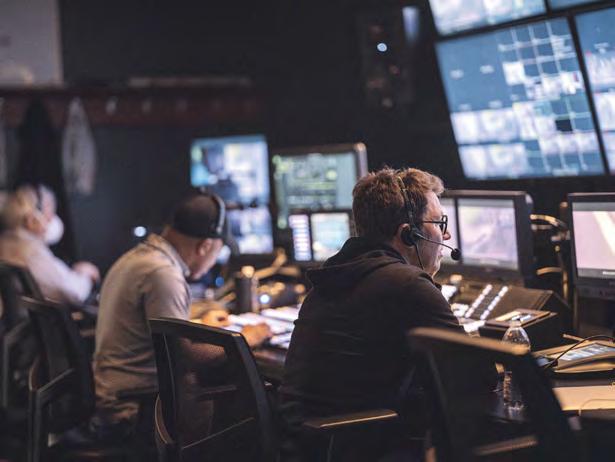
“The integration of Arcadia, how the whole system works together – two-wire, four-wire, HelixNet, FreeSpeak – Clear-Com’s offerings are so numerous and wellintegrated, it’s plug and play. As long as we’re in that massive Clear-Com ecosystem, I’m confident we’ll have smooth integration anywhere in our building.”
www.clearcom.com
10 WORSHIP AVL September–October 2023
PROJECTS
Arcadia has delivered more flexibility to Northridge Church
Arcadia has been installed in the campus’s production booth
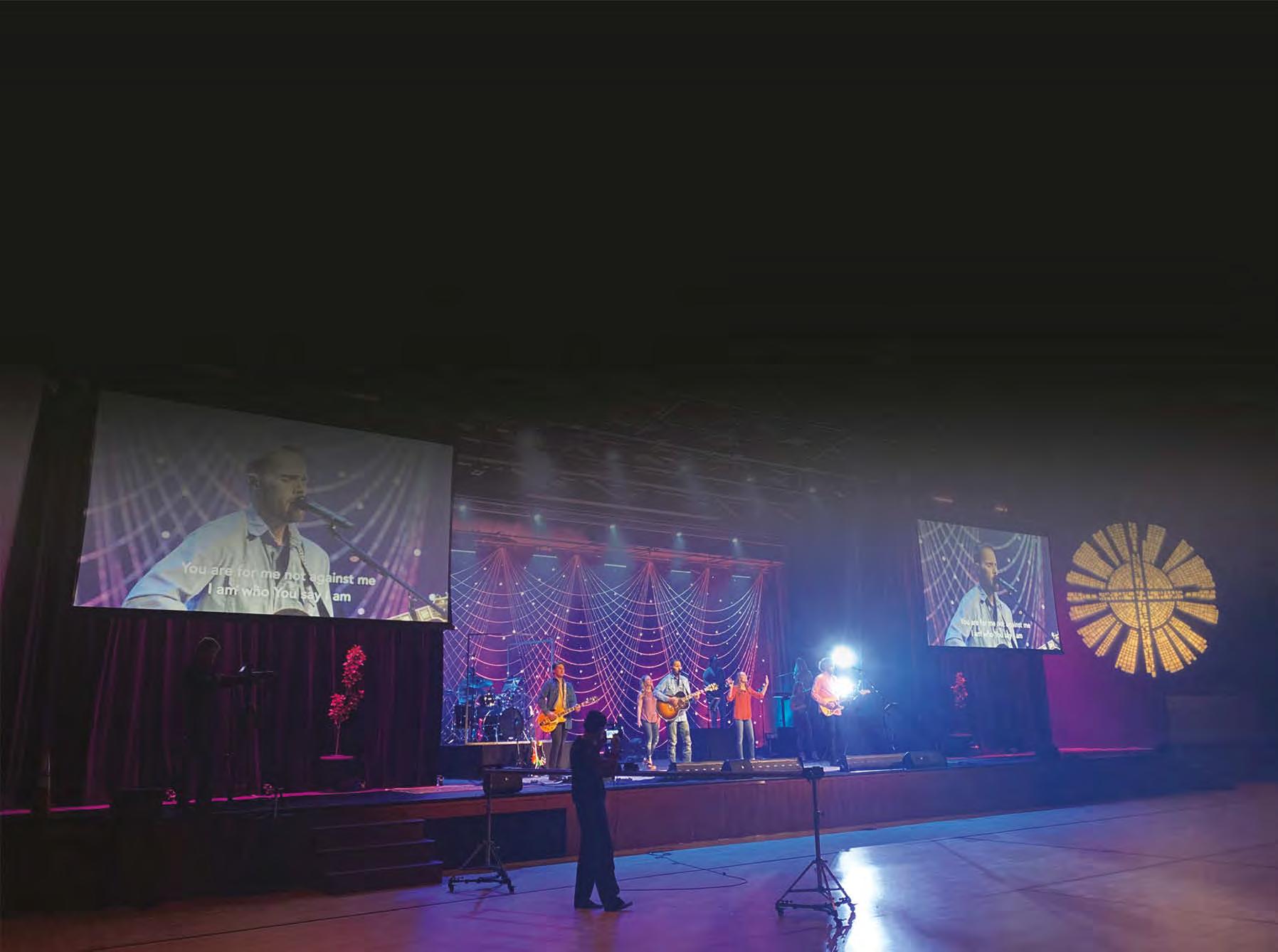
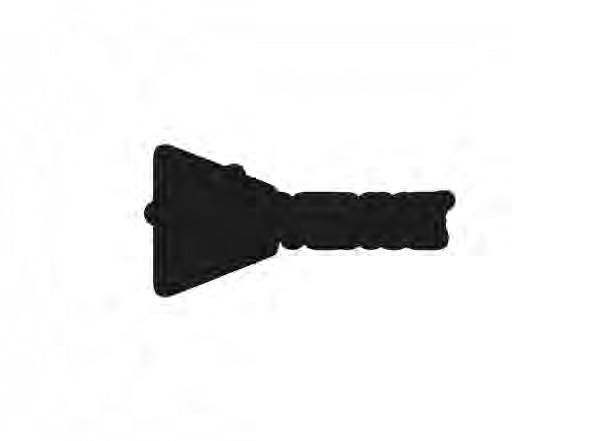

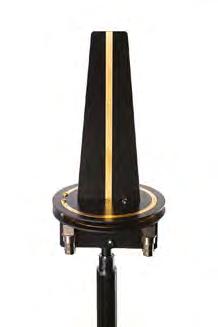

Challenge accepted
Good
ENGINEERING AN IMMERSIVE experience in the hybrid world is not simply restricted to online and in-person styles. For years, urban areas with high rents and limited space availability have turned production spaces into a mixed or hybrid use within the same location. To meet these needs, Good Gifts Services designed a multipurpose production and event facility in the Bendemeer Road area of Singapore. Leased out as a production, training, performance, conference, broadcast, events and rehearsal space, the venue welcomes ever-increasing numbers of such hirers needing to reach both in-person and online attendees.
Self-confessed, tech-savvy operators Joshua Hong and Goh Zhong Guo demanded a more broadcast-centric setup for flexible event use with minimal manpower needs for crew. Possessing more than an enthusiast’s knowledge of audiovisual broadcasting, the duo required guidance to join the dots that would ultimately lead to a pioneering visual solution. For a small room, they were thinking big from the outset.
“The venue can accommodate up to 100 people and, for such a size, a PTZ camera system would be the norm,” admits Hong. “PTZ technology originates from CCTV security cameras, but it has been adapted for productions in more recent years. We desired a higherquality, cinematic image with better control, but with a typical pan to zoom operation capable of

controlling parameters such as programme to preview, colouring, ISO and focus. The video setup would also need to switch between different cameras and media inputs.”
A preferred wish list of products and technologies was put together, including four compact Panasonic Lumix DC-BGH1 93mm x 93mm block cinema cameras with Lumix lenses, an eight-input Blackmagic Design ATEM 1 Production Studio 4K switcher and Datavideo PTR10 pan/tilt heads. Designed to transform any micro four-thirds or block camera into a robotic camera,
Datavideo PTR10 MKII robotic pan/tilt heads and Nucleus Zoom encoders were specified for each block camera.
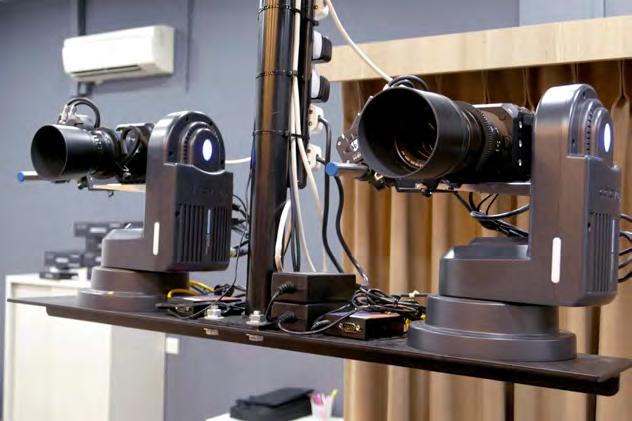
“We simply wanted the Blackmagic, Datavideo and Panasonic components to communicate with one another so we could control the system,” furthers Hong, who was naturally reticent to climb ladders to manually adjust the three individual block cameras. “Following research, there appeared to be nothing available on the market, so we knew that we would have to build an off-the-shelf solution.”
A point was reached when specialist assistance was required, so Hong and Goh contacted systems integrator Loud Technologies Asia (LTA), which has rapidly established itself within the Singaporean HOW community. “We sought someone who was openminded, possessed expertise and had sufficient knowledge to join the components,” Hong admits. “We were fortunate in finding Colin Quek [LTA general manager and founder]. Ultimately, LTA engineered a flexible, futureproof, concise and ease-ofuse solution for the volunteer-based groups of hirers.”
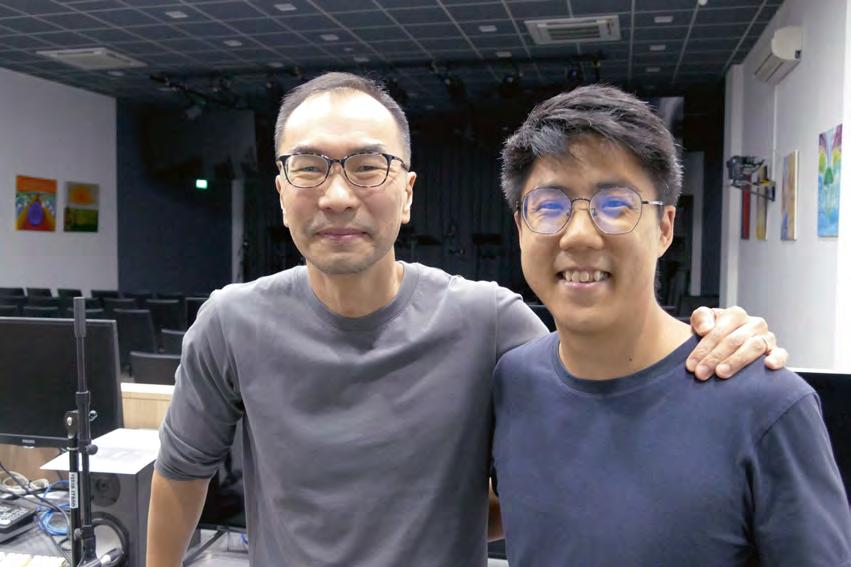
Gifts Christian Church has enlisted the help of Loud Technologies Asia to provide a broadcast-style setup for its services
12 WORSHIP AVL September–October 2023
PROJECTS
L–R: Joshua Hong and Zhong Guo Goh
Quek takes up the story. “We received a request from the client to create a simple design for a complex control mechanism integrating PT camera heads, a video switcher and block head cameras with control over the zoom encoder during broadcasts. Following multiple conversations with the client and these brands, I realised that we would indeed have to engineer a solution based on theory. Practical trials were not possible as we didn’t have a mockup of the actual setup that would let us know if this was working or not.”
Challenge accepted, LTA engineer KKY invested many hours of research into the project. “The entire setup comprises multiple elements that need to be controlled,” explains KKY. “For example, I discovered that the zoom would need to be managed on a separate encoder that’s compatible with the camera. Ultimately, Skaarhoj stood out from the pack. The Danish broadcast controller can elegantly provide all-in-one IP control of the video switcher, zoom encoders and PT head and cinema camera parameters, so the next challenge for us was to find a way to communicate with the PT head through an IP-to-serial server. Fortunately, the Danish manufacturer was willing to invest time to engineer a bespoke solution adopting their universal broadcast controller.”
Combining PTZ control, live switching, camera shading and routing, the LTA team proposed the Air Fly Pro V3 ultimate controller for the church. The controller integrates the Blue Pill Inside hardware with a UniSketch panel. The Blue Pill server combines multiple controllers into a single controller
and communicates to UniSketch panels via the Raw Panel device core on UniSketch. By taking control over the UniSketch panels, the Blue Pill can create presets (macros/ timelines) and virtual triggers. Other features include virtually unlimited Skaarhoj panels and integrated devices, including cameras, switcher and routers.

Skaarhoj controls the PTZ camera zoom controller and the other elements over the IP network via a Netgear Pro AV NDI and Dante optimised switch. “The initial obstacle involved converting the serial control to Ethernet so the various elements could communicate with one another,” recalls Quek. “I was quite sceptical this protocol was going to work. To my astonishment, however, once we had assigned IP addresses, set up the system and turned it on, it automatically recognised all the devices on the IP network. By dragging and dropping on a screen, this was far simpler than envisaged. In time, we added more features based on the client’s request.”
Currently, the eight-input switcher displays four cameras, including one on a portable tripod, the presenter’s computer and ProPresenter source inputs. The HDMI inputs are routed to two main 85-inch 4K displays above the stage and two 65-inch 4K confidence monitors at the rear of the room.

Crucially, the cameras can communicate with the Datavideo robotic pan/tilt heads and encoders together with the Blackmagic ATEM 1 Production Studio 4K switcher over the IP network. “I believe this is a first for both Panasonic and Datavideo,” offers Quek. “The Blue Pill operating system controls the cameras and

PROJECTS September–October 2023 WORSHIP AVL 13
Audience viewing is enhanced with the addition of two 85-inch 4K displays
Dual Panasonic Lumix box cameras combine with Datavideo robotic pan/tilt heads and Nucleus Zoom encoders
the Blackmagic ATEM switcher as well as the PT head via the serial server over Ethernet. It can now really claim to control any PTZ camera on the market. The support from Denmark was excellent.”

Having installed a streamlined, cost-effective 4K camera control system, Hong and Goh received an additional bonus in their rear control room. “The simplified Skaarhoj video software solution bypasses the need for racked hardware and comes with just one controller,” comments Goh. “Having fine-tuned the controls, we have found the ecosystem to operate in a way that we could only hope for when hosting events and shows in this venue. As we adopted a baseband fibre-optic network, there’s no need to adjust on the fly as we have saved and added various presets to the production values. We have four spare inputs, so we may add more cameras at some point in the future to provide more angles.
“The pioneering video system has not resulted in the downgrading of room acoustics and audio elements. The primary concern for the audio design was to contain the sound in the venue with minimal pollution spilling out,” highlights Goh. “Acoustic absorption material has been installed on the walls and onto the two-grid ceiling. It’s important that the performers and presenters are happy with what they hear, so they don’t push the levels too high. The 90° x 60° (HxV) nominal directivity of the EAW loudspeaker system we installed is constant, so the users don’t have to push hard to get the message across. The speaker system exerts a tight bass response which is vital with neighbours on either side and
The EAW two-way loudspeaker system consists of L-R ceilingmounted MK2396i 12-inch cabinets supplemented by dual floor-standing SBX220 compact subwoofers powered by QSC amplifiers.
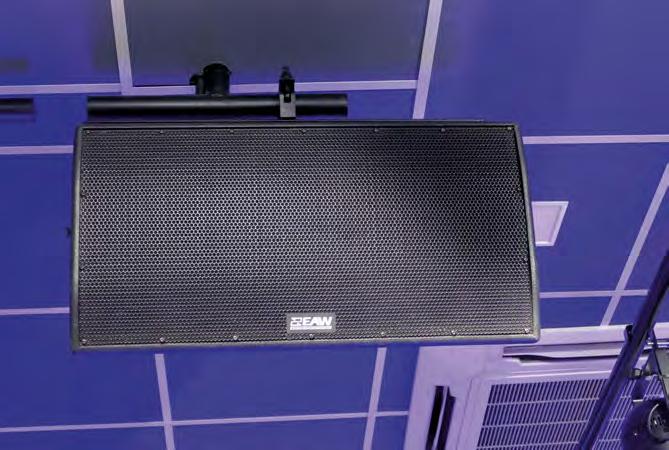
Furnished with Sennheiser XS Wireless 2 hand-held microphones, performers and presenters can monitor their performances on JBL PRX512M wedges. Punching above its weight once again for a small venue, the church can host a 32-channel stage set up for its musicians who further benefit from a Midas DP48 personal monitoring
“We specified Sennheiser for its ease-of-use mic setup,” furthers
Goh. “We can add separate mics for livestreaming and music instruments such as drums, guitars and keyboards running over Dante. In addition, the multitrack drums and keyboards have been set up and saved on a computer via Dante. I also have a mix from analogue bass controllers to Dante mix controls.”
The Midas in-ear monitoring was primarily selected for its multichannel recording feature. “The 48-channel Midas personal monitoring system downloads channel names directly from the Midas console when placed in broadcast mode,” adds Goh. “This feature is a bonus for us. By digitally assigning names onto the console channels, other users can read the inputs when they have been transferred over to the personal monitors.”
“For a relatively small operation with a limited budget, the multicamera system sets this venue apart from others I have upgraded,” sums up KKY. “The technology installed within is not typical for an event venue and particularly of this size. It was a privilege to work with and be challenged by such broadcast-savvy users. Without the support and assistance of Skaarhoj, however, this solution may never have been realised. With Air Fly Pro and Blue Pill Inside, our Danish friends have added so much value in a simple compact package.”

www.loudtechnologiesasia.com
www.skaarhoj.com
PROJECTS
14 WORSHIP AVL September–October 2023
EAW MK2396i speakers provide the main sound reinforcement in the venue
The Midas production console outputs to the DP48 personal monitoring system
The Skaarhoj Air Fly Pro control surface
Use Freely and Cleverly
ACT-5800 Series Digital Wireless Systems

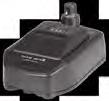


MIPRO ACT-5800 Series digital wireless systems operate in ISM 5.8 GHz license-free band so they can be used freely in any country. No ma�er presenta�ons, conferences, lectures, choirs or ensembles, ACT-5800 Series can fulfill your cable-free sound pick-up or recording requirements by offering various kinds of transmi�ers and microphones.
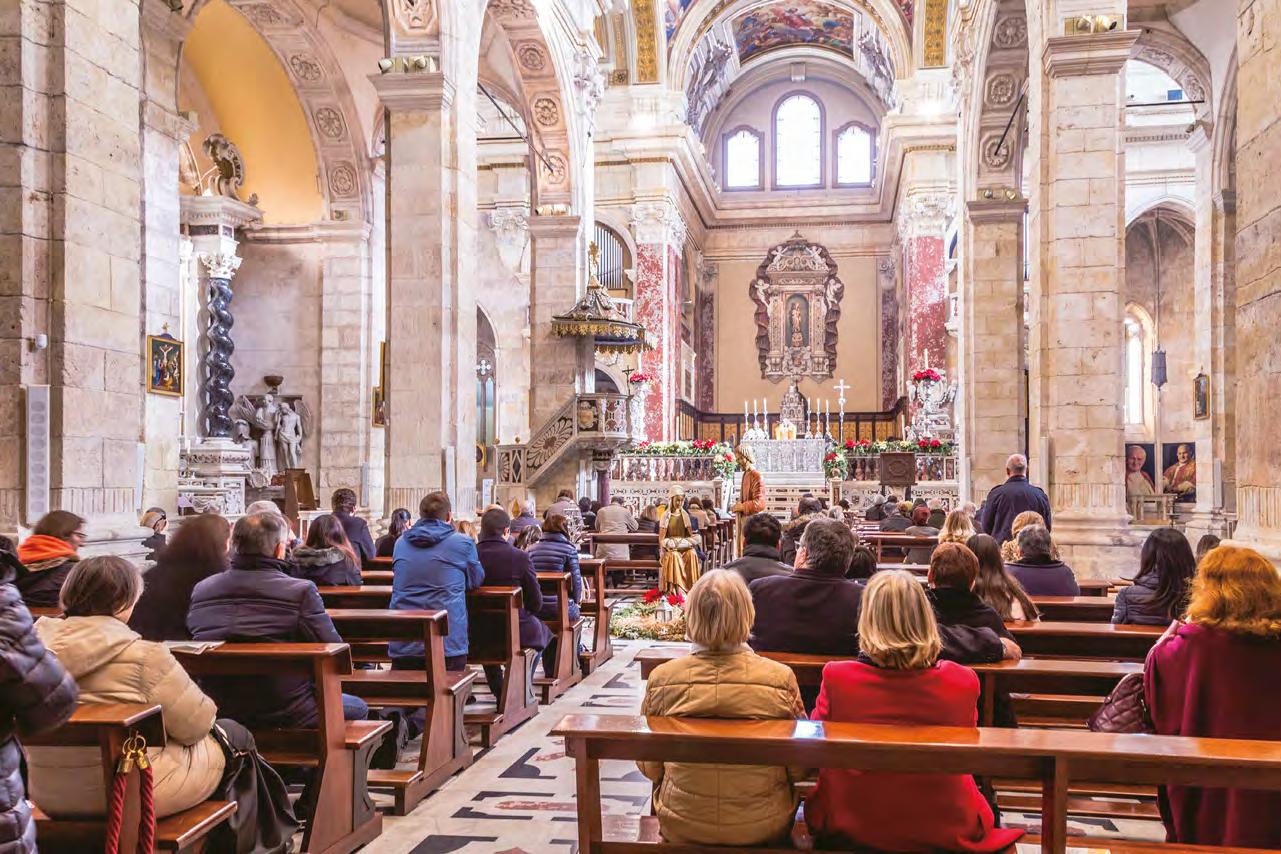



www.mipro.com.tw








100% Mad e i n Taiwan

Next-level experience
Desert Reign Church brings new digital experiences to congregants with a 9.5m x 3.4m Philips 9000 dvLED wall PPDS, TOGETHER WITH integrator partner TechArts, has reportedly delivered the largest Philips direct view LED videowall installation in North America to date, bringing transformational experiences to the in-person and at-home worshippers at the Desert Reign Church (DRC) Downey campus in California. Located 15 miles southeast of Los Angeles, the purpose-built DRC plays a central role within the local community, providing a wide range of daily services and Christian music events. As part of a campus-wide upgrade, DRC partnered with TechArts – a local (Los Alamitos) AV/IT systems integration company with specialist experience in the house of worship market – and PPDS to replace its ageing stage setup with a “unique”, state-of-the art Philips dvLED wall on the main stage.
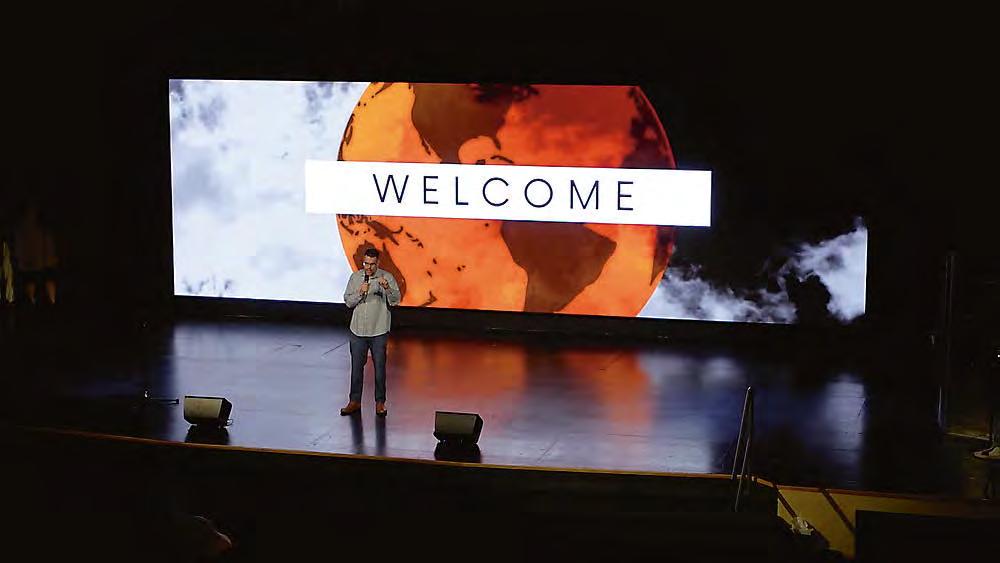
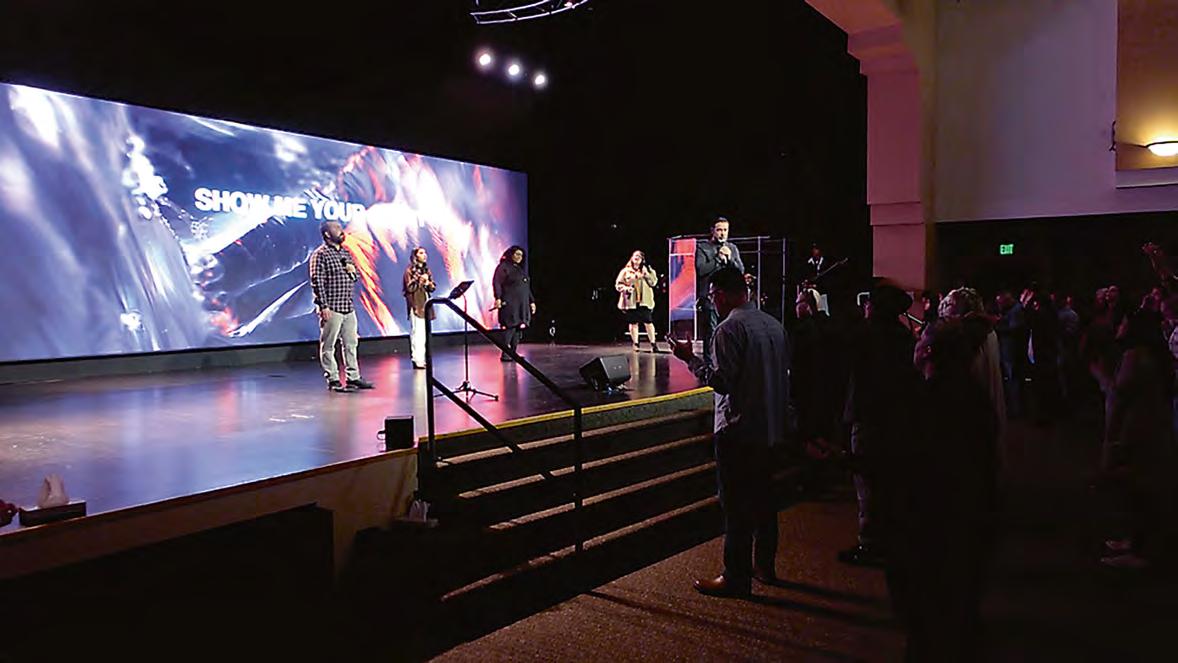
The 1.9-pixel pitch Philips L-Line 9000 LED display has brought the church’s vision to life, providing visibility for all seated and standing areas in the auditorium. Installed in under a week, the videowall was selected, in part, for its ability to help houses of worship improve viewing experiences in a variety of lighting conditions and environments. The dvLED wall features a modular sustainable design and comes equipped with remote
Active Health Monitoring, meaning future maintenance and parts replacement can now be managed and even predicted, with precise pinpointing of a problem, in real time. Troubleshooting, and all content, can be managed and controlled entirely remotely, with the Philips 9000 Series reportedly using up to 2% less energy than comparable competitor models, without impacting performance, reducing energy bills.
For added safety, the 9000 LED wall at the DRC comes with a fire-retardant design to slow the spread of flames in the event of fire, while its IP30-rated conformal coating makes it dust, dirt, fungus and moisture resistant, and certified against ingress for
reduced risk of short circuit from dust and corrosion.
Daniel Dutch, lead pastor at the DRC, comments: “In the past, I have been involved in projects that have gone well, and projects that have not gone well. This one I would rate as an A+. People were amazed when they walked in. The collaboration between PPDS and TechArts was seamless throughout and, at times, you almost wouldn’t know who was working for who when they were working here on the wall. I would encourage people to see this for themselves. We did a lot of research, we really looked around and explored many different LED walls and contractors. We found PPDS to be head and shoulders above the rest and
I’m sure others in our and other industries will be able to say the
Chuck Mitchell, CEO of TechArts, adds: “This was a unique LED project that was born out of a desire for the church to go to the next level for experience. Myself, and my colleague, Scott Clement, were able to put together a really great demonstration coordinating with PPDS and, when they saw the incredible highresolution quality from Philips, they were in no doubt this was the right solution for their needs.”
Mitchell Rosenberg, director of dvLED and videowall NA at PPDS, continues: “The result was amazing, and the wall is currently our largest dvLED install to date and our first large-scale demonstration of how we can support markets, such as places of worship, in creating a more engaging, inspiring and immersive experience. At PPDS, we’re really customer-centric – from the pre-sale all the way to postsale, we’re going to be holding our integrator’s hands and ensuring that the end customer achieves the best-case scenario. We’re incredibly proud to have worked with TechArts and support DRC in not only achieving their visions but going far beyond them.”
www.desertreign.org www.ppds.com www.techarts.net 16 WORSHIP AVL September–October 2023
PROJECTS
EM-362
Neck-worn Microphone
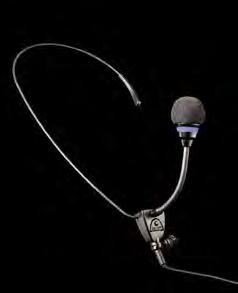
TOA EM-362, neck-worn microphone specially developed for the use by Iman during prayer. Unique design suspends the microphone in front of the speaker’s mouth optimizing speech pick up and avoid being brushed against during prayer.

We supply sound, not equipment.
TOAasiapacific www.toa.com.sg
A great revival
ACE EVENT GROUP and its subsidiary Audiomaster Technologie has selected Arbane Groupe’s ACTIVE AUDIO and APG sound systems for the interior and exterior of Notre Dame du Rosaire, Lourdes’ second basilica

France in the foothills of the Pyrenees, Lourdes became one of the most important Catholic pilgrimage sites in the world after a local girl, Bernadette Soubirous, claimed she had been visited by the Virgin Mary in 1858. Bernadette was instructed to dig in the ground nearby, unearthing a spring with purported healing properties.

The Basilica of the Immaculate Conception, also named the Upper Basilica, is the oldest basilica at the Sanctuary of Our Lady of Lourdes. Consecrated in 1876, this basilica reveals a series of stained-glass windows relating to the events in 1858.
The second basilica, Notre Dame du Rosaire, was built between 1883 and 1889, and is a RomanesqueByzantine edifice covering a surface area of 2,000m². Unlike the Sanctuary of Our Lady of Lourdes, Notre Dame du Rosaire has no stained-glass windows, but impressive mosaics covering over 2,000m². The mosaics were created by several artists, both in the choir and in the chapels (Melchior Doze, Maxime Grellet, Louis Édouard Fournier, Felip Masó i de Falp, Edgard Maxence, Eugenio Cisterna and Joseph Wencker).
18 WORSHIP AVL September–October 2023
PROJECTS
L–R: Loïc Bourgain, Rodolphe Portet, Eric Grandmougin and Vincent Fernandez
The third basilica, St Pie X, was inaugurated in 1958 to celebrate the 100th anniversary of the first apparition. This underground basilica has been built in the shape of an inverted boat and has the capacity to hold 20,000 people.

Each basilica was built in response to the growing number of pilgrims – from the first apparition to the early 1960s –and each one has a particular and unique architecture and is decorated with dedicated art. In total, there are 22 places of worship in Lourdes, covering over 53 hectares, welcoming around 3 million visitors and pilgrims


Much like ACTIVE AUDIO which acquired the majority of APG in 2016 and established the Arbane Groupe in 2020, Audiomaster Technologie has been part of ACE EVENT GROUP
hkaudio.com
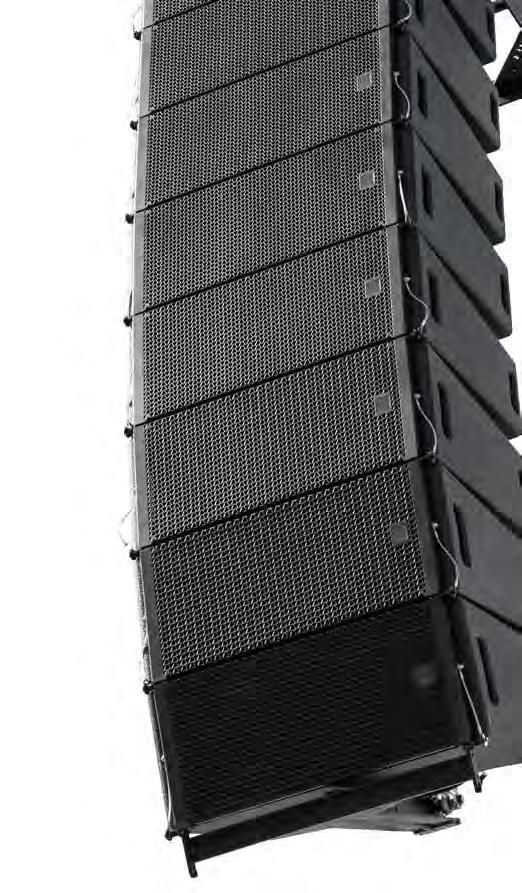

PROJECTS September–October 2023 WORSHIP AVL 19
19.07.23 10:59
Inside Notre Dame du Rosaire
for the 420m-long main driveway that leads up to the entrance to Notre Dame du Rosaire. “At this time, APG was one of the leaders in the French pro AV market,” explains Rodolphe Portet, technical sales engineer, Arbane Groupe. “I don’t think there were any products on the market that would have been suitable for this project, so we made a specific model for this location. The engineers spent nearly a year onsite to design the speakers and I think that’s exactly why they were still working 30 years later. However, they have been subject to the harsh outside elements, with Lourdes being close to the mountains and the sea, and a river running through the site. And technology has evolved over the last 30 years as well, so it was time to consider a replacement.”
ACE EVENT GROUP has installed 70 APG iX8-Os, including 36 units on the main driveway, 16 on the Notre Dame du Rosaire esplanade and 16 others on the side of the river and the grotto. It has also replaced all the amplifiers in the outdoor space. “Although they were still working, there were several racks of amplifiers; there’s now only six Powersoft Quattrocanali 2404 DSP doing the same job,” continues Portet. “Electricity consumption has also been significantly reduced thanks to new technology in the amplifiers. Plus, APG makes presets for the Powersoft amplifiers, so it made the change-over even easier.”
A Xilica Solaro processor has been installed to manage the live, 24/7 broadcast in each zone.
“The outside acoustics at Lourdes are very special,” explains Eric Grandmougin, marketing director, Arbane Groupe. “When you’re installing a sound system in difficult conditions, the first approach is to focus the sound on the public area and increase intelligibility. Here, it was totally different. The outside area at Lourdes can be compared to a classical music venue and the wide coverage of the iX8-O creates the emotion that we were looking for.”
However, it wasn’t just the exterior spaces at Lourdes that required an investment in new technology. Inside Notre Dame du Rosaire, the ageing sound system was causing problems with intelligibility and leading to some
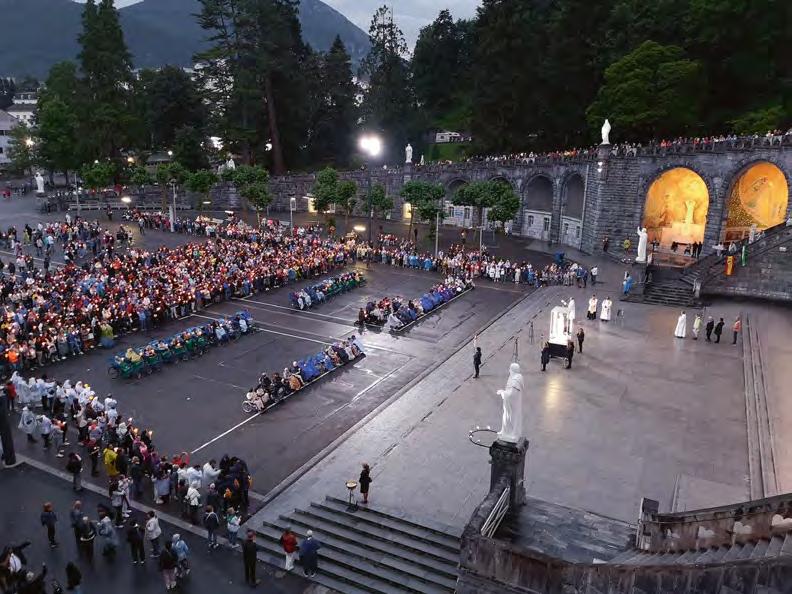

complaints from worshippers. After multiple tests, trials and comparisons between a variety of manufacturers, ACE EVENT GROUP once again turned to ACTIVE AUDIO speakers to ensure the highest levels of intelligibility inside the basilica and, perhaps more importantly, respect the architecture and especially the decorations and mosaics. “This led us to column speakers,” explains Loïc Bourgain, engineering design office at ACE EVENT GROUP. “Directivity control was mandatory to achieve better STI.”
The central dome, reaching a height of 24m, requires perfect directivity control to avoid the focusing and echo effects that impair speech intelligibility. The entire structure of the basilica, but in particular the presence of numerous smooth surfaces occupied by mosaics and the rounded shape of the chapels at the ends of the transepts, meant that reverberation time was considerable. The presence of numerous decorations and the limited number of pillars in the building resulted in the number of loudspeakers being kept to a minimum.

“It’s really important that the speakers aren’t seen by the pilgrims,” continues Grandmougin. “ACE EVENT GROUP through its subsidiary Audiomaster Technologie resulted in years of experience dealing with the different architectural challenges at Lourdes and chose ACTIVE AUDIO because we were able to provide a demonstration and show that we could cover the entire basilica – which can hold up to 1,000 worshippers – with just six column loudspeakers, which
also means less cabling. Sound is linked to emotion so it’s really important that the pilgrim is able to feel the emotion, particularly in a venue as important as Lourdes, and not be distracted by seeing the speakers. Some people are investing their lifetime savings to make their pilgrimage, so they deserve a pristine experience.”
“The aesthetic aspect was so important,” continues Portet. “The sound system is out of sight to create the minimum visual impact. St Pie X is more modern so it’s arguably more acceptable to have the speakers in view but, in Notre Dame du Rosaire, ACE EVENT GROUP has done a fantastic job of making the sound system disappear. For me, sometimes the aesthetic is more important – I know the sound system we delivered is going to work so I was more impressed with how well everything is hidden away. Speaker positions were selected first and then we fixed any problems with the sound via digital steering in the speakers. Plus, the white speakers were fixed onto a white background so we didn’t even need to colour them.”
The nave of the basilica is 30m long. The settings applied provide a 6dB reduction between the sound level in the covered area and the sound level at the back of the basilica. This attenuates the impact of reflections on the back wall. The size of the column means that the sound level at a height of 8m is almost 20dB lower than in the audience area. The impact of reflections on the dome is also attenuated. The return loudspeakers in
PROJECTS
20 WORSHIP AVL September–October 2023
Two StepArray 180P 1.8m-high loudspeakers have been installed in the nave behind the area occupied by the dome
APG iX8-Os have been fitted to the lighting poles along the driveway
The wide coverage of the iX8-Os creates the necessary emotion for outside ceremonies
ETC’s flagship line of lighting control consoles offers a sleek control interface engineered for your comfort and customization. With generous programming surfaces and the power to run complex rigs, Eos Apex is the ultimate hands-on, professional workspace – powered by the ultimate control platform.
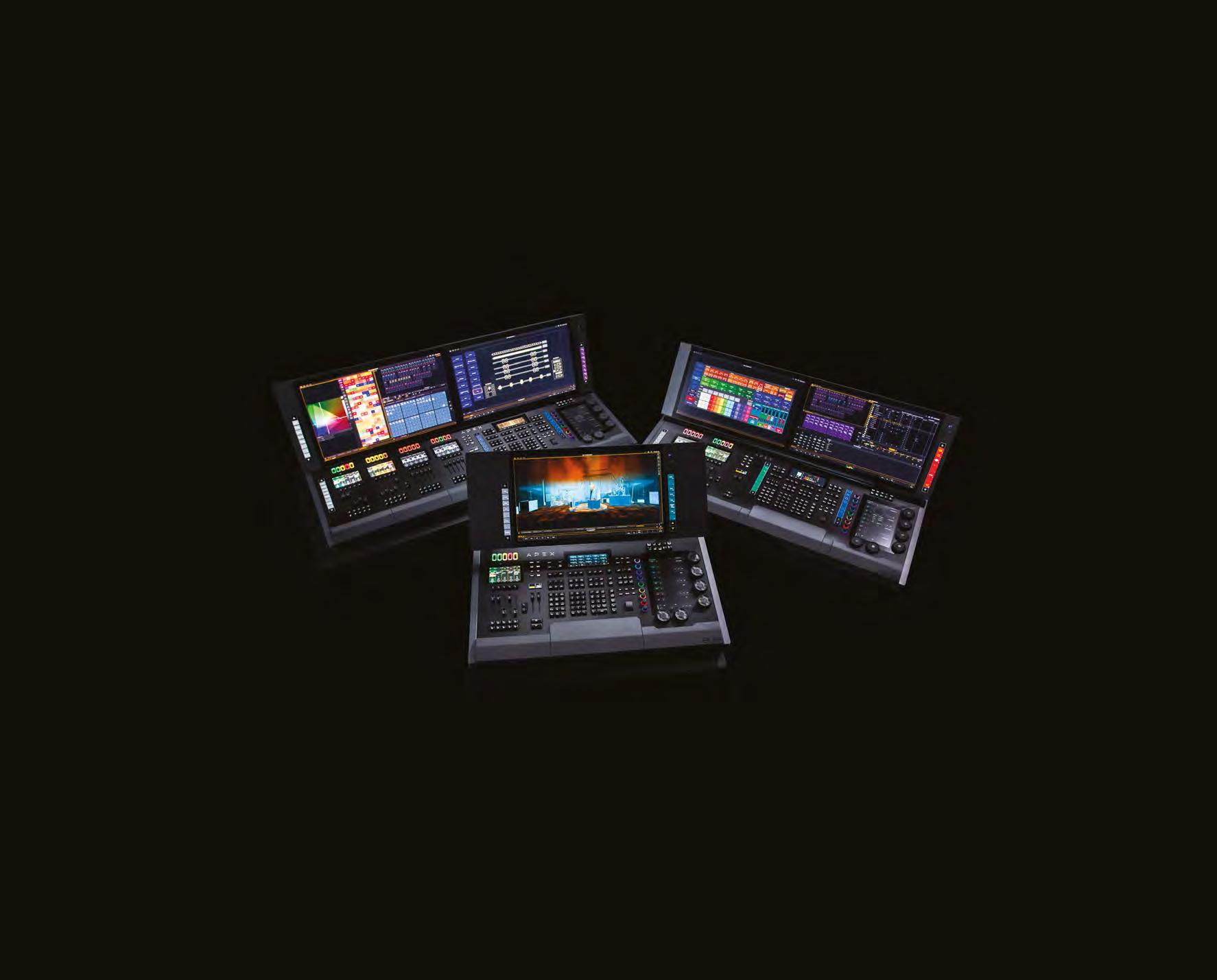
etcconnect.com/Eos
equalisation and delay settings. As for the general controls, an Allen & Heath SQ5 console accompanied by a Dante card manages the live broadcast.
This layout and the steering parameters on the speakers were chosen by modelling the sound level distribution over the different listening zones of the basilica. Steering on the StepArray loudspeakers was adjusted

“When you work in the audio industry, you can guarantee that someone will tell you things don’t sound good.”
www.ace-event.com
www.activeaudio.fr
www.apg.com
www.arbane-groupe.com
www.lourdes-france.org
visual environment technologies etcconnect.com
The luxury of complete control.
New and improved
THE BAITUL FUTUH MOSQUE IS located in Morden, south London, and was originally built in 2003 by the Ahmadiyya Muslim Community, whose UK branch was established in 1913. With its first mosque in London opening in 1926 (The London Mosque in Southfields), today the Ahmadiyya Muslim Community has over 147 branches across the UK, most notably the landmark Baitul Futuh Mosque, said to be the largest mosque in western Europe with the space to hold 13,000 worshippers. On 26 September 2015, a fire destroyed around 50% of the ground floor of Baitul Futuh Mosque’s
However, the mosque has recently celebrated its reopening following the completion of a new five-storey complex with two large multipurpose halls, offices and guest rooms. The reconstruction has provided the community with premises that are far superior and has been paid for entirely by members of the community. Renovations include the reworking of the façade with an ornate, geometric design. Hundreds of visitors, parliamentarians, diplomats, academics and representatives from numerous
charities and faith communities attended a grand reopening earlier this year. The worldwide head and caliph of the Ahmadiyya Muslim Community, His Holiness Hazrat Mirza Masroor Ahmad, delivered a keynote speech addressing the

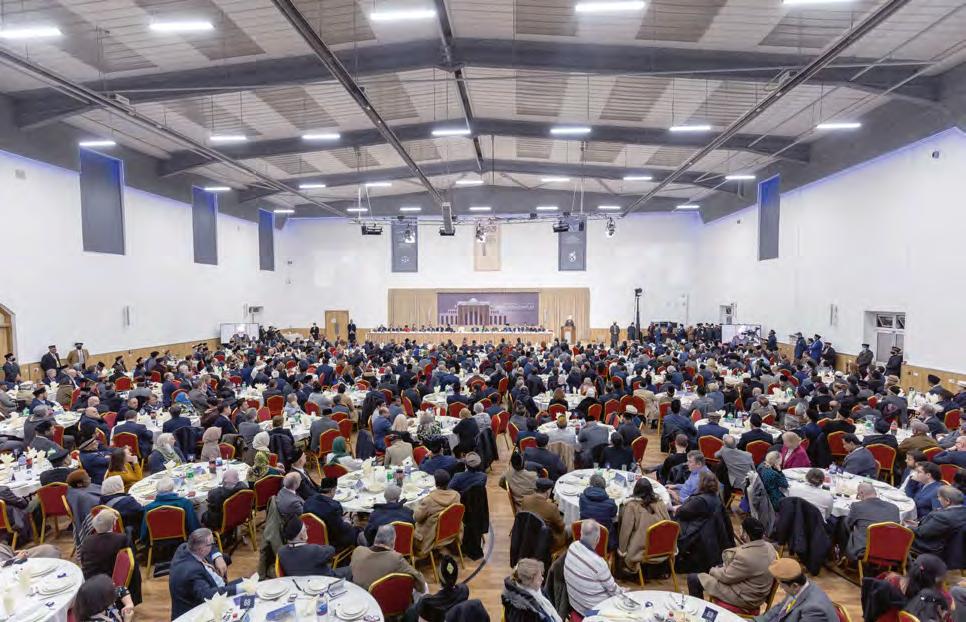
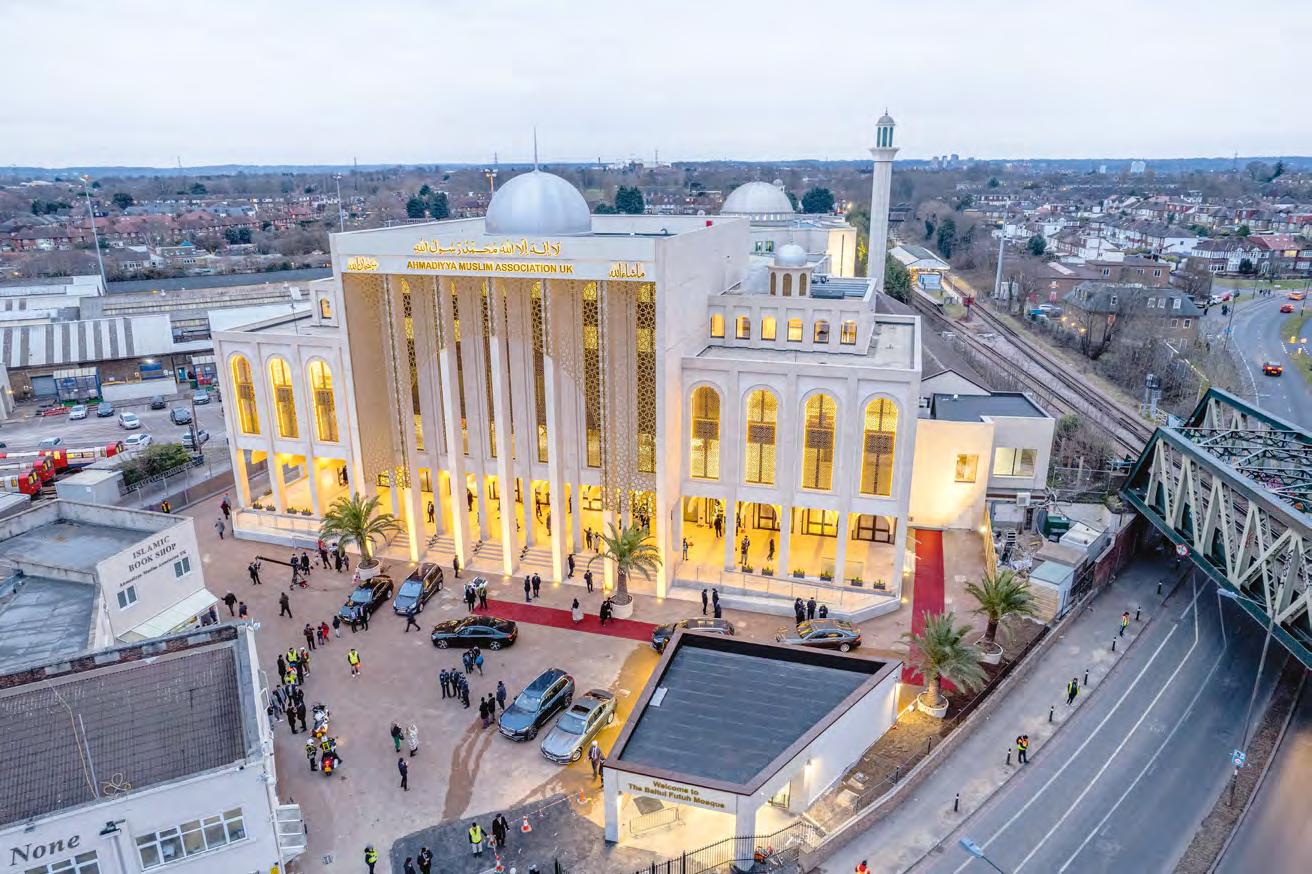
importance of striving for peaceful settlements to global conflicts.
“The Ahmadiyya Muslim Community has been a valued client for a long time – we’ve been working with them for over 17 years,” explains Andrew Williamson, director at
After a devastating fire tore through the building in 2015, the administrative wing of the Baitul Futuh Mosque has reopened following an extensive refurbishment project
22 WORSHIP AVL September–October 2023
PROJECTS
The grand reopening
Fire damage in the Noor Hall
system in the main hall was undamaged, RG Jones was tasked with supplying equipment for some of the peripheral rooms and spaces
daily prayers, the venue plays host to a wide variety of events, including conferences, weddings and educational seminars.
The mosque opted to stick to the tried-and-tested O-Line system for the new and rebuilt spaces. “They were happy with the product and we knew it worked,” explains Robert Powell, project manager at RG Jones. “It also meant that they could easily move spare pieces of equipment from room to room, so we deployed O-Line again and it’s done a good job. Long lead times were eliminated because the building project was delayed because of Covid, so we had everything in stock at the point we were able to get onsite.”
In the new Nasir Hall on the ground floor, RG Jones installed a Martin Audio O-Line PA solution consisting of two L-R hangs of 12 cabinets. To ensure smooth consistent coverage, the design specified Martin Audio’s DISPLAY software with hard avoid capabilities and electronically adjustable coverage. The company also installed 12 Electro-Voice EVID C8.2HC ceiling loudspeakers to allow flexibility for various room configurations.
are covered by 60 Yamaha VXC2FW ceiling loudspeakers, wired in groups. The external colonnade is covered by seven Yamaha VS6W wall-mounted loudspeakers and 12 Yamaha VXC2FW ceiling loudspeakers.
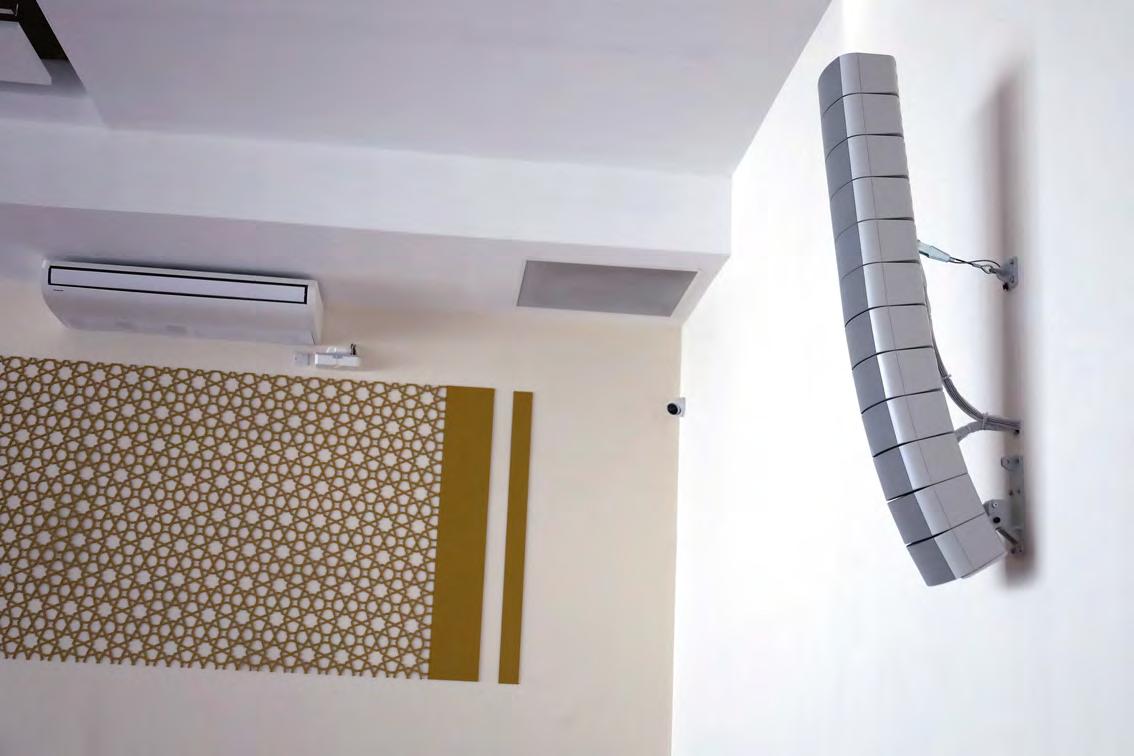
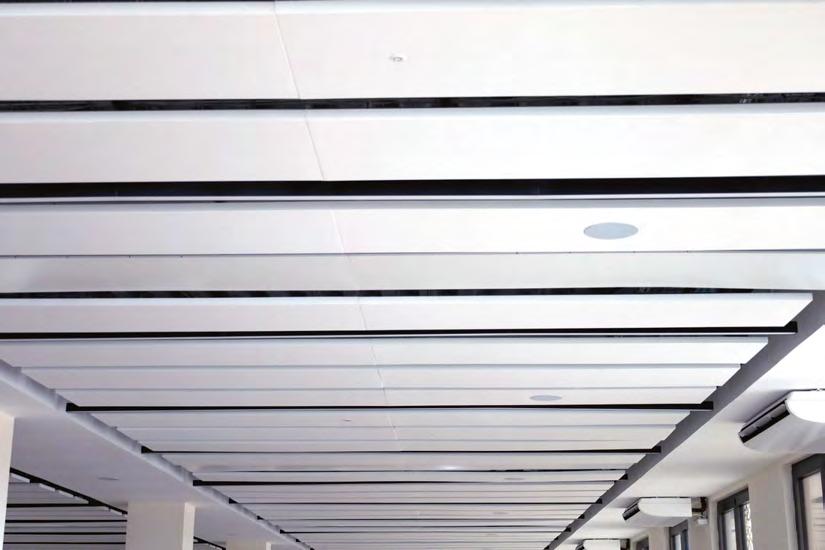
The AV system uses Netgear M4300 AV switches distributed around the complex linked via multimode fibre. It consists of a Q-SYS 510i core paired with multiple Q-SYS QIO-ML4i network audio expanders to allow inputs into the system along with Yamaha and QSC amplification which are fed using Dante and Q-LAN protocols. Control of the system is achieved using Q-SYS touchscreen wall controllers and
At the time that the rebuild was being designed, RG Jones was involved with other large-scale projects, so it enlisted the help of Roland Hemming from RH Consulting, a company that it has been working alongside for over 20 years. “Roland designed the whole system so that whatever is happening in the main multipurpose hall can be relayed to all the areas in the mosque and in the new building, so it’s just one huge relay system,” continues Williamson. “But it also means that the different internal spaces can all be used independently as well.”
For this project, RH Consulting designed and specified the system, worked with the construction
the parts of building that have been expanded with the new design. “It’s a large-scale system in there now,” continues Williamson. “Everything installed had to be linked into the PA system in the main multipurpose hall – multiple floors, multiple
In the new Noor Hall on the first floor, RG Jones installed 28 Monism MNS-6A11CS-IP Dante ceiling loudspeakers. Having networkbased loudspeakers allows the system to account for the various room configurations. All the general areas, corridors, WCs and offices
building,” continues Powell. “When the next phase of work takes place, the decoders and encoders will be placed in fixed positions along with relay screens and projectors in the overflow areas that are used when the main prayer hall in the mosque is full so that they can be used for daily and weekly prayers rather than just for special events.”
The video distribution around the complex is achieved using Visionary’s Duet2 encoders and decoders. These are deployed around the site using network ports to allow 4K UHD video-over-IP along with Dante audio to feed into the site-wide system and be routed accordingly. The new development is also linked to the original mosque system via the sitewide network to allow video and audio to be sent and received between the two buildings. To achieve this, RG Jones specified a Q-SYS I/O flex and Visionary Duet2 encoders and decoders.
and Richard worked with the RG Jones team to commission the systems. (Richard was the first person in the UK to be Q-SYS qualified.) The designs were intended to be as flexible as possible as the areas could have many possible uses. We used an extensive IP infrastructure for video and audio connections, control screens and a fair number of PoE Dante loudspeakers. We also designed the system to expand, including cables to blanking plates to allow for additional control and connectivity options in the future.”
With further upgrade plans in the pipeline and some services already spilling out into the car park, it doesn’t sound like it will be long before RG Jones will be called back to Baitul Futuh Mosque again.


www.ahmadiyyauk.org
www.rgjones.co.uk
www.rhconsulting.uk
PROJECTS September–October 2023 WORSHIP AVL 23
L-R hangs of 12 Martin Audio O-Line PA speakers in the Nasir Hall
Monism MNS-6A11CS-IP Dante ceiling speakers in the Noor Hall
Bringing order to chaos
Immanuel Church in Chicago has turned to MSE Audio and its SoundTube LA880i-II and LA808i-II line array systems
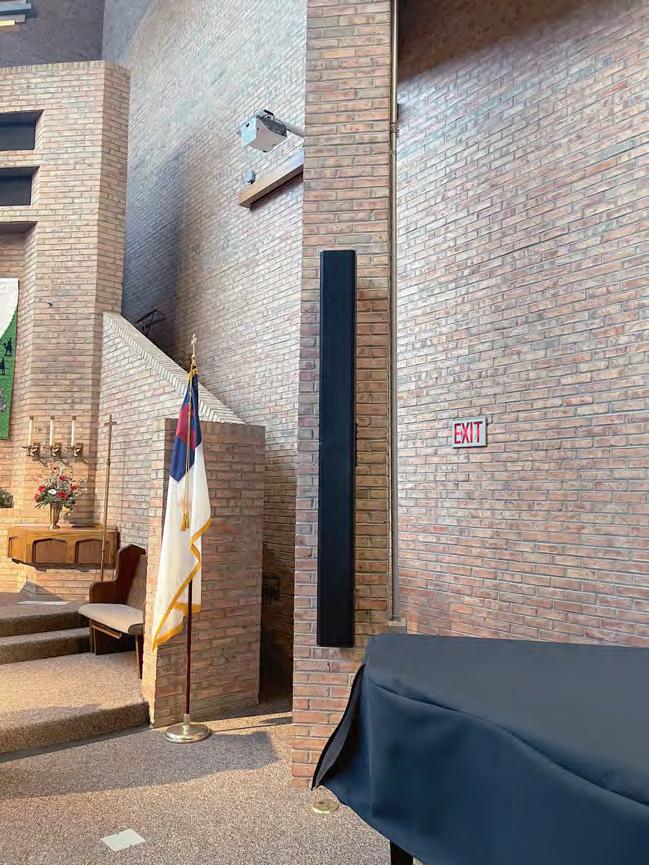
OVER THE PAST FEW YEARS, Immanuel Church in Chicago, like many other houses of worship during this time, has slowly updated its sound system to accommodate livestreaming and audio presentation needs. Unfortunately, the additions were reactionary with equipment randomly installed throughout the sanctuary – there wasn’t a master plan in place.
When it was time to replace the 30-year-old main speakers, the decision was made to relocate all the equipment to a single location for ease of operation and to better use the sanctuary’s limited space.
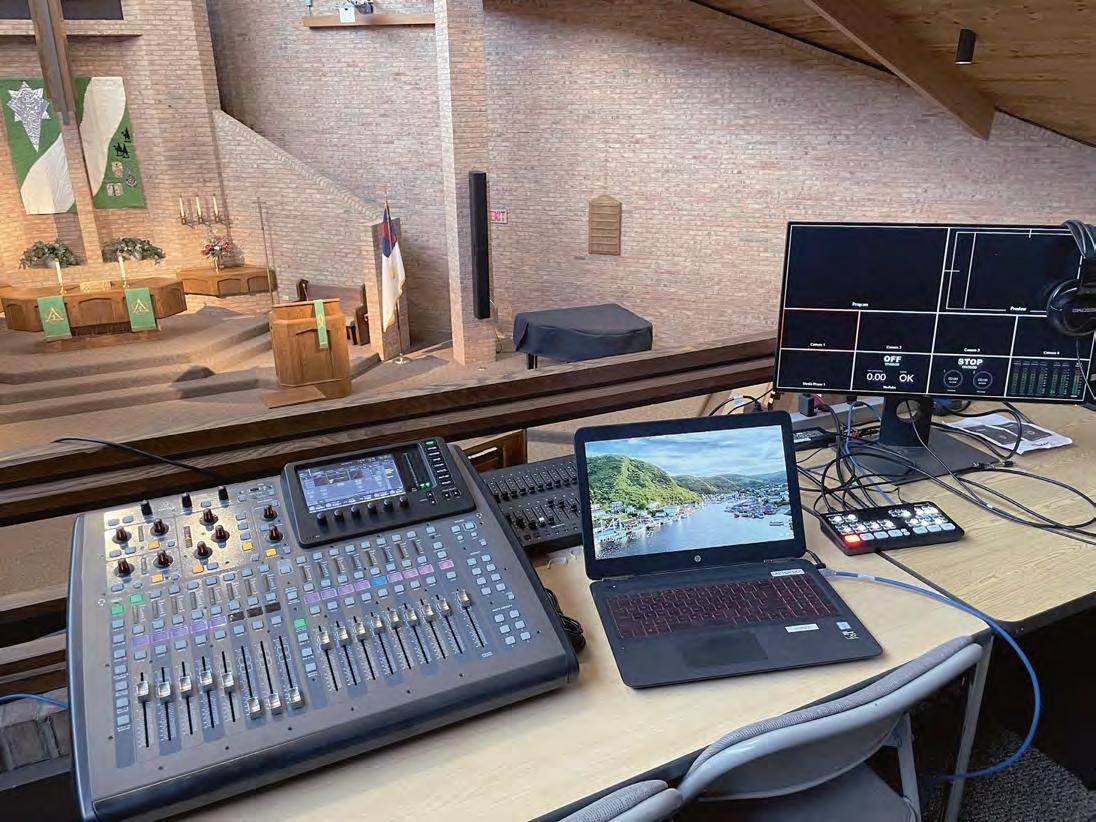
“Immanual Lutheran contacted me regarding a sound system upgrade in the sanctuary. The church had a big wish list and a limited budget,” says Todd VonOhlen from AV specialist, TV Sound. “The old three-way speakers had very spotty coverage of the main floor and balcony areas. The church wanted more uniform coverage of both of those areas, while at the same time addressing the acoustic challenges of the brick and glass surfaces in the sanctuary.
“I have known Tom Parnell of Next Generation Marketing, the local MSE Audio representative, for many years. I have installed MSE Audio
products in multiple projects,” continues VonOhlen. “When I was first approached about this project, I considered steerable arrays. These would have been costly, and recent supply chain issues have made them hard to obtain. Tom suggested that we listen to a demo of the SoundTube LA880i-II/LA808i-II line array system. Church officials were impressed with the overall sound quality and the uniformity of coverage on the main floor and the balcony.
“As with many projects, budget was a challenge. In addition to new speakers, the church wanted new wireless mics and a complete rewiring and relocation of the sound and streaming systems. As the original speakers were 70V, existing speaker wires were severely undersized, so new wiring needed to be installed in new pathways. The church sought a solution that would suit their needs for the foreseeable future. The SoundTube line array (LA series) dispersion and efficiency meant fewer amps, at lower power, for greater efficiency.”
Satisfied with the LA880i-II performance during the demo, the church heeded VonOhlen’s advice.
The addition of the LA808i-II improved the performance of the
LA880i-II, providing crisp audio with uniform coverage on the main floor far-field performance to create clear maintains a more consistent ratio of array height to radiated wavelength with frequency tapering of low- and provide a stable vertical beamwidth. The LA808i-II is designed to extend low-frequency vertical directivity from the LA880i-II line array, which helps can either be placed directly above or “In addition to the great coverage, extended high-frequency response perfectly suited the desired mounting location,” concludes VonOhlen. “As quality and coverage blew the client away, and I appreciated the pricing
soundtube-int.mseaudio.com
24 WORSHIP AVL September–October 2023
PROJECTS
The Behringer X32 digital mixer at FOH
The LA880i-II provides very short near-field extent
3000 Ser ies Net work Syste ms
Scan, Plan, Deploy and Monitor
• Class-leading, extremely wide 60 MHz UHF tuning bandwidth for maximum versatility
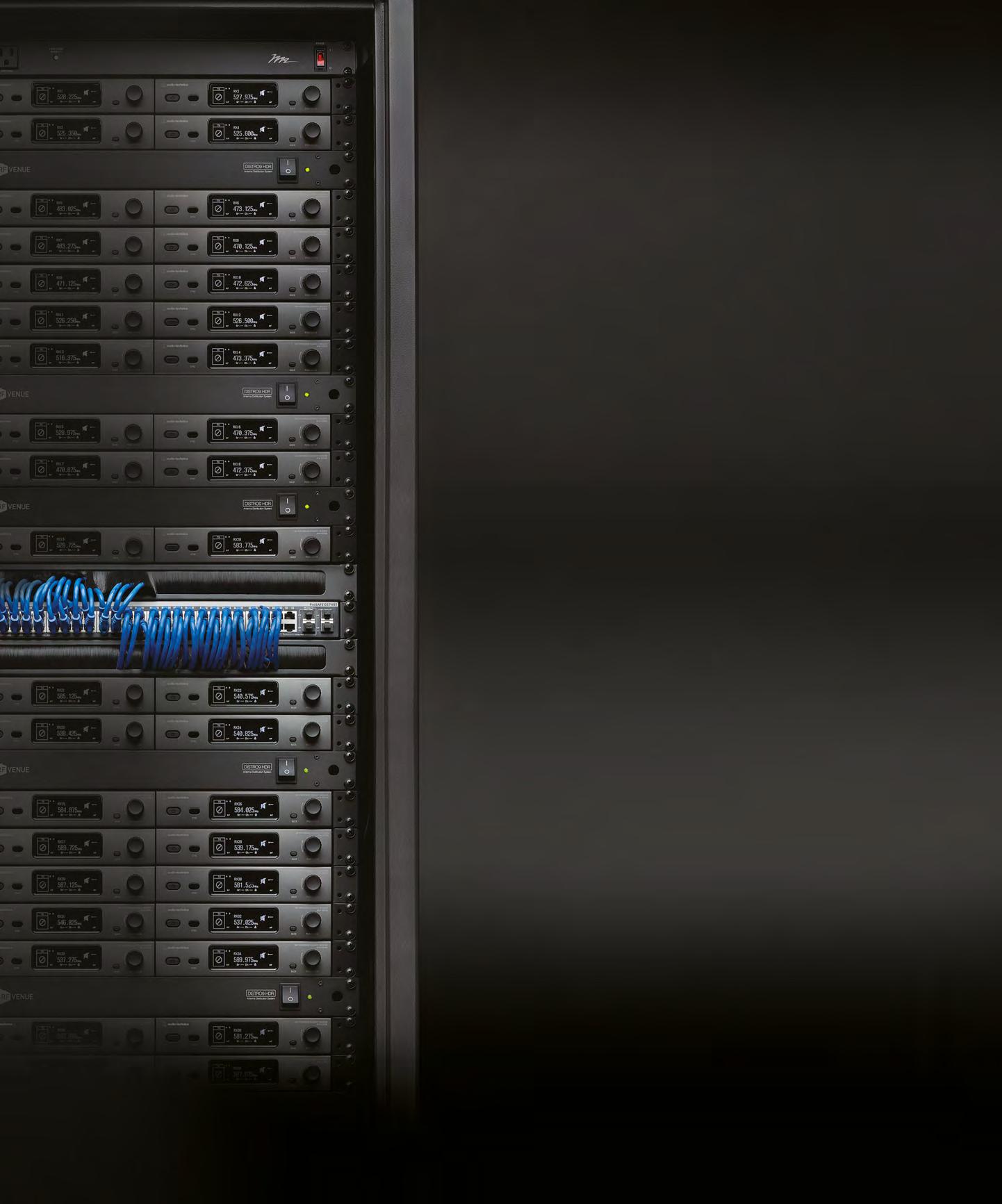
• Unique multifunction button on the handheld and body-pack transmitters can be used to switch to a backup frequency should interference be encountered
• Automatically adjusts squelch setting to maximize range while minimizing interference
• Optional network transmitter charging docks
• Frequency scan and IR sync for ease of setup
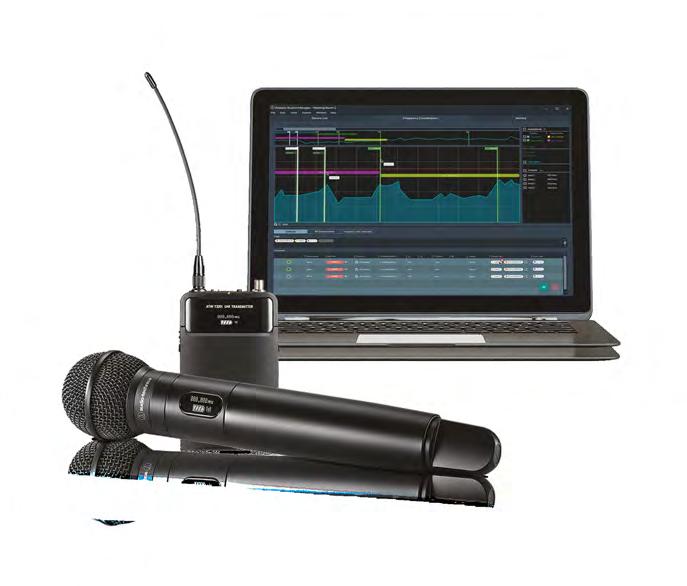
•
Handheld transmitter offers industry-standard thread mount for use with six interchangeable A-T microphone capsules, as well as other compatible capsules
11 Ubi Rd 1, #06-01, Singapore 408723 Tel: +65 6749 5686 | Fax: +65 6749 5689 | sales@audio-technica.com sg | sea.audio-technica.com
300 0 Se ri es N etw or k systems are compatible with A-T Wireless Mana ger Audio -Techn i ca (S. E .A) Pte Ltd
Keeping the right balance
Musicians at San Antonio’s Community Bible Church have gained a new lease of life thanks to KLANG:technologies
FOUNDED IN 1990, SAN Antonio’s Community Bible Church (CBC) has quickly grown into one of the largest houses of worship in the region, seating 3,500 at each of its five weekend services. The church’s energetic worship band are skilled and enthusiastic but, like many live musicians, they encounter the often-challenging world of monitors, trying to balance their individual mix needs with making their own onstage audio experience as fresh as possible to keep their performances at a high level. That got a lot easier recently, after the church installed a new KLANG:konductor to offer immersive IEM mixes for the seven vocalists and six musicians, as well as their musical guests and worship leaders. The new KLANG:konductor, purchased through pro audio retailer AVLX of Franklin, Tennessee, has been fully integrated into the HOW’s audio infrastructure by
the church’s own audio team, and has reinvigorated the band’s monitoring experience, giving them “a new lease on their sonic life,” says AJ Lebron, CBC’s director of audio and production coordinator for events.
“I’ve been running sound at the church for about 14 years now and I’ve come to know the band and have seen how much time and energy they’ve had to spend on getting their in-ear monitoring just right,” Lebron
4-channel multicore solutions

adds. “I noticed that the mixes were becoming stale and they were regularly experiencing ear fatigue. They had stereo mixes, but they were sounding onedimensional. They needed more space and dimensionality in their monitor mixing. I’d heard about the KLANG:konductor and checked out a demo at AVLX, and I loved it. I thought it was exactly what we needed.”
Lebron also ordered a DiGiCo DMI-MADI-B card, which is plugged into the KLANG:konductor’s rear panel, to interface with the church’s existing Avid S6L-24C monitor desk. While that console will stay in place for services to provide additional functionality, such as muting and EQ for guest vocalists and pastors, the KLANG:konductor has taken on the primary monitor-mixing tasks.

But for the dozen-plus musicians and vocalists onstage, the KLANG:konductor has been
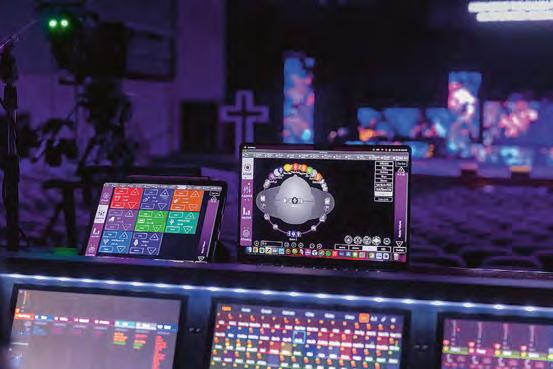
26 WORSHIP AVL September–October 2023
PROJECTS the signal masters klotz-ais.com CATLink
Mic, Line, AES and DMX over CAT5/6 cables
CATLink TRUSS parallel I/O stagebox XLR-3 or XLR-5
CATLink RACK stagebox rack units XLR-3 or XLR-5
CATLink MINI signal I/O adapter XLR-3, XLR-5, TRS
CBC is one of the latest North American houses of worship to adopt KLANG’s immersive IEM mixing platform
described as a game-changer. All of them are able to manage the mixes of their Sennheiser G4 IEMs at an incredibly granular level, dialling in exactly the individual mixes they each want to hear, but also doing so using KLANG’s immersive mixing technology. “We did a twohour training
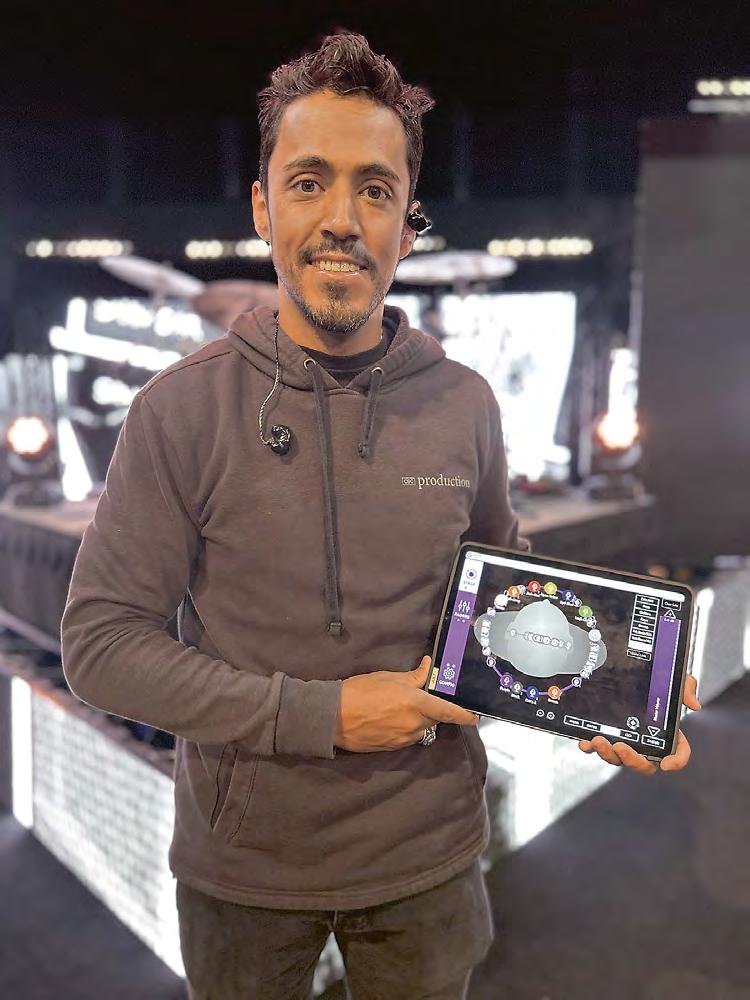
with them using their own iPads for control and you could see the difference the solution was making – they love it,” Lebron explains. “Guests onstage can still opt to use the system in stereo, so it’s familiar to anyone who wants to go ‘old-school’, but that’s pretty rare. It’s easy to install, easy to use and we got a great result. KLANG:konductor was the way to go.”

www.avlx.com
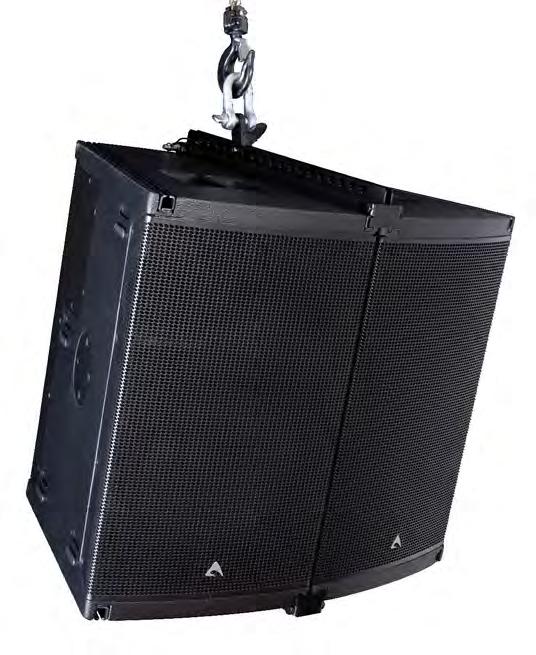
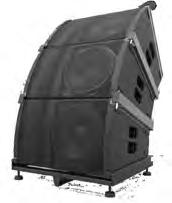
www.klang.com
Constant Curvature Array Element
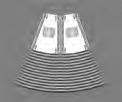
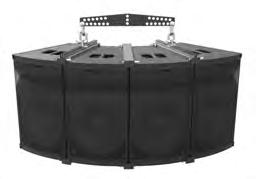
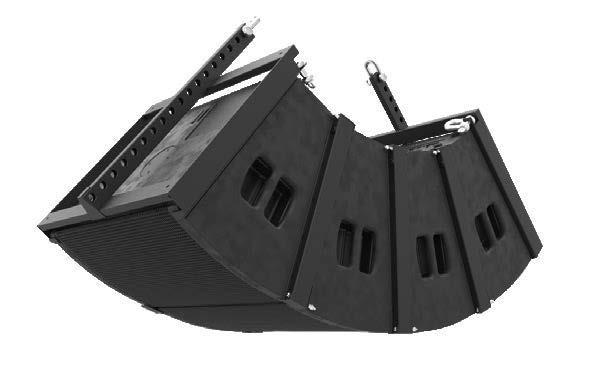
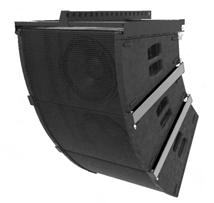
PROJECTS Build Up your Horizontal, Vertical, Down firing or Stacked Array, in 20° building Blocks ONE SLICE MANY POSSIBILITIES Seamless Transition Waveguide STW www.axiomproaudio.com
AX1012
AJ Lebron onstage with an iPad running KLANG:app
One of CBC’s vocalists adjusting their mix
No escaping sound
in east London, it was the first time it had deployed the system in a house of worship.
Ritchie Nicola, Hire Frequencies’ head of installations, said: “We had first considered using O-Line [Martin Audio’s micro-array]. But there was no space for scissor lifts or cherry pickers, and some of the joists were 7m high. They didn’t really want a bigger line array due to aesthetics so, when I mapped out my options in EASE Focus and looked at the simulations, everything pointed towards CDD, as the services also have a high music content.”
The solution has provided the church with evenly distributed coverage which had been the main priority. Nicola recalls that on his first site survey, he identified an existing sound system that was badly positioned, with little regard for the fact there was a mezzanine running round two sides. “There was just a series of 12-inch boxes which

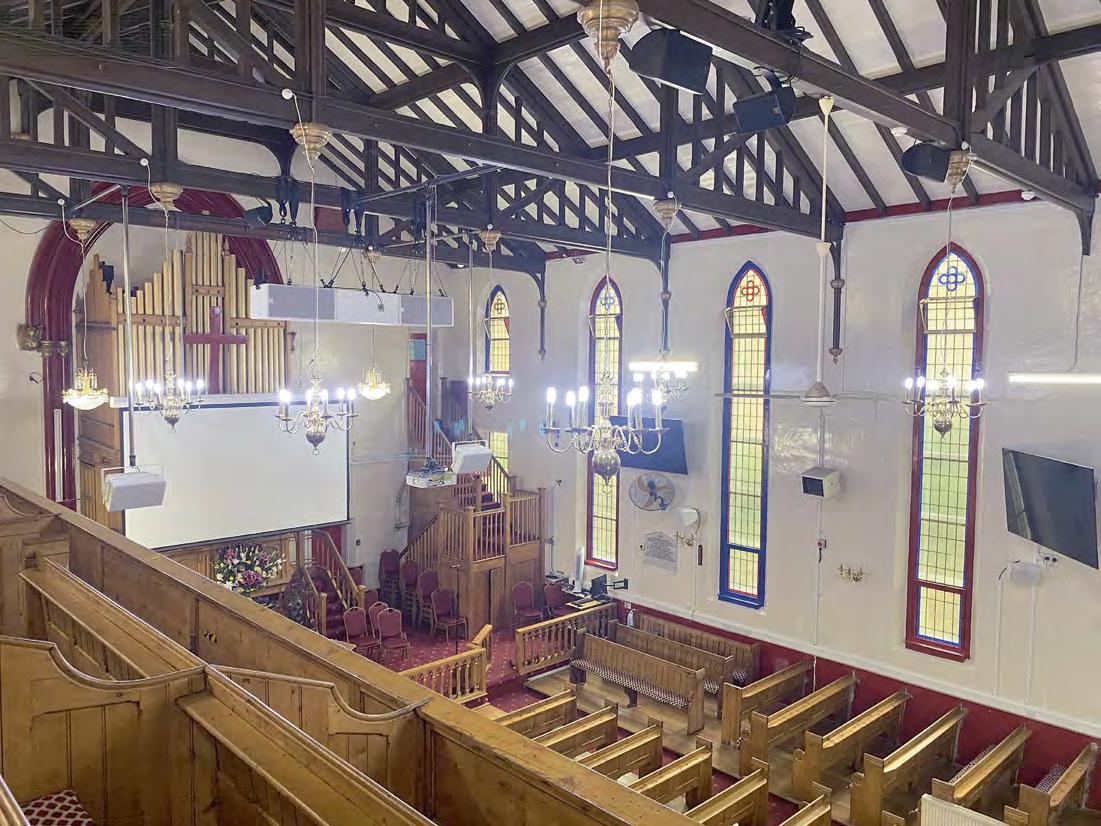
they had to turn right up to get any coverage from – and then they were getting complaints about the noise.”
It could be argued that excess volume is endemic to the worship of pentecostalists, with a high content of gospel, spiritual singing and rejoicing, fuelled by a house band comprising organ, guitars, drums, tambourines, maracas and bass.
He looked right across the CDD series, with its coaxial differential dispersion technology, when seeking the optimum solution. “I have always loved the sound of CDD. Often clients will request other brands, but my only interest is in making the place sound good.”
Using a mixture of black and white speakers (black to blend in with the high beams; white to suit the aesthetic within the eye-line), Nicola has flown three white CSX212W-F installation subwoofers in a cardioid pattern above the CDD12s –mounted on Unicol poles from the rafters, which form the main PA. To this he added two CDD8, mounted to the joists pointed at the congregation in the back mezzanine. Two CDD6 at the rear act as delays for the back rows downstairs and two further CDD6 ensure the side mezzanine is catered for. Two white CDD5 are mounted behind the
complaints now there is no longer a need to fire the speakers up to the maximum. “There is now hardly any sound escape with the doors closed,” adds Nicola.
“I cannot express enough how impressed I am with Hire Frequencies and the positive impact that they have had,” concludes Smith. “From start to finish, they went above and beyond to ensure that our church was not just happy, but delighted with their support. They have created a transformed environment, and the flawless sound quality and seamless technical support have contributed greatly to the overall success of our growing ministry. Our congregation are thoroughly impressed, and expressed their appreciation for the immersive and engaging atmosphere that has been created by the new sound system.”
Hackney Pentecostal Apostolic Church has refitted its sanctuary with a Martin Audio CDD system to provide even coverage and minimise sound leakage
www.martin-audio.com 28 WORSHIP AVL September–October 2023
PROJECTS
A mixture of black and white speakers were selected to match the décor
Two CDD12 have been mounted on Unicol poles from the rafters
sounds as good as it looks
DQOR® SERIES
TWO-WAY INDOOR/OUTDOOR INSTALL LOUDSPEAKERS
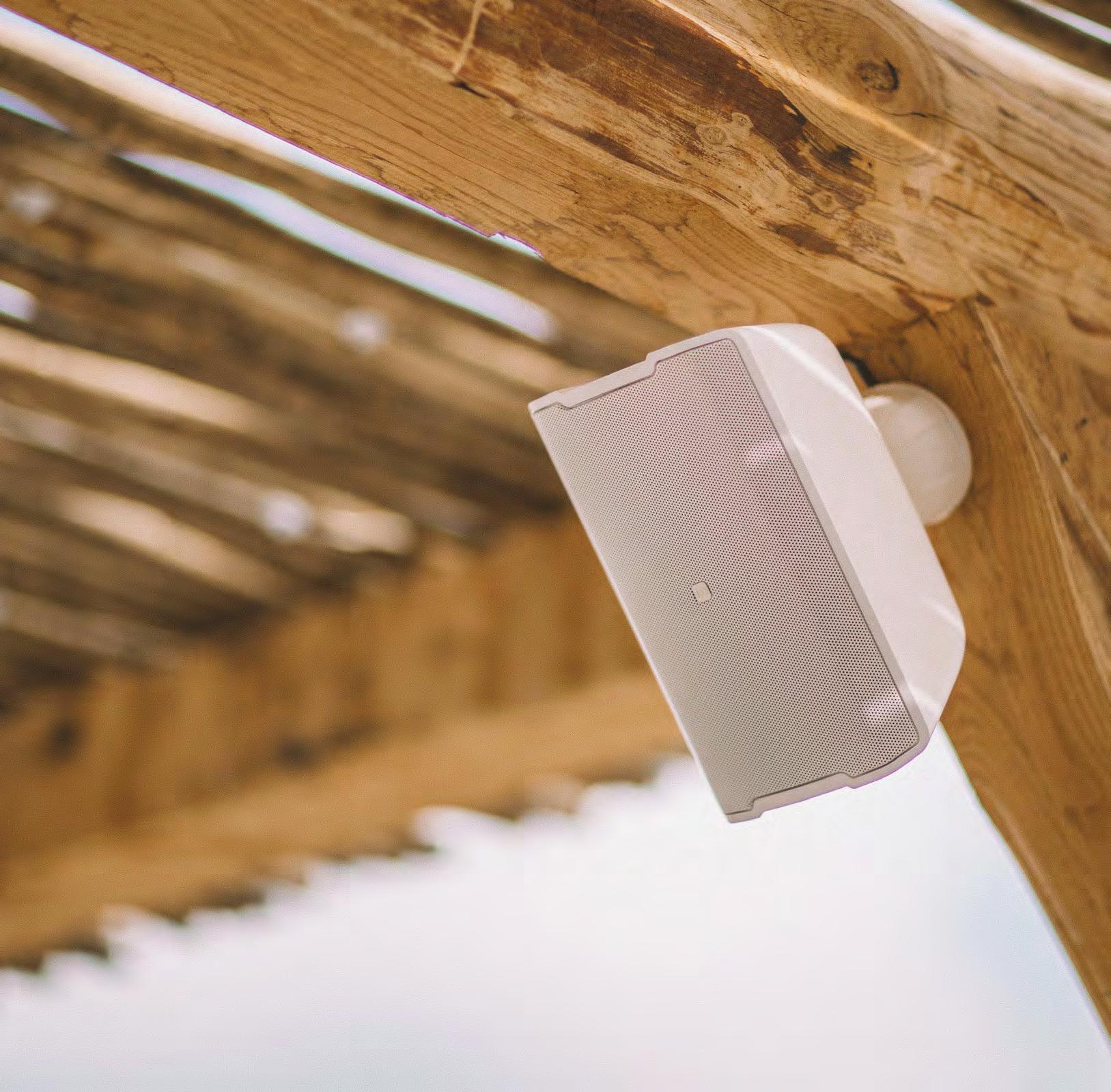
Encourage your customers and guests to linger for longer with great sound. Thanks to their wide coverage angle and balanced sound, DQOR speakers provide an inviting ambience whether indoors or outdoors. These modern and dynamic looking installation speakers are available as 3”, 5” and 8” versions in black or white and respectively with two connection variants: low impedance (8 Ohm), or high impedance (70V/100V/16 Ohm) with multiple power taps.
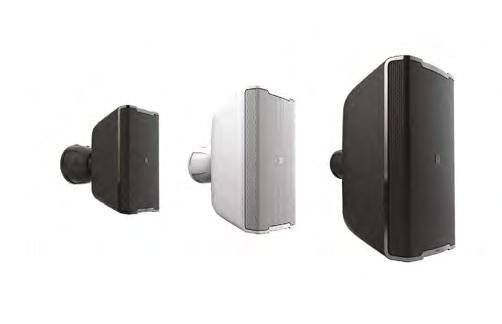
ld-systems.com/dqor LD Systems® is a registered brand of the Adam Hall Group. DESIGNED & ENGINEERED IN GERMANY
How to avoid handling noise
the microphone designed for handheld use exhibits less noise. Other sources of unwanted noise can be finger rings clicking against the housing. The equivalent SPL (peak) is 80dB for the 4011A and 61dB for the 2028. This shows that the handheld design provides much better damping of this clicking.
The cable
The cable is attached to the microphone via the connector. Usually, the cable attachment is a somewhat rigid fixation applied by soldering the leads and the screen. Furthermore, a cable relief is made to strengthen the attachment, so it does not harm the soldering. The connector has three pins which usually fit into spring-loaded sockets to retain
shape must be comfortable. Additionally, surface friction is vital – the surface must not be slippery. Therefore, the surface is treated to provide adequate friction between it and the hand holding it.
To set some focus on this critical issue, measurements have been made on how rubbing affects the microphone pickup. If a thumb is pressed too firmly against the housing and is then forced to move towards
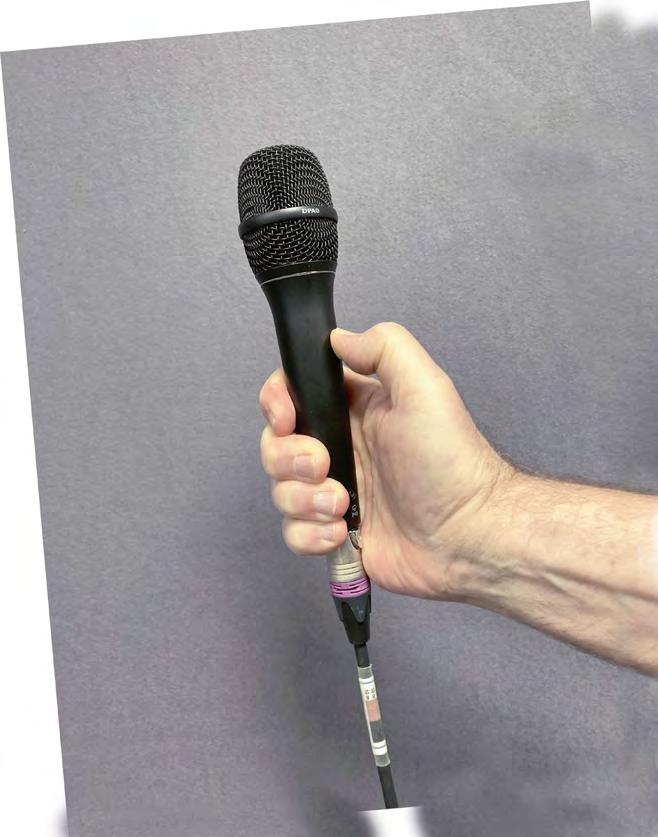
the microphone head, due to friction, the finger does not move smoothly but makes small “jumps” across the surface. This results in impulses generated by the microphone. We analysed what these impulses may look like on two different microphones – a 4011A cardioid microphone and a 2028 handheld vocal microphone. The absolute peaks from this rubbing can be compared to an equivalent SPL (equivalent SPL is the SPL that would produce a signal of the same magnitude as the rubbing does). In this case, the equivalent peak levels are 113dB SPL for the 4011A and 97dB SPL for the 2028. After analysing the frequency content of these impulses (see Figure 2),
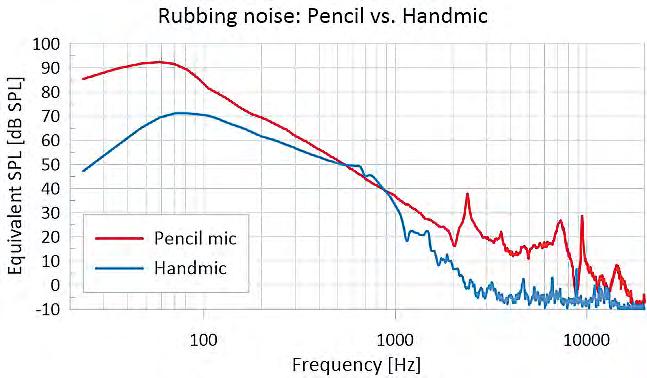
a proper connection. The level of cable noise is usually negligible in good, flexible microphone cables compared to the rubbing noise. However, thick cables, used outdoors in cold weather, can transmit some noise.
Conclusion
All mics can pick up handling noise, but a good handheld microphone is designed to pick up less of it. Make sure to use a mic that is comfortable for the user to hold (handheld mics for handheld use). And the best advice is to ensure that the mic is held properly so that it doesn’t create this kind of noise.

KnowHOW
www.dpamicrophones.com 30 WORSHIP AVL September–October 2023
Figure 2
Figure 1
DPA Microphones examines how handling noise can disrupt audio


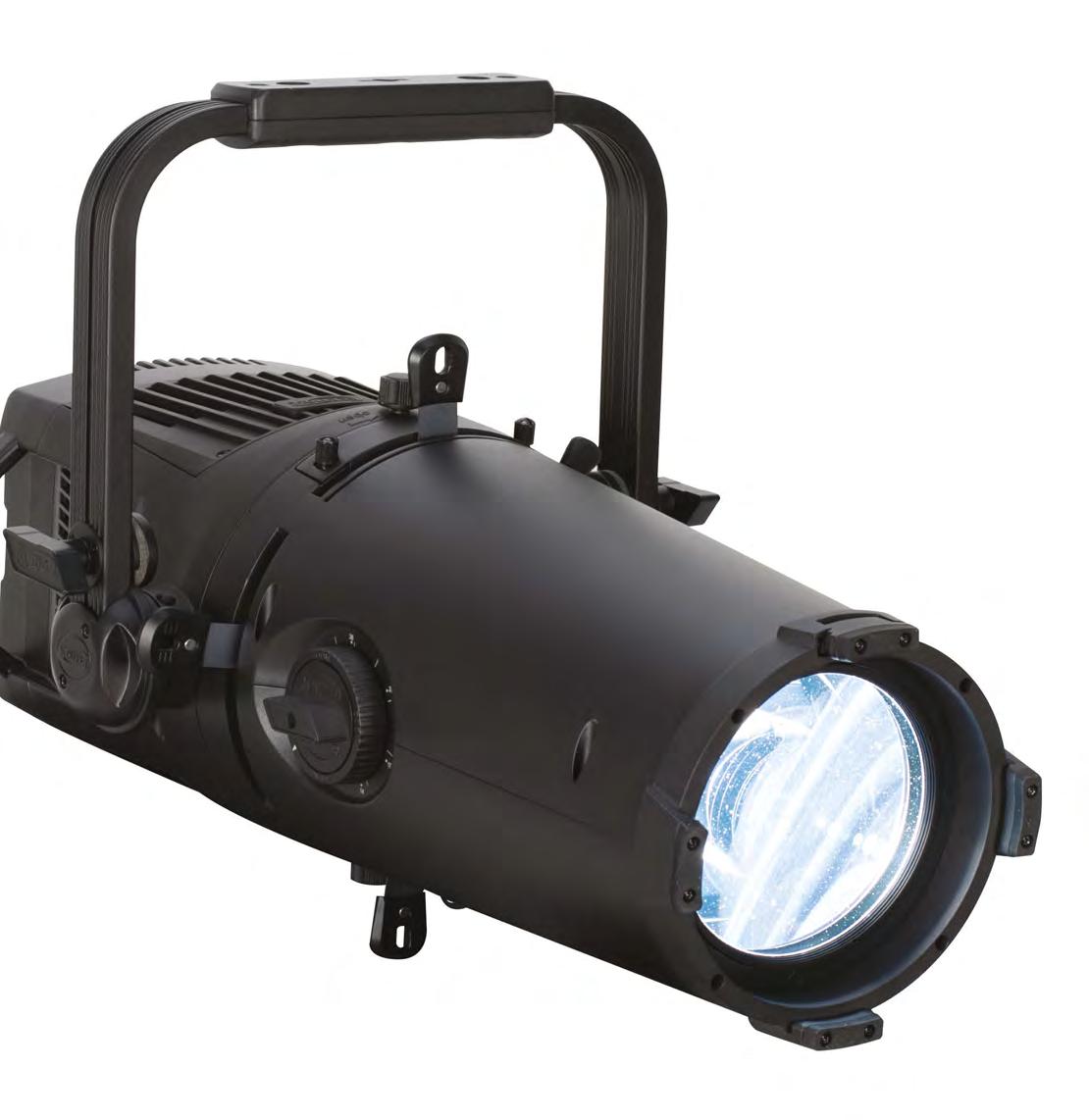








www.ElationLighting.com Discover Elation’s Full Spectrum RGBMA Series of fixtures. Make Your Message Inspiring Exceptional Memorable SCAN FOR INFO SCAN FOR INFO SCAN FOR INFO Book your demo today: sales@elationlighting.com FULL SPECTRUM . Beautifully Vibrant Saturates . Subtlest of Pastels . Precise Tunable Whites
Overcoming perceived limitations of distributed videowall technology
VuWall CEO Paul Vander Plaetse looks at how videowall technology can integrate multiple networked processing nodes or appliances to create a single canvas
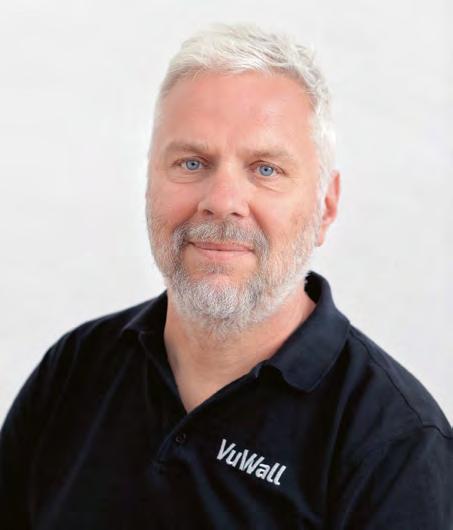
THE GROWING POPULARITY OF distributed videowall technology is supported by many factors, including the increased demand for large yet costeffective videowalls, the demand for solutions that are flexible and scalable, and the adoption of AV-over-IP technology. Compared to traditional videowall technology, a distributed videowall promotes increased scalability and flexibility. It offers the possibility to integrate multiple networked processing nodes or appliances working together to create a single canvas.

Advantages
Distributed videowalls provide many unique advantages over traditional videowalls that use Windows-based or
FPGA-based technology. Here are some of the main advantages:
z Scalability: a traditional videowall is limited in size. It is based on the number of cards or modules that can fit in an enclosure or chassis; meanwhile, a distributed videowall is incredibly scalable – the size is theoretically unlimited. To expand a distributed videowall, simply adding another node for additional outputs or increased processing power is easy, much more feasible and more costeffective.
z Reliability: a hardware failure with traditional videowall controllers will affect an entire videowall and would result in losing visibility of the entire videowall. Fortunately, a hardware
KnowHOW
32 WORSHIP AVL September–October 2023
VuWall CEO, Paul Vander Plaetse
Choosing a distributed videowall means that the size is theoretically unlimited
Image courtesy of Discovery Church
failure in a distributed videowall would only affect the portion of the wall powered by the specific node that failed.
z Cost-effectiveness: the overall cost of a distributed videowall is significantly lower due to reduced hardware requirements. A distributed videowall eliminates bulky hardware and reduces the requirements for cables and extenders since the small form factor of the nodes allows them to be mounted directly behind the displays instead of being installed in a distant rack. These nodes only need to be connected to power and to the network, which also removes the need for high-resolution video extenders.

Limitations
Despite the advantages of distributed videowalls, there are still some perceived limitations, but all of these can be overcome with the right solutions. Here are some of the perceived limitations that you don’t need to worry about:
z Confi guration and
appliance or node is driving a single display, a distributed videowall results in more devices on a network. When looking for a distributed
controllers. It is an important aspect to consider when selecting the right distributed videowall technology.
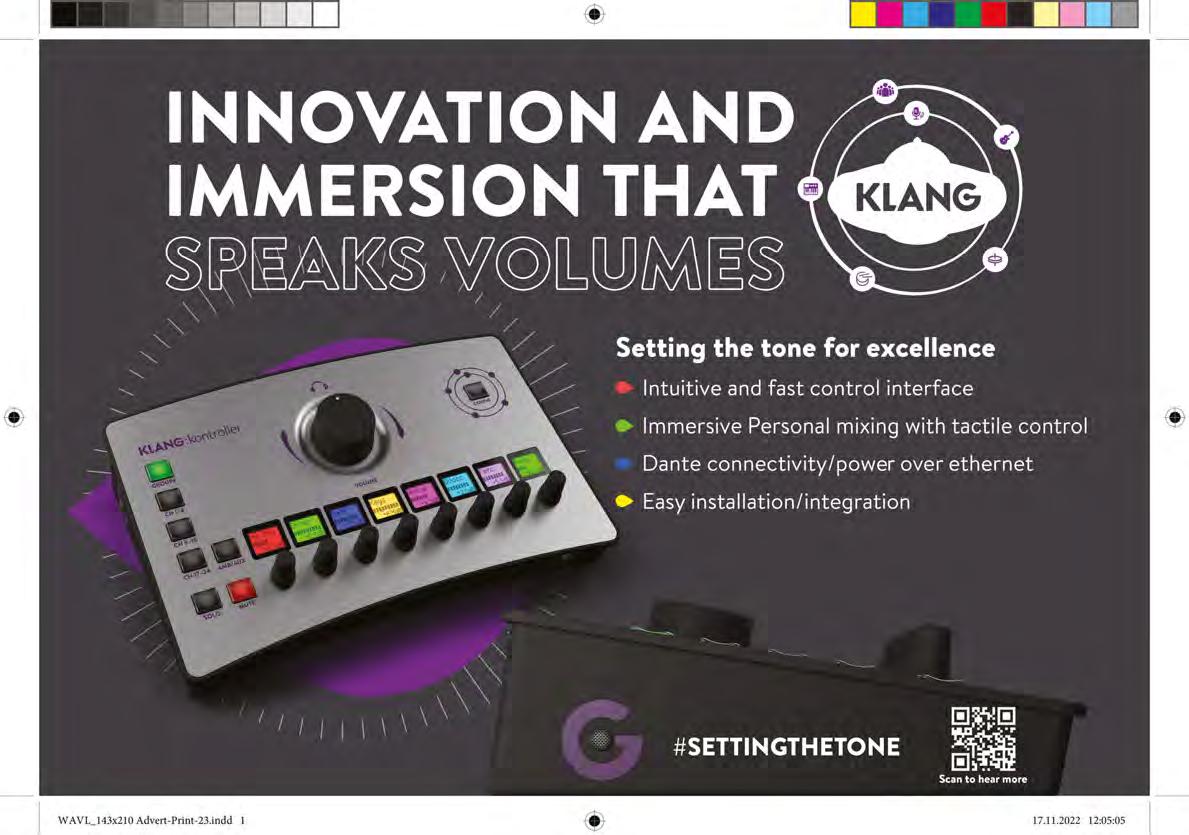

z Interoperability: typically,
software and hardware platform that is interoperable and can support a variety of protocols and formats is the key to overcoming this limitation.
z Security: network-based products cause security concerns, primarily if the underlying technology or operating system is known to have vulnerabilities, such as with Windows-based nodes, among others. This is why it is important to consider a solution that is not based on an underlying technology that is susceptible to security vulnerabilities.
Why move to a distributed videowall?
z Latency: there is a concern in distributing everything over IP. It requires the content to be encoded, sent over the network, decoded and displayed. With today’s technology, it is possible for a distributed videowall solution to reach the same or even better latency
same parameters before they can be sent to the videowall. This can be a limiting factor in applications where a high variety of sources with different levels of performance and resolution need to be displayed, such as dashboards, web pages, cameras and KVM
The progress of the AV-over-IP transition, the convergence of AV and IT, the affordability of networks, display and required equipment, and the market demand for more flexibility and interoperability have created a unique need for distributed videowall products that address and solve all of the challenges and limitations.
KnowHOW September–October 2023 WORSHIP AVL 33
VuWall’s PAK 20 supports two HDp60 outputs or one 4Kp60 output
Documenting your lighting
instruments that light them. There is no right or wrong organisational method when creating a cheat sheet. It can be organised and laid out in whatever format makes most sense to those who will be using it.
Paper or digital?
Both the light plot and magic sheet can be created by hand or using a number of digital tools available across all price points (even free). There certainly are pros and cons to either format, much of which is personal and depends on the comfort level of those who are working with the lighting documentation. As many houses of worship use volunteer lighting teams, I would advocate for whatever tool, method or system enables you to
FOR
LIGHTING DESIGNERS
or technicians with theatrical backgrounds, you know the impor tance of good paperwor k as it pertains to the design process and upkeep of a lighting rig. For those who may not have a theatrical background, you may be wondering what more there could be beyond the basic lighting plan. Paperwork such as cue lists, sectional plots, magic sheets, followspot plots, hook-up sheets, colour sheets and instrument schedules all play an important role in the documentation of a lighting design.

What might this have to do with a house of worship venue? For starters, many house of worship venues today incorporate lighting systems not too dissimilar from rigs found in professional theatre or concert venues. But even the smallest houses of worship can benefit from detailed, up-to-date documentation of the lighting system. If for no other reason, this documentation can be an invaluable reference when programming, as well as a crucial resource when troubleshooting the lighting rig. In this article, we’ll look at what documentation you should maintain, as well as some of the tools that are available for you to create that documentation. The amount of information that you choose to
document is up to you and what is most relevant for your situation and your lighting team. The important thing is to document it, so let’s dive in.
What to document
The amount of information needing to be documented will vary depending on the size and complexity of your lighting system. At the very least, I would recommend maintaining an accurate light plot, or lighting plan. The light plot depicts the layout of your lighting system in a top, birds eye view. It shows the individual instruments, the pipes or trusses on which they are hung, their dimmer (or address) number, channel number they are patched to, any colour or focus notes and more. The light plot is usually drawn to scale and can be generated either digitally or by hand. These days, light plots are more commonly created digitally using software specially designed for creating light plots – more on that later.
The light plot is a useful tool when programming your console in that you have all of the necessary information needed to complete the patch, as well as a visual representation of the rig that can be referenced when wanting to control
specific instruments when creating lighting looks. It also serves as the map for electricians needing to move, focus, circuit, patch, maintain and troubleshoot the rig. It contains all the information needed when setting up your console. The second piece of lighting documentation that I would recommend maintaining is an accurate cheat sheet (or magic sheet). This is a simplified version of the light plot that can be used as a quick reference by technicians or programmers when actually creating lighting looks. Rather than showing the instruments in their scaled layout within the venue, the cheat sheet is an organised representation of the lighting areas and the control channels of the
communicate lighting information most effectively, efficiently and clearly. Spend time ensuring that everyone on the team is able to read, use and update these documents and that appropriate access is provided. If having paper copies next to the console works for a small system, that may prove better than the hassle of documenting it digitally. If your rig is complex consisting of a large quantity of instruments, maintaining digital paperwork in a centralised, shared digital folder may be best.
Let’s take a look at some of the tools that are available for you to use and how you may be able to take advantage of them to document your lighting system.
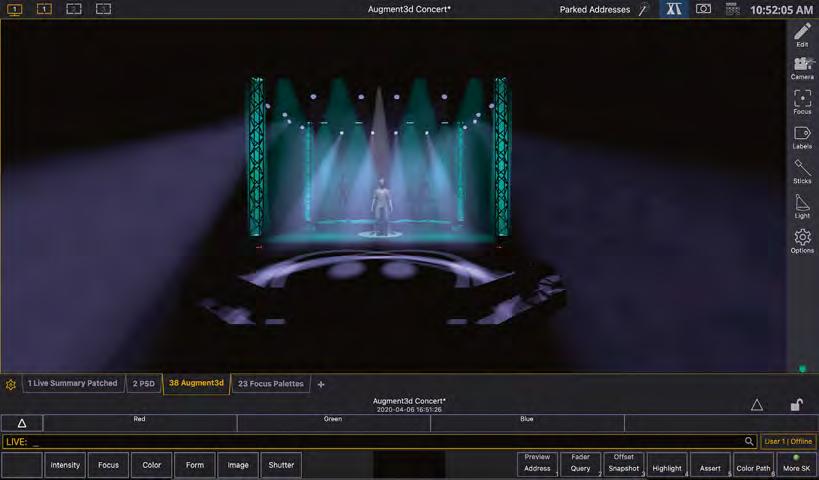
KnowHOW
John Black discusses how even the smallest house of worship can benefit from detailed, up-to-date documentation of the lighting system
34 WORSHIP AVL September–October 2023
Augment3d visualisation
grandMA3 visualisation
Console software
These days, many console manufacturers are incorporating digital lighting plots and magic sheets natively in their console software. Some take this a step further and even incorporate internal visualisers, allowing the programmer to see digital representations of what is being output to the rig. Two notable examples are the real-time 3D Visualizer feature built into the grandMA3 software, along with Augment3d built into the ETC EOS family.
As solutions such as these are built natively into the console operating system, they allow the programmer to actually control the rig directly from the digital plot or magic sheet. This makes programming simple for volunteers who may not be as familiar with console syntax using the command line. They are easy to create and individual users can build their own magic sheet layouts to match their workflow preferences without making changes to the console settings, such as patch, palettes, groups, etc.
Another benefit is that much of this is available in an offline format (no connection to the lighting rig itself) and therefore provides a valuable tool for training volunteers. Console files can be shared to the team and used on their personal computers for training purposes. Both the EOS and grandMA3 offline editors are cross-platform and therefore easily accessible by volunteers.
However, if a console should fail, it is possible that the digital light plot and magic sheet are lost along with the programming of the console. Be sure to keep show files backed up externally from the console to ensure that work completed is not lost. Develop routine backup habits where show files are stored as versions so that it is possible to revert back to a state prior to an identified problem.
Professional software
Professional lighting design software can be quite the investment. Industry-standard solutions built for the needs of the lighting industry are excellent tools if you plan on fully using their feature sets and can afford them. Two of the most commonly used professional applications are Vectorworks’ Spotlight and CAST’s WYSIWYG. As professional applications, the learning curve for both of these solutions is quite high. Both include
CAD functionality allowing you to create (or import) 3D scenic or stage designs that can assist you in planning your lighting positions. Both allow you to build light plots efficiently and use databases that keep in sync all of the paperwork files generated within a project.
Before visualisation became available natively in console software, lighting designers used professional visualisation software that allowed them to pre-program partial or entire show files without the physical lighting rig. WYSIWYG, Vision (now a Vectorworks add-on) and Capture continue to be used for these purposes external from the lighting console.

While these software solutions are excellent products in that they are purpose-built for lighting documentation, I would suggest that these solutions are not necessary in many houses of worship because of their complexity and cost. They are worth mentioning though as they are industry-standard and featurepacked for lighting design workflows.
Low-cost software
In addition to professional software applications, a number of free or low-cost lighting documentation software packages are also available. While not as fully featured as the professional solutions listed earlier, these have significantly lower learning curves and may be good solutions for documenting smaller, simpler lighting systems often found in houses of worship.
Perhaps my favourite piece of software is Claude Heintz Design’s
LXBeams. This software provides the user all the tools needed for drawing light plots and generating basic paperwork. For many users needing to simply create and maintain a lighting plot, they offer a free option called LXFree. If needing additional functionality, such as importing SketchUp design files, they also offer an LXSeries Pro licence that is reasonable and unlocks additional features. One specific reason that I love this software is that the company has also built an iPad application called LXBeams2Go, which allows you to view, edit and interact with your light plot files on an iPad. This makes working with and in your rig convenient as light plots can be easily referenced or updated on the iPad instead of needing to carry around a laptop while working in catwalks, lifts or other areas. Another application available as a subscription, and one that is web-based, is Drafty-App. Like the LXSeries software, Drafty-App provides users all the tools needed for drawing light plots and generating paperwork, with the difference being that it runs in the Chrome web browser rather than natively on your computer. It is subscription based, so in order to save files to your linked Google account, you will need at least the basic subscription. The company does claim that once open, all the necessary working components of the app are available (minus printing and cloud storage) so that if you find yourself without internet access, you should be able to continue working on locally saved files until the internet is
restored. Through using a Google sign-in, you are able to save directly to Google Drive which ensures that you can access your file(s) from any computer anywhere the internet is available without any need to install the software. This makes Drafty-App incredibly flexible and unique.
Last, and you may find it surprising that I include this in the list, is your basic Google suite of applications (or MS Office, Apple iWork, etc.).
For the most basic of light plots and documenting simple systems, I have opened up a Google Slides presentation and drawn lighting positions, instruments and the required hook-up information when needing to put information together quickly for a very basic setup. After all, lighting documentation is about communicating your lighting ideas, the system components and needed system information. Using colour fill opacities, I have even expressed lighting angles and colours on top of scenic elevation pictures imported into Google slides in order to communicate ideas. Whatever works, right?
In conclusion
So yes, there are professional lighting software applications and specific paperwork documentation that is industry-standard. In the end, it’s about communication and documentation, so if you find a tool that works for your team, use it by all means. If for no other reason but for troubleshooting, document your system in some way and keep it up to date as changes are made. When (not if) the day an issue arises, you’ll be glad you did.
KnowHOW September–October 2023 WORSHIP AVL 35
Augment3d built into the ETC EOS family
Now is the right time to switch to wireless IEMs
Technical worship leader Ben Cochran makes the case for embracing wireless in-ear monitoring for reasons of practicality, performance, safety and ultimately to enhance the worship experience for congregants and musicians
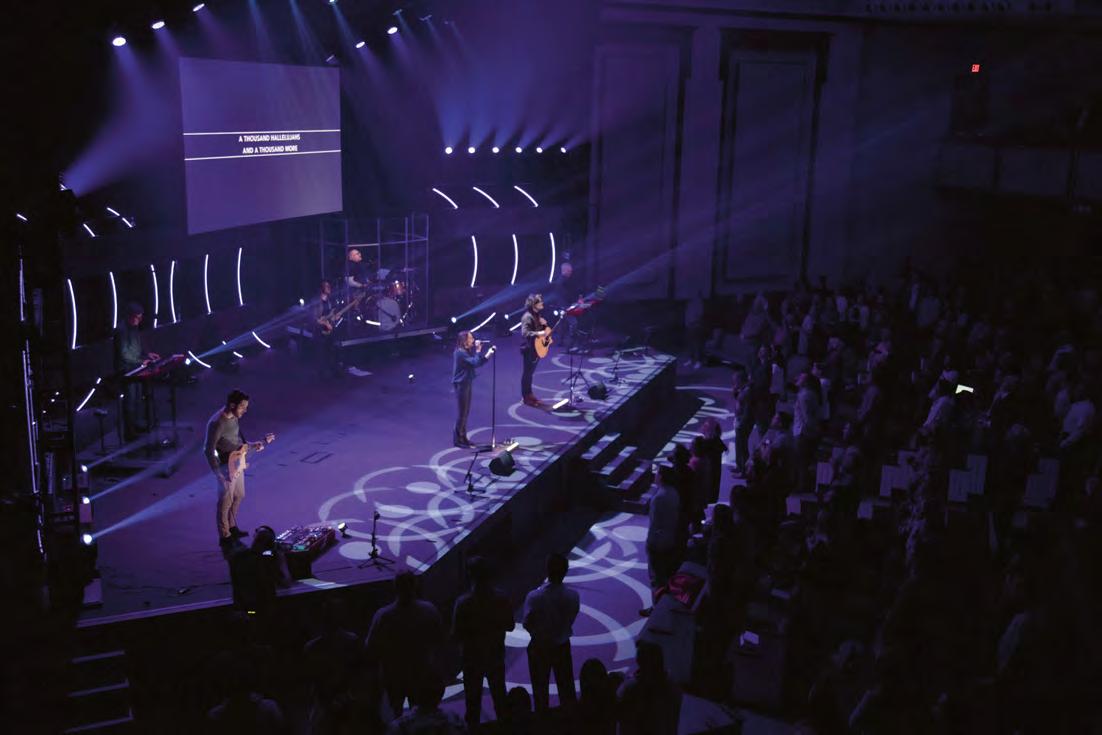

AS IT HAS BEEN FOR centuries, music is a major part of our modern worship services.
complicated frequency coordination plans for wireless systems and cumbersome floor wedges for monitoring. For many, that required a considerable upfront investment. Fortunately, the evolution of technology over the past 15–20 years has made digital mixing consoles and good-quality, easy-to-use RF financially and technologically accessible to more houses of worship
With these advances, even the smallest HOWs can now seriously consider implementing wireless in-ear monitor systems, providing numerous benefits for the church’s musicians and audio engineers, and improving the sound heard by members of the congregation.
While it is possible to run individual mixes to IEMs from a traditional analogue mixer, the limited number of auxiliary outputs on many consoles makes them unsuitable for bands in which more than a few musicians require individual mixes. But with options starting as low as US$1,000 today, a house of worship can invest in a digital mixer – and open up a world of possibilities. Not only could they enjoy easier control of more aux outs to feed individual mixes to a large number of IEMs, but scenes for different bands and combinations of players can easily be saved and recalled when needed. Some modern digital mixing solutions even offer apps for individualised control of a selected output, allowing a band member to mix their own in-ears directly on the console. Other churches may find that a personal mixing system (such as Aviom, Livemix, etc.) makes things easier to manage. In any case, the ability to store these settings and recall them quickly is a major benefit of digital mixing. At my church, for example, we have anywhere from 60–70 people
who access individual mixes over the course of a month. The ability to recall their mixes – instead of needing to craft a new mix each time they step onstage – is a huge time-saver.
Having the ability to create mixes for in-ears is only one part of the discussion. Getting those mixes into commissioned wireless IEMs is another job that once was tedious and potentially confusing, but has become much more straightforward. The manager software that accompanies most wireless systems and IEMs has greatly reduced setup time, as well as lessening the frustration and sheer guesswork that all too often accompanied traditional frequency coordination. With today’s software, even a novice engineer – who, in smaller churches, might well be a volunteer – can quickly learn to coordinate frequencies for dependable wireless performance. A digital system with wireless IEMs also enables a wide variety of simple and clean setup options. For example, technicians can mount the IEM transmitters in a rack at FOH or near the stage and run the
36 WORSHIP AVL September–October 2023
Ben Cochran, technical worship leader at Christ Community Chapel in Hudson, Ohio
Sunday morning worship at Christ Community Chapel
individual mixes from the console or a stagebox.

In larger venues, the rack with IEM transmitters can be placed in an equipment room with other racked gear, fed by mixes from the console or personal mix system, and transmitted with one or more antennas onstage.

The greatest visual impact of using IEMs, of course, is that they remove floor wedges from the stage. But a stage uncluttered by wedges can also improve the sound that’s piped through the PA to the congregation. While we think of wedges as speakers that direct sound exclusively at the musicians, that sound doesn’t just magically disappear – it reflects off walls and other surfaces, adding to the overall sound in the room. In smaller HOWs, especially, this can muddy the music heard by congregants and keep the PA dialed back to a less-than-ideal volume level.
Another, perhaps surprising, benefit of IEMs is that, when used appropriately, they can actually be healthier for a listener’s ears. Since multiple wedges are required to
above a certain level and, therefore, helps to maintain hearing health. Flexibility is another key improvement that performers enjoy with IEMs. As with wireless
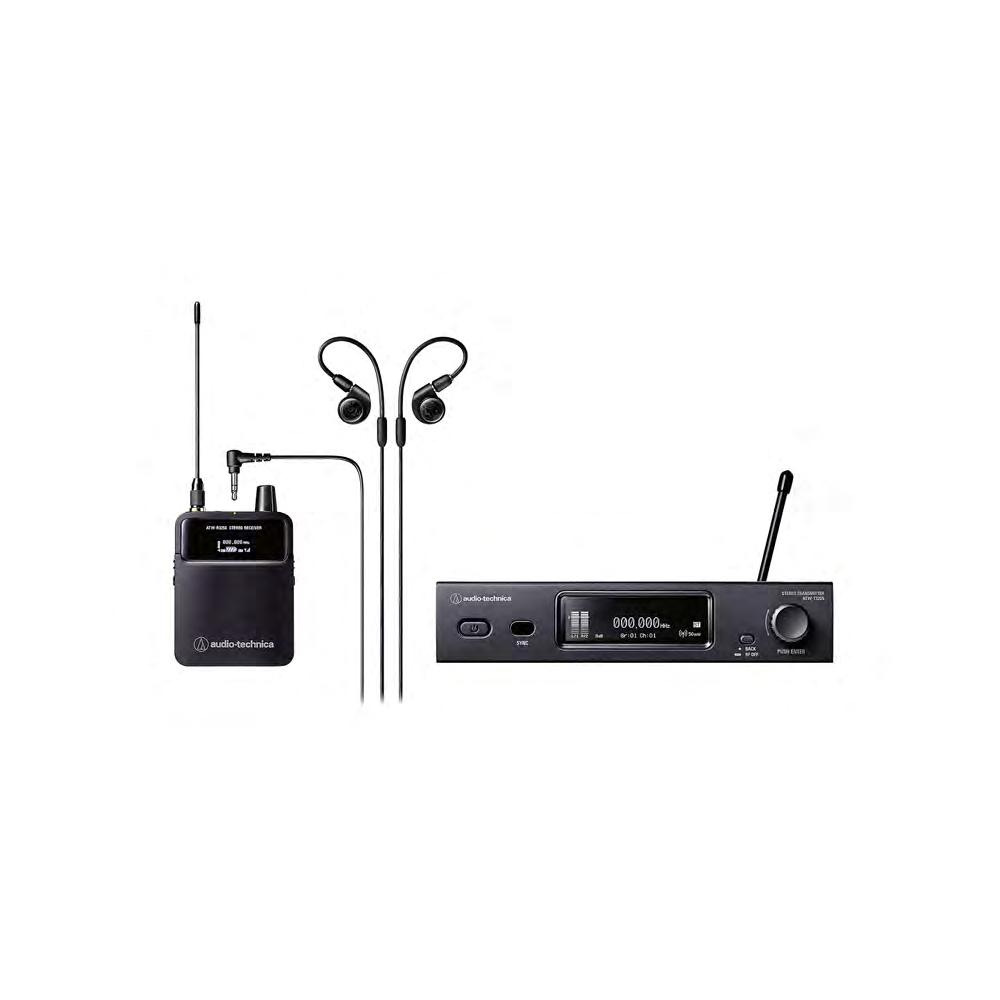
Flexibility extends beyond the performers, however. The portability and ease of setup associated with digital mixers, wireless systems and IEMs makes them

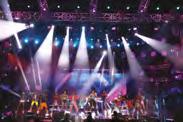
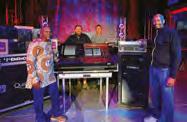

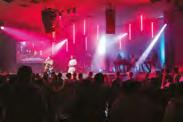
indispensable tools for expanding, reimagining or transitioning worship spaces. For example, my organisation often trains and supports others in planting new churches. We have found that it is often easier and more cost-effective to get them started with digital wireless equipment, including IEMs. For portable churches, components can be mounted into a rack, loaded into a car and transported to the new worship site with little fuss. This makes the load in/out of temporary spaces much faster and easier.
Upon arriving, they set up their system, turn it on and they’re ready to go – no bulky wedges to transport, no new mixes to craft
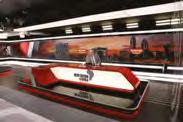

IEMs, then, are not simply luxury items – nice toys for HOWs to consider when and if they see huge increases in their budgets. The affordability of today’s digital mixers and wireless IEM systems puts IEMs in reach of even very small churches, helping them to enhance the performance and comfort of their musicians, decrease setup time for each band and even plant new churches through ease of transportation. The time for IEMs is now.
The team at DWR Distribution look forward to assisting you with the sale of sound, staging, rigging, power, audiovisual and lighting equipment, backed up with advice and great service. We also offer professional installation services.
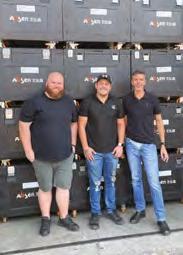


TECHNOLOGY September–October 2023 WORSHIP AVL 37 DWR Distribution, Block C, Unit 1, Kimbult Industrial Park, 9 Zeiss Road, Laserpark, Honeydew, 2170, Johannesburg, South Africa • Tel: +27 11 794 5023 • Fax: +27 11 794 5702 • www.dwrdistribution.co.za
Stage and Touring • Theatre and TV Studios • Events and Leisure Discotheques and Clubs • Architectural Lighting • Worship • Schools
Looking for a professional audio visual solution?
The Audio-Technica 3000 series wireless IEM system is one example of a modern, easy-to-deploy and cost-effective solution for HOW monitoring
Signal transformation
Casey Hawkins considers alternative options for converters depending on how much conversion you need and your budget
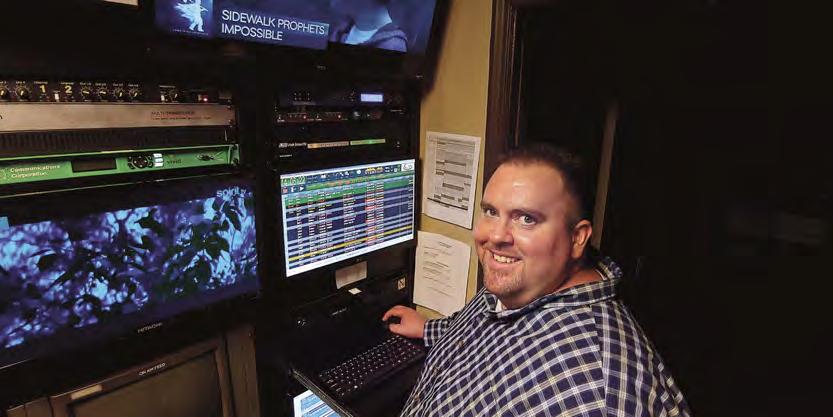
I HAVE SPENT THE LAST several articles on routing and switching and I was planning to cover backbone routing and patching today, but I decided to advance to this topic because I know there are a lot of you out there who are struggling with availability of Decimators and other throwdown converters that you need in your ministry. I am not purely offering backup recommendations, but I am hoping to widen your scope of options down the road.
the 16:9 screens using the 4:3 zoom scaling feature to eliminate the pillar boxes. I have not found anything else that does this scaling for less or even the same amount. Decimator has this market cornered. But they have been on back-order for some time now. I recently received two because I was on a waiting list at Markertek and some finally came in. By the way, do yourself a favour and get on those lists with your vendor because they will get some in, but usually not enough to fulfil their waiting list plus some for ad hoc
later at Green Acres in Tyler, he spent the past 25 years in broadcast television working for multiple television stations in the US. He has worked as a broadcast technician for a major telecoms company, managing national and international television broadcast signals over a switched fibre optic network. He also owned and operated an independent video production firm in Tulsa, Oklahoma for 10 years before returning to Tyler in 2016.
find one of these throwdown boxes? If you have a video switcher with a DVE (digital video effects) channel or in the Blackmagic ATEM world it is referred to as a SuperSource, then you can apply a “zoom” or “enlarge” effect to a 4:3 source like an iPad and mimic the result of a scaled source. But you might just simply have to wait out the shortage. These devices have been a mainstay in my ministry for decades and I can only imagine that down the road, I will need more converters but they will just be from and to
the throwdown boxes on the floor and pick up a rack-mountable frame sync or up/down/cross-converter. These get expensive but, when you think about all they do, then you really can understand their cost. I have all three of the listed devices in my control room, and for various reasons. Some were installed as part of my main backbone 15 years ago – they are more expensive and for a long time really could perform a lot more tasks than the others. I haven’t added more of them to my system because I simply don’t need such powerful converting. But time has done a lot with the technology. Let’s dig into them a bit more.
Teranex: this device is less than $2,000 and functions as a
levels of solutions for less than US$1,000, and many for less than $500.
But can you get them right now?
One of my favourite tools to have lying around in my arsenal is the Decimator MD-HX. I use it to convert HDMI to SDI and to scale 4:3 iPad output to at least fill
without the scaling options that the Decimator offers. AVMATRIX also makes the SC2030 converter that I have half a dozen of that do a great job of conversion, but they don’t scale like the MD-HX can. But they are also half the price. So, what do you do if you need to scale a source up and you can’t
Blackmagic Teranex / AJA FS1 / Harris X50
When you are in the studio and you need devices like these that manipulate the video and audio into the casserole that you are cooking, you might want to leave
standards converter, which means you can go from PAL to NTSC and back, 720 to 1080, i or p. You can upconvert SD to HD and scale the image, even down convert if you want. You can embed analogue audio into the digital video. It is also a frame sync, which means you can adjust video parameters such as
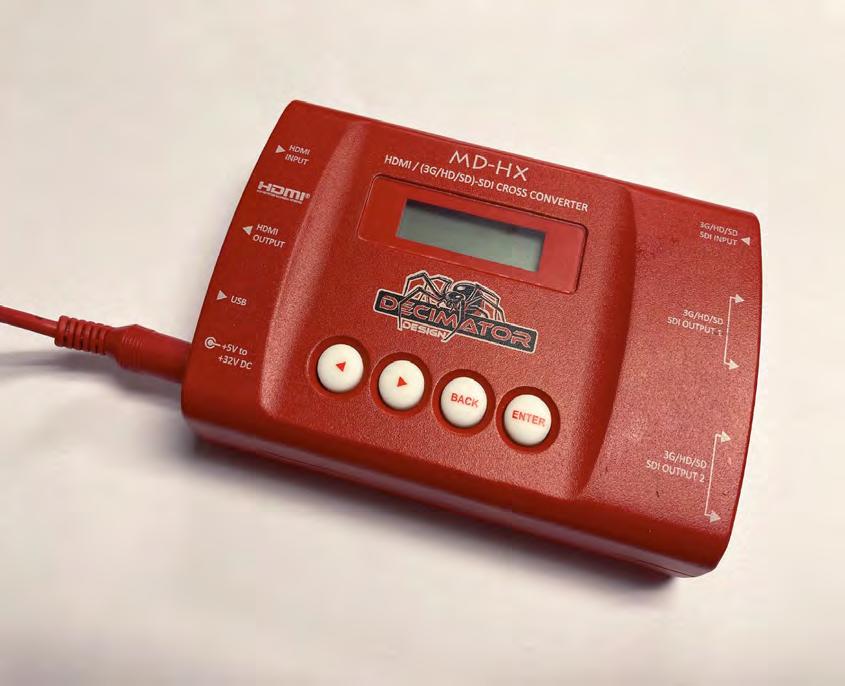
TECHNOLOGY 38 WORSHIP AVL September–October 2023
Blackmagic’s Teranex
Decimator’s MD-HX
Casey Hawkins
gain, saturation, setup, hue, detail, etc. You can add reference and sync the input to your backbone. You can manipulate closed captions (which is what I bought it for originally and now I use it for audio embedding). It can de-interlace and even detect and remove cadence with 3:2 pulldown. And it can all connect to your network for remote control.
AJA FS1 (now FS1-X): I have several of these frame syncs. They do what they do very well for about $4,000. While they don’t necessarily do all that the Teranex does, they probably do the job of a frame sync to a slightly higher standard and lifespan since that is all they are designed to do. I have had FS1s in operation full-time for 10 years before the power supplies went out, but I have only had my Teranex in line for about three years. Time will tell on that. Both are great tools to have.

Harris UDC50: these are broadcast-level converters that really aren’t so fancy anymore. Originally, they were superstars that allowed us to convert and scale the then main HD formats, but they are limited now. For instance, they can’t handle a 1080/60p input. Everything else I have referred to in this article can. They offer the main video level adjustments as a frame sync because they are a frame sync. A frame sync with UDC capabilities. These exact units are no longer made but modern equivalents cost $10,000 and more
broadcast environments where equipment longevity and up time are key.
HDCP
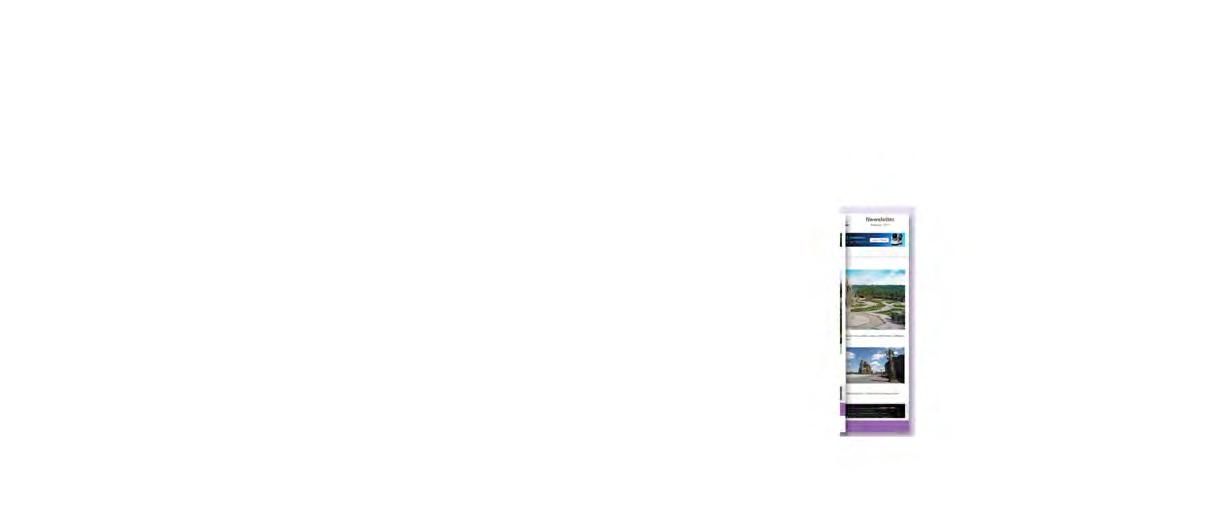
When you’re converting signal types, especially from HDMI to SDI, beware of HDCP. Not to be confused with DHCP, an IT term for Dynamic Host Configuration Protocol, or where a device is automatically assigned an IP configuration/address versus using a static address. HDCP stands for High-bandwidth Digital Content

copy-protect content. In other words, it is technology intended to prevent copyright infringement by blocking the video signal from passing through unrecognised or unauthorised equipment such as a converter, video switcher, streaming encoder, etc. Practically anything other than a video monitor will experience problems with HDMI passing the HDCP protection. If you are trying to convert HDMI to SDI using any of the devices discussed in this article, then try using a twoway HDMI splitter. These can strip out the HDCP protection and allow
for HDCP was positive, it can wreak havoc on video pros just simply trying to do their job legally. Our digital world just can’t survive without converters. How much conversion and for how long you need it will determine what kind of converter you need. You might just need a $70 Blackmagic HDMI to SDI converter throwdown box, or you might need a broadcastgrade, rack-mounted frame sync for over $10,000. You might need to consider other options should what you need becomes unavailable or if it is experiencing a back-order
TECHNOLOGY
Harris X50s and AJA FS1s
The FS1 from AJA
Understanding emergency lighting systems in HOWs
or a number of others, including normal power sense.
Other terms to know
ETC’S LATEST GUIDE EXPLORES
the purpose of an emergency lighting system in a house of worship – to ensure life safety and, in the event of an emergency, get people out of a building. When normal power is lost because of fire, a blackout or other events beyond human control, the primary concern will always be for the people affected. Additional features, cost and all other considerations take a backseat to a system fulfiling its life-safety function.
A reliable system is critical to the safety of occupants affected. An emergency lighting system must be able to guarantee that the system will energise and deliver the required illumination automatically within a very short period of time –typically 10 seconds – during an emergency, 100% of the time.
In the US, what constitutes an effective system is defined by the National Fire Protection Association in the NFPA 101: Life Safety Code. This article will help you understand the terminology and requirements so you can more confidently build a life safety system for your venue.
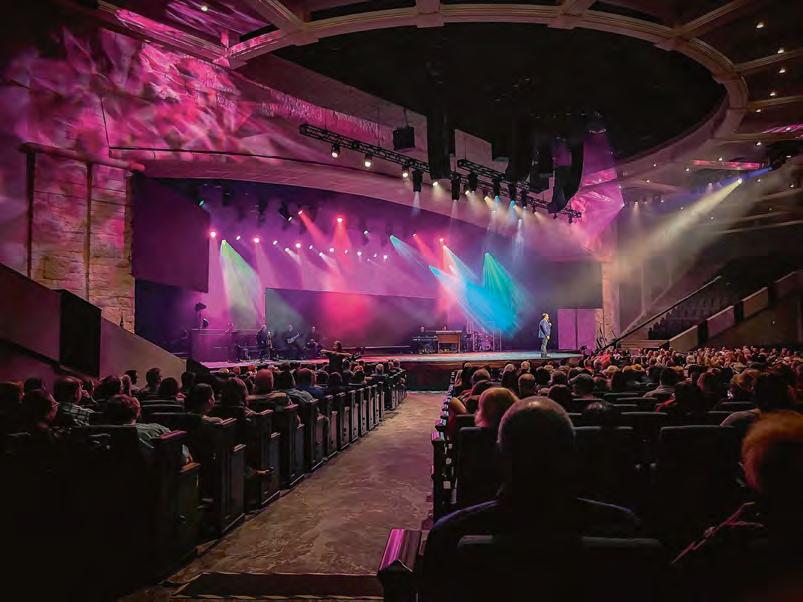
The logic of an emergency system
However complicated an emergency lighting system may seem, it must perform three basic functions.
First, it must sense an emergency situation. Second, it must be able to transfer loads to an emergency power source. And third, it must be able to bypass normal control to drive the system to required emergency lighting levels.
A lighting system needs to know when to go into an emergency state. A device that senses the loss of power is the first key piece of hardware for any system. This device often uses a sense circuit to detect when normal power is interrupted and drives the system into a panic look. A fire alarm or other external emergency device can also trigger a sense device. The sense device can be internal to a piece of equipment like a panel board or a fixture, or it can be an external device.
The second building block includes a battery, inverter or generator. This device will need to deliver power to
emergency circuits in a timely manner. The National Electrical Code also requires that a transfer switch be part of an emergency lighting system. This is a device that monitors normal power and switches loads or feeders between normal and emergency sources to provide power to other devices downstream.
The final piece of an emergency system is a control device that ensures emergency lighting loads are driven to their correct emergency look. Approved devices include automatic load control relays that shunt around a relay or dimmer, and DMX Bypass Controllers that override the control signal to drive any DMX-controlled fixtures to their correct setting. When it comes to selecting fixtures that can be used as part of an approved emergency lighting system, there are several options. Any luminaire with a control input that is used for emergency lighting qualifies as a directly controlled emergency luminaire. That control input might be DMX, 0–10V, DALI
There is a long list of terminology to keep track of when designing an emergency lighting system. Here are a few that you may come across and a brief explanation of what they mean for your system.
z Dire ctly controlled emergency luminaire.
z Emergency power is defined as an alternate power source such as a generator, battery or separate power grid that provides power to an emergency lighting system when the normal power source is not available.
z Nor mal power comes from main utility sources and powers the lighting system under nonemergency conditions.

z Sense circuit is a circuit that monitors the normal power source without energising a load. This circuit may be circuit breaker protected.
z UL 10 08 Listed Transfer Switch Equipment – UL 1008 Listed devices monitor normal power and switch loads or feeders
TECHNOLOGY 40 WORSHIP AVL September–October 2023
The purpose of an emergency lighting system is to get people safely out of the building ETC’s range of emergency lighting products
A guide on the basic technology of an emergency lighting system and how to make your space complaint
Image courtesy of San Antonio Covenant Church
between normal and emergency sources as needed to provide power to other devices
downstream.
z UL 924 Listed Emergency Lighting and Power Equipment, and Directly Controlled Emergency Luminaires – UL 924 devices affect or bypass the control state of a dimmer, switch or relay connected to an emergency load. When normal power is lost, these devices bypass the normal control of loads to ensure that emergency loads are turned on at the required level to provide the illumination suitable for egress lighting. It’s important to note that these UL 924 devices may never be used as a power transfer device – which must be UL 1008 Listed.
Aesthetics of lighting fixtures
For many years, emergency lighting in many facilities was accomplished with a familiar battery-powered device, known as “unit equipment”. These devices are not attractive, and architects and designers often had to dial down their aesthetic
expectations. After all, there was not much choice in code-compliant emergency lighting solutions except ugly, uglier and ugliest. Over time, the pressure rose from the design community to replace ugly equipment with lighting fixtures, or luminaires, that ran double duty for both normal and emergency lighting. The argument was compelling: “Why can’t I use the same luminaires for emergency lighting and power them from a central generator or UPS?” This pressure was accelerated by the dominance of efficient LED luminaires that consumed far less
power than tungsten units and could easily provide the required emergency illumination levels. As additional motivation, the use of LED luminaires and a central emergency power source eliminated costly maintenance of traditional battery-powered equipment.

To keep up with this trend, significant changes have occurred in the National Electrical Code (a registered trademark of the National Fire Protection Association) and the UL 924 standard covering emergency lighting and power equipment. More information on NEC updates that happened in
2023 can be found on our website.1 The abbreviated version of these changes is that architects and designers now have a much larger catalogue of fixtures available when it comes to life-safety lighting.
What this means for your HOW
It’s important to remember that the primary function of an emergency lighting system is life safety. While this may seem like a lot of information, your system must perform the three basic functions as described earlier in this article. When the unexpected happens to your congregation, you’ll be glad you have the peace of mind that your emergency lighting system has been designed correctly. If you’re looking for additional information, we recommend downloading our Emergency Lighting Design Guide 2
1 https://blog.etcconnect. com/2017/11/what-is-a-directlycontrolled-luminaire-and-whyshould-i-care

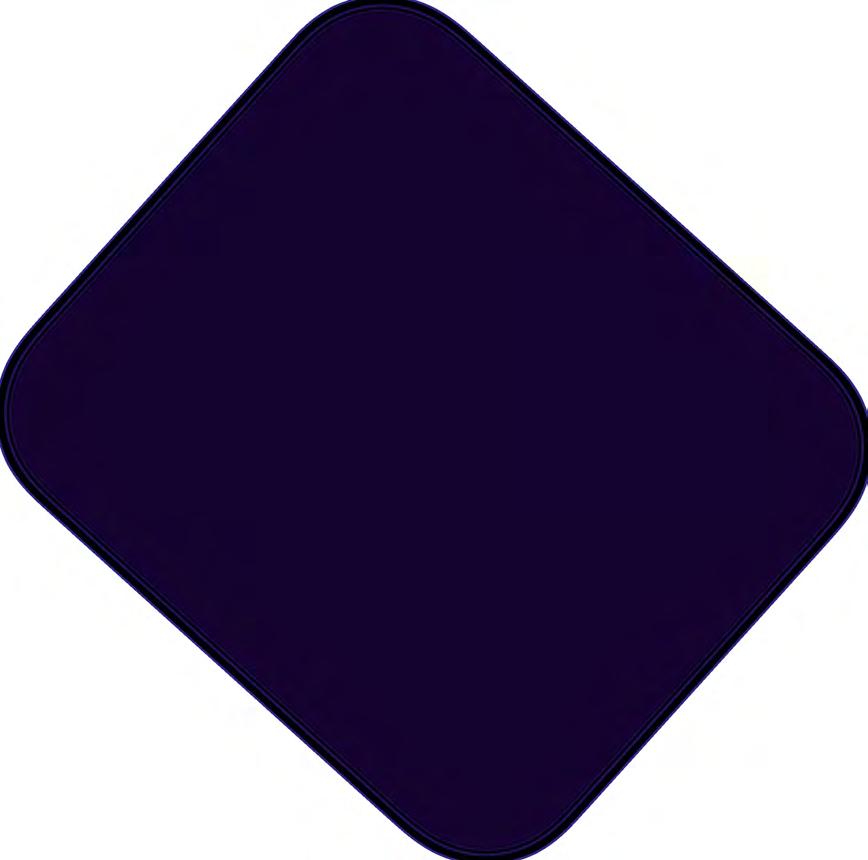

2 https://www.etcconnect.com/ workarea/DownloadAsset. aspx?id=10737501667

www.etcconnect.com
ACTIVE AND PASSIVE LINE ARRAY SYSTEMS COMPACT, HIGH QUALITY SOUND, UNMATCHED VALUE
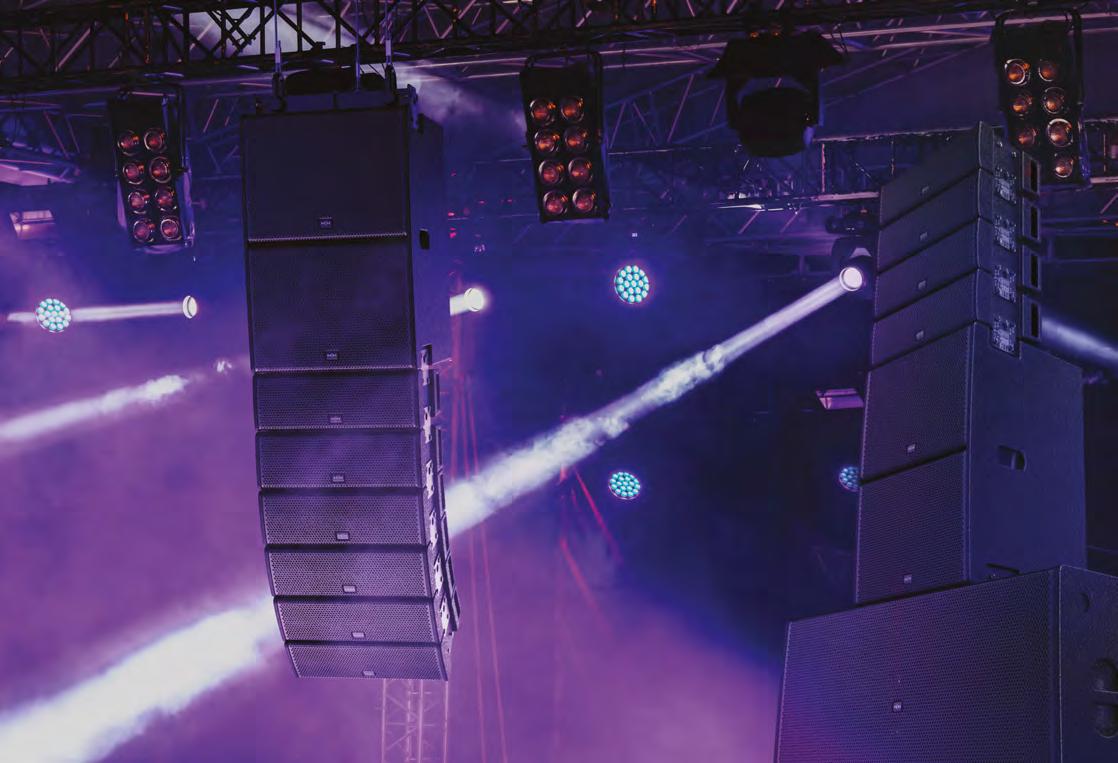
POWER UP YOUR AUDIO PERFORMANCE
C M Y CM MY CY CMY K Tessen Line Array AD.pdf 1 14/06/2023 11:31
TECHNOLOGY September–October 2023 WORSHIP AVL 41
An emergency lighting system must be able to bypass normal control to drive the system to required emergency lighting levels
A gateway to faster, cloud-based workflows
platforms
Pro, Apple Final Cut Pro, Blackmagic Design DaVinci
Resolve and Avid
Camera to cloud is built for speed
Camera to cloud (C2C) is one of the fastest-growing technologies in video production. It massively speeds up the content creation process by reducing the time between acquisition (shooting the video) and postproduction because there’s no need to ship hard drives or copy files. C2C sends video from the camera directly to the cloud so that the editor/ director can access content from anywhere in the world with an internet connection. Atomos, with its network-connected, on-camera Connect range of products, provides an easy but effective way to adopt C2C workflows.
Ninja V
The Ninja V is Atomos’s most affordable ProRes monitor recorder. It has a bright, 5-inch HDR screen and can capture RAW video from a vast range of digital cinema, mirrorless and DSLR cameras to inexpensive removable SSD drives. Lightweight, compact and typically mounted directly on the camera, it has become
an essential part of many content creators’ toolkits. Adding the Connect module gives the Ninja access to a host of cloud-based services, including not just C2C but streaming and live production too.
Dual codecs, same filenames
Atomos’s cloud-connected monitor recorders simultaneously capture
two versions of the footage: a high-quality Apple ProRes or Avid DNx “hero” file and a lightweight H265 HEVC 2K or 1080 “proxy” file that gets instantly uploaded to a collaborative platform like Frame.io from Adobe or Sony’s Ci media. The high-bitrate and low-bitrate versions share the same file name and timecode reference, allowing auto-conforming with any popular NLE. That includes Adobe Premiere
Media
Composer, which can all be used to create a high-resolution, finished project.
Proxy file sizes are much smaller than the original hero files, so they will load faster, use less processing power and, most importantly, upload to the cloud much faster using the public internet. For many social media platforms, proxy video quality is perfectly usable. For example, an HDp30 H.265 proxy file recorded at 10 Mbps is more than acceptable for transmission.
Atomos progressive file transfer
Atomos has developed a new progressive file transfer technology so that the upload of the H.265 file starts as soon as the camera starts recording, and the only requirement is an internet connection over common 4G LTE, 5G, Wi-Fi or wired networks. If, during the upload process, the connection is lost, the file upload starts again as soon as the connection is restored, ensuring that no data is lost.
Internet access speed is now the only bottleneck, but with advances in network technology rapidly leading to a world where every corner of the planet will have internet access, in the not-so-faroff future full-resolution C2C will be available to any creator, anywhere in the world.
A gateway to faster, cloud-based workflows
With Connect, Atomos has extended the capabilities of its monitor recorders with a growing array of cloud-based tools and services. It brings an affordable C2C workflow to a much wider range of DSLR and mirrorless cameras than was previously possible.
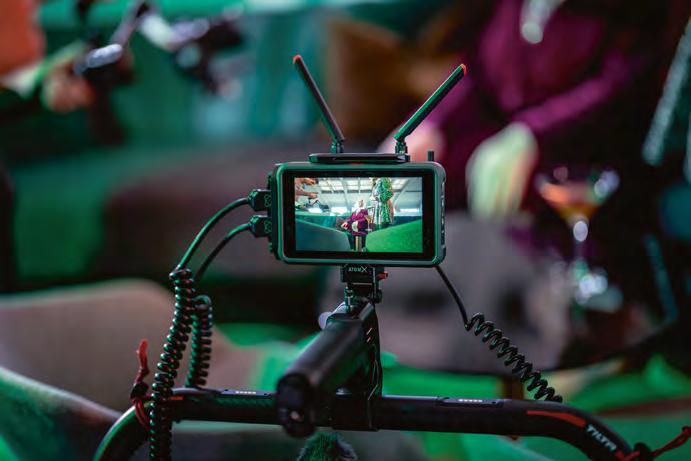
Content creators can now store their footage simultaneously on the camera, in the cloud and on the Atomos recorder for total peace of mind. At the same time, remote and collaborative workflows can access their media anywhere in the world. Atomos’s cloud services enhance the physical products, empowering content creators with innovative tools. The result: a flexible ecosystem of subscription-based services that can scale with customers’ needs.
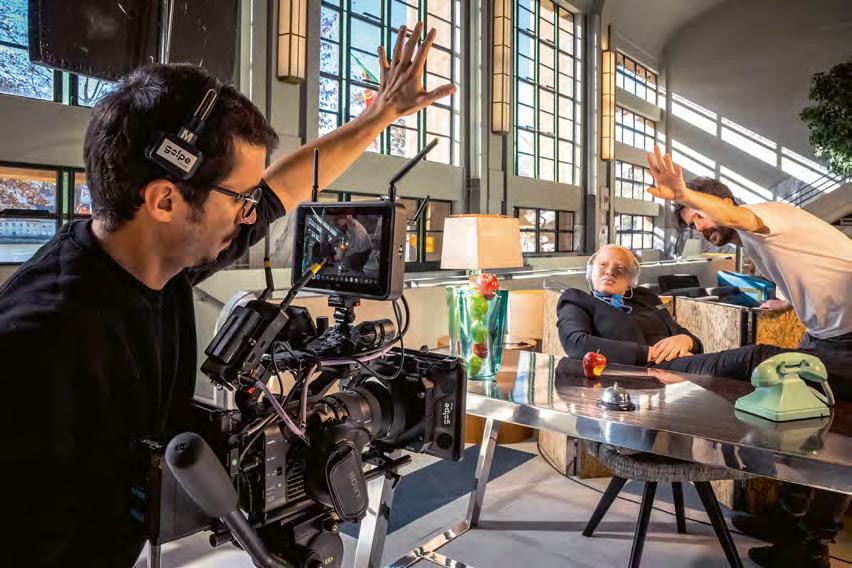
42 WORSHIP AVL September–October 2023
PRODUCT
SPONSORED BY www.atomos.com
SPOTLIGHT
Atomos is helping content creators reduce the time between shooting and postproduction with its Ninja and Connect
The on-camera Connect range provides an easy way to connect to the cloud
Adding the Connect module to Ninja provides access to cloud-based services via Atomos Cloud Studio








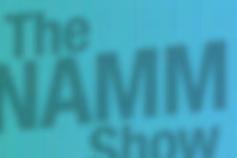

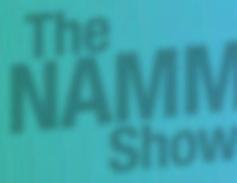
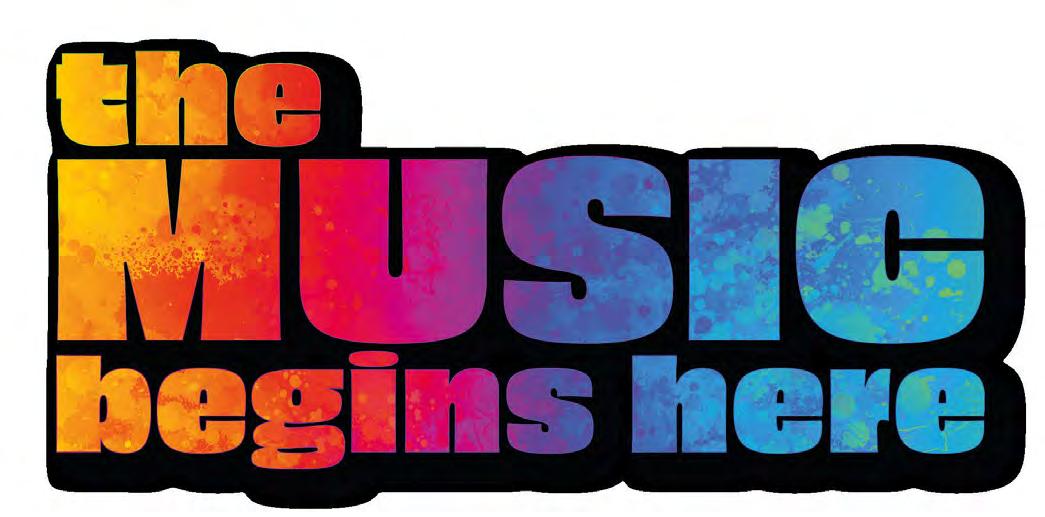
January 25-28, 2024 Anaheim Convention Center • Southern California Registration Opens August 30th namm.org/attend
Mackie innovates for all with DLZ Creator
With the launch of the DLZ Creator, Mackie has designed an all-inone podcasting and streaming audio solution for content creators posting podcasts, YouTube videos and livestreaming
Creator is said to provide proquality podcasting for users of all levels.
Key features include Control Modes that transform the touch display from simple and intuitive to advanced and detailed, according to the individual user’s skill level, without compromising processing power or audio quality. Easy mode guides users through setup based on the job that needs to do done and is said to keep the interface simple and clean. Enhanced mode expands control options while keeping setup fast, while pro mode offers “complete control over every aspect of the mix” and adds advanced processing options while keeping optimisation available when it’s needed.
According to the manufacturer, the biggest value add for houses of worship are the three user modes. Users have access to all of the professional capabilities expected of a digital mixer in pro mode and can dial in all of their settings and then put the DLZ into “easy mode” for other church members who may not have as much familiarity with audio products. The product also has a virtual assistant feature to help navigate through setup.
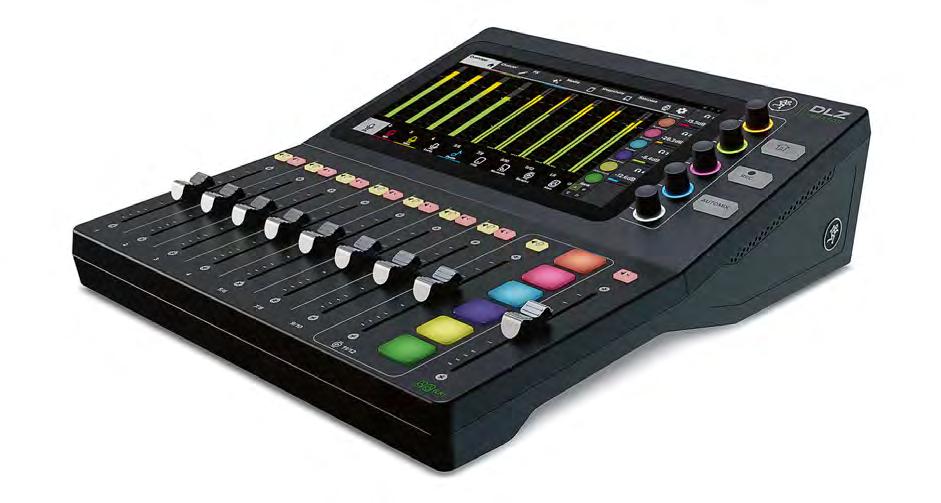
The Mix Agent setup assistant provides easy setup and
automates functions. A guided setup walks users through channel configuration and automatic gain sets the input levels. Audio processing includes three-band parametric EQ and high-pass filter, noise gate/de-esser/compressor, Atomizer reverb and Chronotronic delay. The inclusion of Onyx80 mic preamps is said to promote superior audio quality.
AutoMix manages levels for up to four mics, ensuring podcasters and their guests can be heard, when everyone speaks at the same time. It also provides consistent overall output level and reduces potential feedback.
According to Mackie, the AutoMix tool “does all of the heavy lifting”. This is said to be a key differentiator of the DLZ, in that it has been designed to be easy to use, which is particularly beneficial to those who are volunteering their time during services.
The DLZ Creator can record or stream multitrack audio to a computer or USB-C device, or directly to an SD card. Connections include four discrete XLR/TRS combo inputs, stereo channel with dual 4-inch TRS inputs, stereo channel with an 1⁄8-inch TRS connection and a stereo Bluetooth channel. A 10.1-inch high-resolution, full-colour touch display with


anti-glare coating allows users to see more of their mix, levels, effects and settings, while providing “faster and easier” metering, adjustments and navigation. Other features include five dynamically colour-coded rotary controls for instant adjustment of parameters, nine professional long-throw faders, one for every channel, backlit mute and solo buttons, dedicated backlit home, record and auto mix buttons and backlit sample trigger buttons.
www.mackie.com
A–ZCONTENTS ADJ Encore LP12Z IP 57 Astera PlutoFresnel 56 Audio-Technica BP3600 50 Ayrton Rivale Profile 57 Blackmagic Design DeckLink IP 54 DAS Audio SARA 46 disguise EX 3 55 Source 4WRD Color II 56 VARI -ARM M14 50 ectronics MZ Series 48 Z-HD6500 52 RM- LP5G 54 coustics L Series 46 mc²36 xp 51 DLZ Creator 44 shall Electronics CV420Ne 52 tin Audio FlexPoint 47 mann.Berlin MT 48 51 asonic AW- UE160W/K 52 PL Series 48 QSC L Class 47 RØDE Microphones Wireless ME 49 Roland VR- 400UHD 55 NEWPRODUCTS AV • LIGHTING • LIVE SOUND • INSTALLATION • BROADCAST • RECORDING
44 WORSHIP AVL September–October 2023






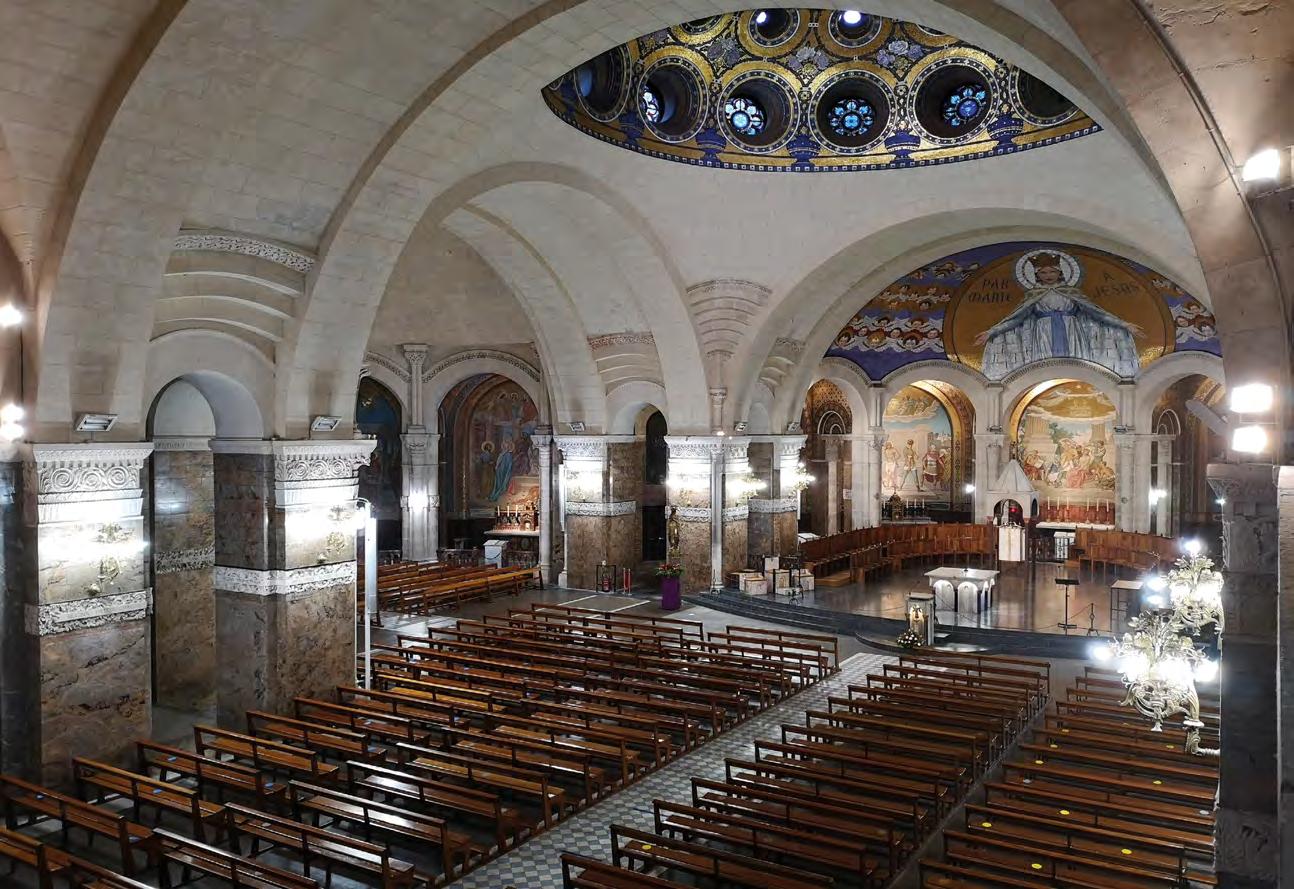
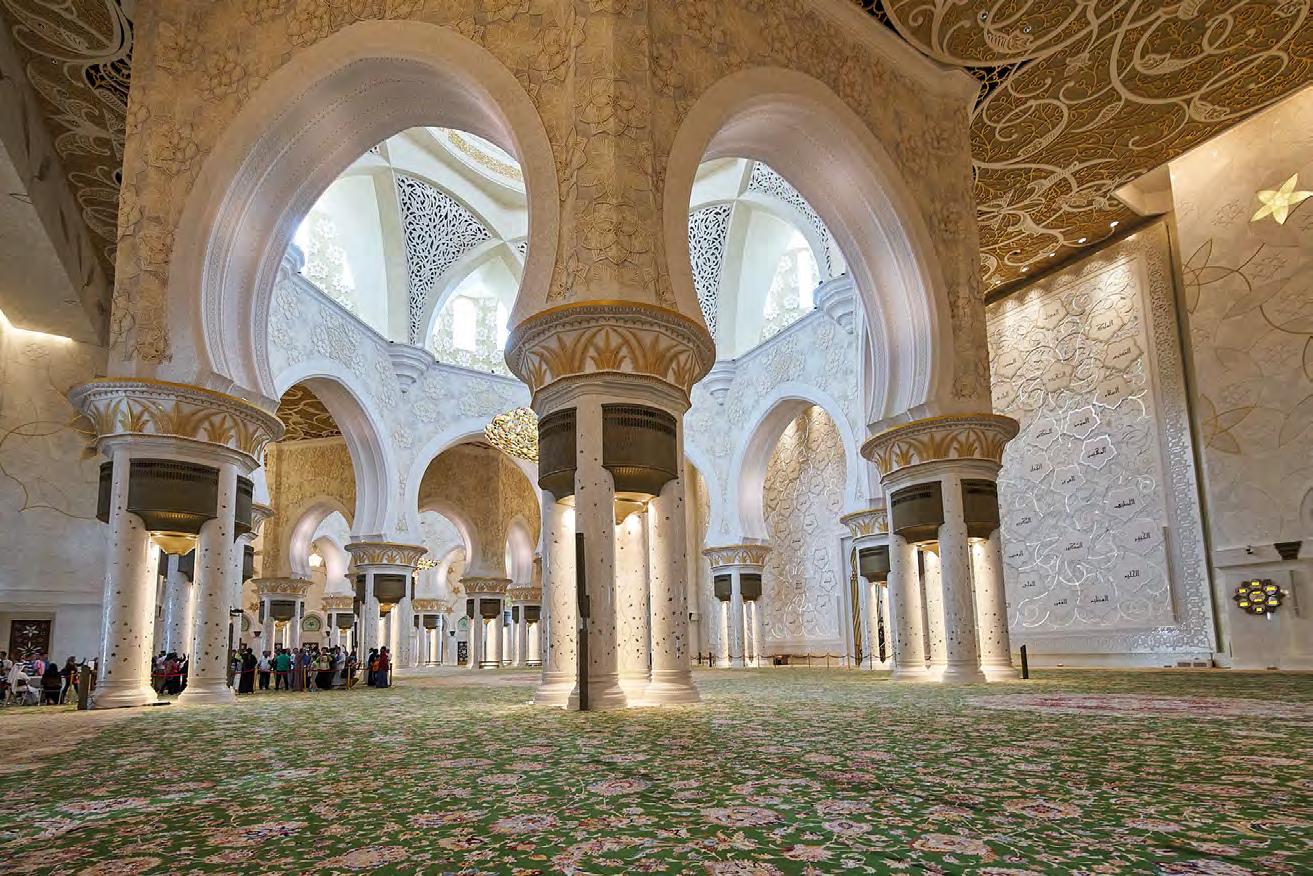 Active Audio an Arbane Groupe brand
Active Audio an Arbane Groupe brand
DAS Audio scales from LARA to SARA
DAS AUDIO has expanded its flagship ARA series with the addition of the SARA ultra-compact line array system. Capable of delivering a linear performance of 138dB maximum SPL and wide dynamic range, the SARA is suited towards medium-sized installations and events.
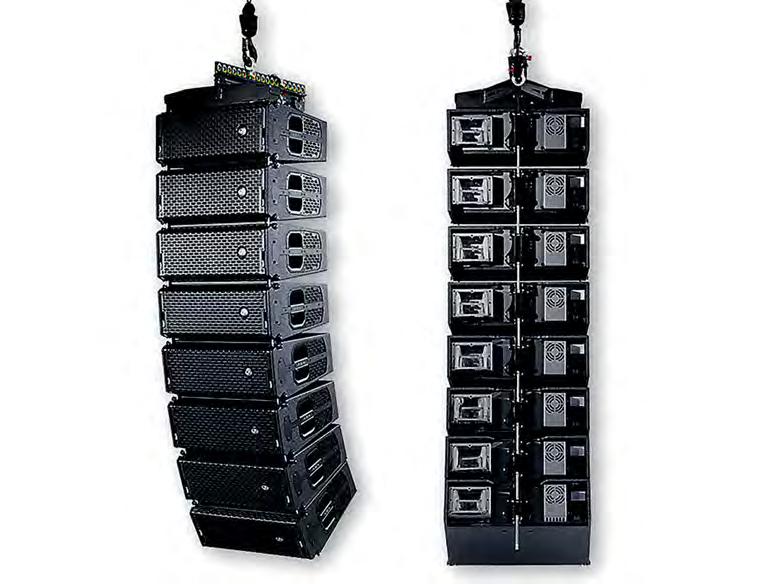
The SARA’s symmetrical design incorporates two customised 8-inch loudspeakers for mid and low frequencies and a compression driver coupled to a 100° horizontal dispersion waveguide for the high frequencies. The internal Class-D four-channel amplifier provides 3,000W RMS of power. Two channels are used in bridge mode to power the compression driver, and the remaining two are used to power the 8-inch woofers. The three-point captive rigging system can be used for both the SARA and SARA-SUB, which can accommodate arrays with 24 SARA and 16 SARA-SUB flown units. Significantly reducing assembly
time, the Fast Set Splay (FSS) system allows angles to be adjusted in 1° steps from the stacked position. SARA also benefits from features shared by all ARA series models, such as a four-band HOS, atmospheric correction, 1,024 taps for DASaim (FIR filters) and a delay of 280m or 823ms per cabinet. The NFC technology used for self-positioning the systems within an array can be configured within the ALMA software and an internal microphone checks the status of all the components. Weighing 34kg and housed in birch plywood, the SARA 100 module justifies its compact criteria with 265mm x 655mm x 515mm dimensions. Complementing the SARA line array, the SARA-SUB enhances the low-frequency response down to 35Hz (–10dB). The subwoofer integrates 18- and 15-inch neodymium transducers with 4- and 3-inch voice coils respectively. Fixed in a cardioid configuration to reduce rearward
radiation and to focus bass energy on the audience, this results in up to 14dB reduction in the rear dispersion. The SARA-SUB’s built-in Class-D amplifier has four channels in bridge mode for each of the speakers and includes a switch-mode power supply. ARA’s hardware features and ALMA’s software tools combine to offer control and customisation of sound
reinforcement systems. With IP communication, the ARA system can be monitored and EQ settings can be configured in real time. Sharing the same tonal balance, coverage, phase and frequency response as the LARA, the SARA can accompany the LARA for delays, side fills and front fills.
www.dasaudio.com
L-Acoustics ushers in future technology with L Series
L-ACOUSTICS HAS released the L Series with its patented Progressive Ultra-Dense Line Source (PULS) technology. The L Series comprises two elements that are designed to work together or on their own: the L2 above and the L2D below. One L2 or L2D element provides the same contour as four K2 elements in a format that is 46% smaller and 40% lighter. The audio benefits of the L Series include “industry-leading SPL per size, unparalleled consistency over the audience area and improved rejection elsewhere”. Designed to reduce truck space and require fewer elements, the loudspeaker is housed in a smaller, lighter footprint for reducing load-in and load-out times. Each element comprises eight 3-inch high-frequency elements and eight 10-inch low-frequency drivers, complemented by four side-loaded 12-inch drivers with front and back exits. The combination delivers high precision broadband coverage with a choice of cardioid or supercardioid patterns. The L Series also features the French manufacturer’s Panflex technology, providing quick access to a choice of four horizontal directivity

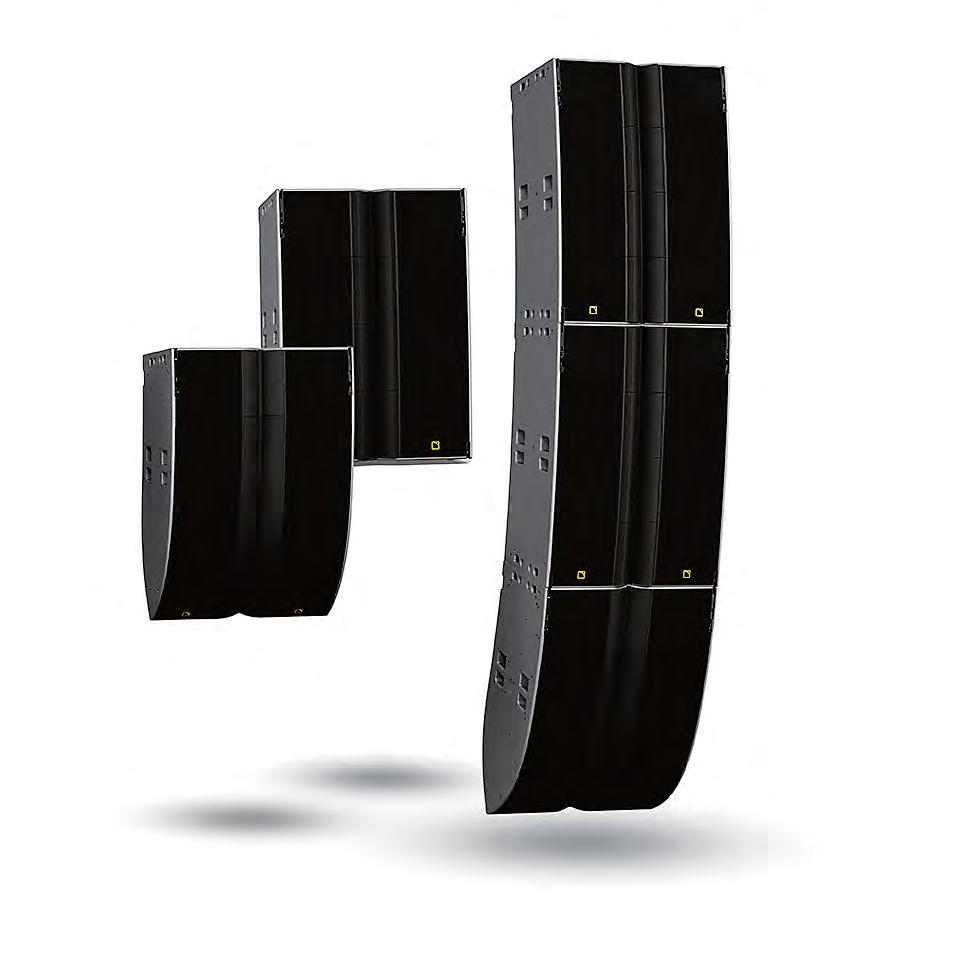
patterns: 70° or 110° symmetrical,
modules, while the L2D
elements, and two fixed L-Fins progressing from 110–140° on the bottom
encoder wheel to set up initial parameters and a
on the rear for connecting loudspeakers, the LA7.16
two LS10 switches to support Milan AVB seamless redundancy. Current amplifier technology is dimensioned to power all channels simultaneously over extended periods of time. However, in realworld applications, the LA7.16 amplified controller technology reportedly delivers power more efficiently and uses energy more effectively. The LA7.16 uses the L-SMART suite of power management technologies to mix and match any L-Acoustics loudspeaker onto one amplifier. Adopting proprietary predictive and modelling algorithms, L-SMART manages the power supply unit (PSU) and the individual amplification channels. Hardware sensors within the amplifier supply real-time information, which is analysed by the DSP to dynamically match the loudspeaker system’s needs. The PSU then provides extremely high short-term peak power, or lower power over longer hold times. The power is delivered intelligently to the advanced Class-D output stages, reportedly assuring optimum system performance at all times.
46 WORSHIP AVL September–October 2023 PRODUCTS
www.l-acoustics.com
L Series LA7.16
SARA
Martin Audio unveils FlexPoint portable series
MARTIN AUDIO’S FlexPoint portable series targeting the rental market has been released, alongside new SX subwoofer and DX controllers. Described as setting a new benchmark in performance and versatility for compact, standalone loudspeakers, the FlexPoint models feature passive two-way configuration to reduce running costs and amplifier count while promising “the very highest quality sound to match the expectations of prestige venues and top-flight touring artists”.
The FlexPoint series comprises five models, with flexible deployment covering a range of professional applications, from live sound reinforcement to distributed sound systems and immersive environments. Spanning the miniature FP4 to the more powerful FP15, FlexPoint loudspeakers reportedly promise clarity, detail and coverage at all sound levels without affecting sightlines or detracting from venue architecture.
FlexPoint’s coaxial point source technology has been pushed further by incorporating a twostage waveguide within the magnet structure. This maintains wide constant horizontal coverage out to very high frequencies, while the perimeter of the cone acts as the horn mouth, enabling pattern control to a lower frequency. Drivers can also be
FlexPoint
increasing their deployment options and ease-of-use out on the road. FlexPoint Systems can be used in conjunction with SX series subwoofers to extend low-frequency performance and impact. The SX Series itself has been expanded with two new models. The SX115 is a single 15-inch subwoofer and the SX215 is a double 15-inch subwoofer – both models allowing for pole-mounting of a FlexPoint system. This means that the SX series now comprises a single and double 10-, 12-, 15- and 18-inch as well as a cardioid 15- and 18-inch and the hybrid horn/reflex-loaded SXH218. For the optimum sound performance, Martin Audio iKON amplifiers with onboard DSP are
However, and primarily for larger installations, Martin Audio VIA amplifiers in conjunction with a DX4.0 system controller are compatible. For smaller installations utilising the FP4, FP6 and FP8, a combination of VIA amplifiers and the newly announced DX0.4 or DX0.6 controller are said to be a cost-effective option. The DX0.4 is a two-in/four-out controller, while the DX0.6 is two-in/six-out. Additionally, the company has announced a major update to DISPLAY 3 3D prediction software featuring a new sub array tool as well as a host of additional features and workflow improvements. The sub array tool enables the rapid design of ground-deployed linear arrays of subwoofers. In this version, two
“Broadside Stack” and “Castellated” configurations. For Broadside Stacks, any sub loudspeaker can be selected, while for Castellated scenarios only subs which have cardioid settings available can be utilised. The Beta 5 release also includes an early version of a tool to display the frequency response at any position on a surface, flown deployments of Martin Audio’s latest product TORUS 8, a new control in the Loudspeaker Property Inspector to optionally constrain aiming angles to those available for the pin locations in the lift bar, default speaker insertion heights and the inclusion of BlacklineX point source and subwoofer solutions.
www.martin-audio.com
QSC introduces Intelligent Active Loudspeakers
DESIGNED FOR applications ranging from portable, plugand-play setups to networked, high-tech AV productions, QSC has developed the intelligent, active L Class loudspeakers. The L Class incorporates high-output amplification, DSP, premium components, extensive system intelligence and an intuitive user interface. Onboard Dante connects the next-generation L Class to networked AV systems and connected stages.
The two-way LA108 8-inch and LA112 12-inch active line array loudspeakers are complemented by the LS118 single 18-inch active subwoofer.
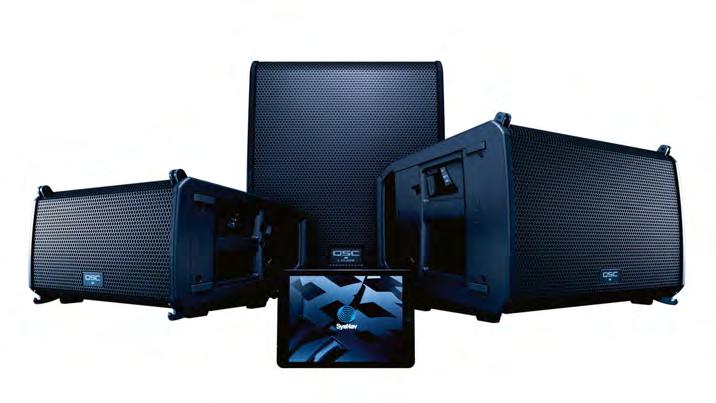
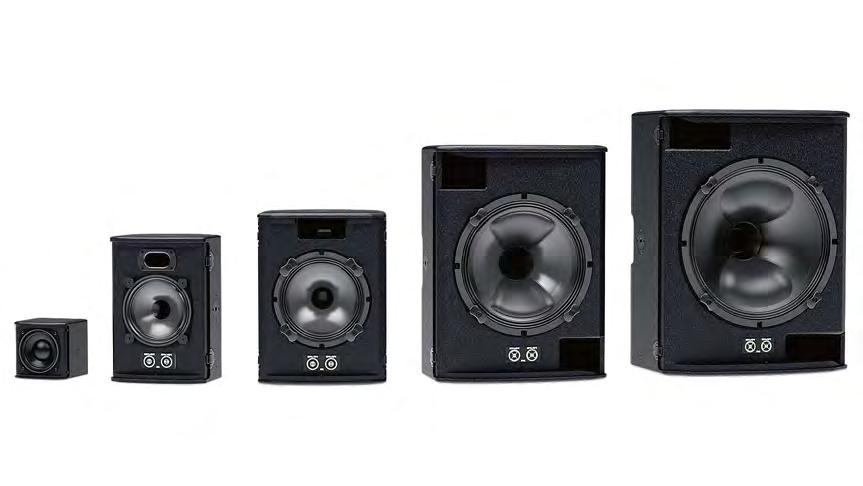
Two-way technical innovations include a QSC LEAF (LengthEqualised Acoustic Flare) waveguide and an ergonomically
designed and single operator QSC RapidDeploy rigging system. QSC
minimising unwanted energy around the sides and rear. DEEP mode
using loudspeaker stands or poles of various lengths. The LS118 can be deployed in both horizontal and vertical orientations in a ground-stack configuration or using one of its two pole receptacles. All three models feature daisy-chain connections for analogue and digital audio.
DSP further optimises and protects system performance. Two LS118 units can be arrayed in a cardioid arrangement to maximise lowfrequency output in front, while
provides cohesive phase response.
Both line array loudspeakers can be deployed using dedicated array frames, ground-stacked or mounted in one of two pole cups

The QSC SysNav (System Navigator) app for Windows and iPadOS can be downloaded for designing, configuring, controlling, monitoring and applying signal processing to individual loudspeakers, full arrays or groupings of both. The AIM (Array Installation Modeling) prediction tool visualises array coverage by positioning virtual loudspeakers and arrays in a scaled, graphical model of a space.
www.qsc.com
September–October 2023 WORSHIP AVL 47 PRODUCTS
PL Series simplifies custom setups for Q-SYS
THE PL Series of loudspeakers from Q-SYS is a portfolio of IP54-rated loudspeakers designed to fit a range of applications, including houses of worship. With line arrays, point source speakers and subwoofers, the PL Series allows integrators to create optimal audio experiences for every unique space. Meanwhile, the company claims that pairing with the Q-SYS Platform provides simplified setup, custom voicings, advanced telemetry, monitoring and customisable end user control.
PL-LA models are two-way passive line arrays (8- and 12-inch) designed for FOH in small to medium-sized venues and feature QSC’s LengthEqualized Acoustic Flare waveguide. PL-DC models are two-way point
The dual 4- and 6-inch models are designed to be ideal as stage fills, delays or under balcony fills, while the 8- and 12-inch models can act as delays or be deployed in distributed systems. The three larger models also include reconfigurable half-horn assemblies that enable more control over the sound coverage area for greater design flexibility.
The PL-SUB are passive subwoofers (10-, 12-, 15- and 18-inch). The two larger models offer omnidirectional or cardioid coverage when deploying two or more subwoofers. As a native Q-SYS endpoint, all are compatible with the Q-SYS Control engine, while the Q-SYS Reflect Enterprise Manager enables full remote monitoring and management.
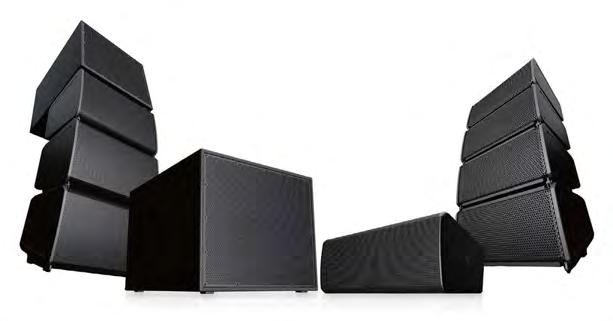
WITH THE launch of its MZ Series, HH Electronics has created a range of high-performance, multi-zone install zone amplifiers and wall controllers. At the heart of the range is the Origin multi-core processing platform. Based on 56-bit floating point precision to control input routing, level controls and EQ settings, no digital artefacts are produced and headroom is enhanced. Zone limiting can be configured for mixing and matching both Hi-Z and Lo-Z speakers. Designed for continuous usage while lowering energy consumption, Origin’s Eco power saving reduces power consumption to less than half a watt in standby mode.
Three 1U rack-mountable amplifier models are currently available.
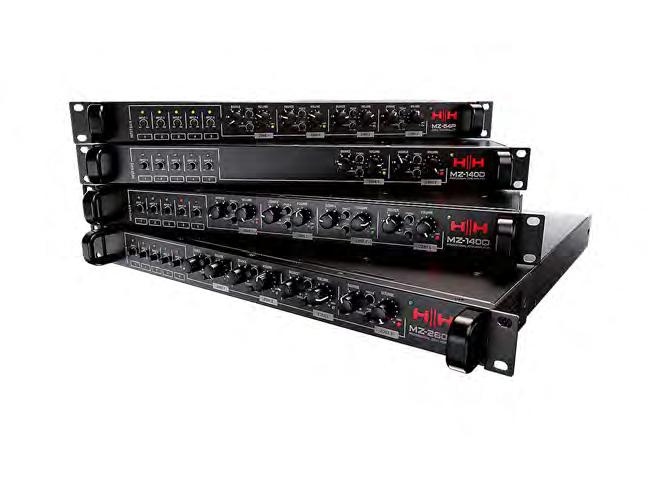
The two-zone MZ-140D features two individual 140W RMS Class-D amplifiers; the MZ-140Q is a fourzone, 4x 140W model; and the
MZ-280Q is a higher-power, fourzone, 4x 280W amplifier that can be configured to run in either 70V/100V or at minimum 4Ω impedance.
All three amplifiers are equipped with front panel controls for volume, twoband EQ and source select per zone. The five flexible input channels come with a front panel mounted gain trim control and dual combi microphone inputs allow two individual mics to be connected simultaneously, both with auto and manual priority modes. The range also includes a four-zone control pre-amplifier. The MZ-64P is equipped with five input channels for direct audio control. The amplifiers and pre-amp are supported with wall panels to enable remote control over input source and volume. Available in both US/EU formats, the controllers are finished in both black and white.
www.hhelectronics.com
Sennheiser unleashes Profile USB for plug-and-play users
AMBEO 2-Channel Spatial Audio renderer for live broadcasting has launched. The live renderer transforms standard multichannel surround and immersive formats into two channels of audio in real time. Patented controls, adapted for use in a broadcast environment, allow for fine-tuning of spatialisation settings to maintain mix integrity and dialogue intelligibility.
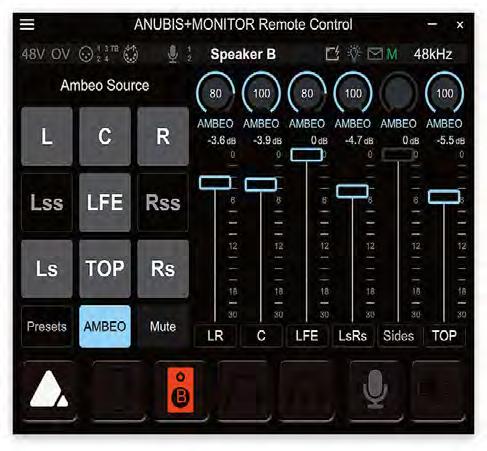
The German manufacturer has also unveiled version 4.6.0 of its Wireless Systems Manager platforms for Windows and macOS. The update adds support for the EW-DX EM2 two-channel receiver recently released in addition to features including automatic device
network, remote configuration of device setting and channel properties, monitoring and provision of firmware updates for EW-DX devices.
www.sennheiser.com

PRODUCTS
Profile USB
MZ Series
AMBEO 2-Channel Spatial Audio
How to clip and sound great with RØDE’s Wireless ME mics
rechargeable lithium-ion battery has an operating time of seven hours. The Streamer X from RØDE Microphones combines a professional audio interface and video capture
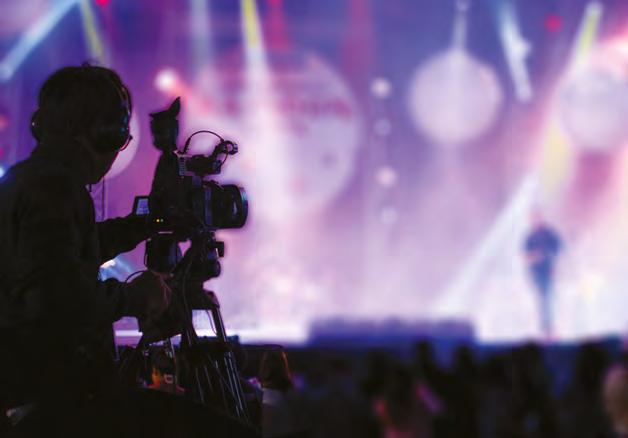
podcasters, streamers, musicians and content creators. It offers the same feature set as the revolutionary RØDECasterPro II, with the same high-power quad-core audio engine,
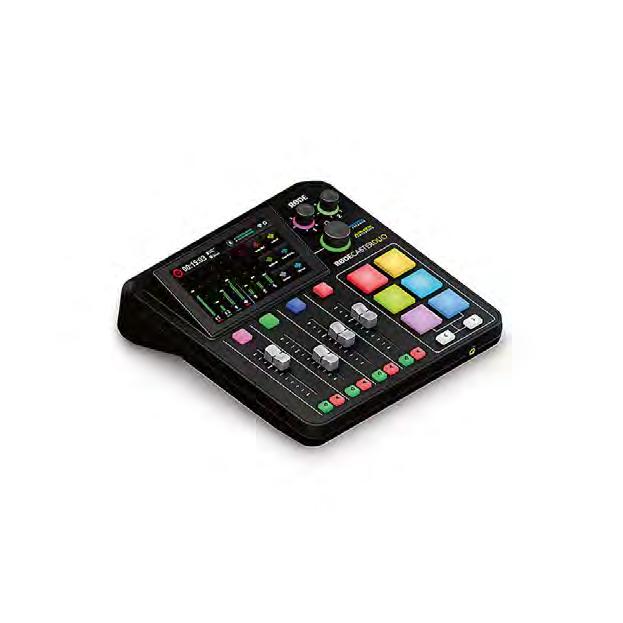

Android) and computers (Mac and Windows). They use RØDE’s Series IV 2.4GHz digital transmission to provide recording over a 100m range, and utilise Intelligent GainAssist technology to automatically control
frequency range of 20Hz–20kHz, a dynamic range of 100dB and an SPL of 122dB maximum. The Wireless ME has a TRS lavalier microphone input and a 3.5mm TRS USB-C output connection, while the internal
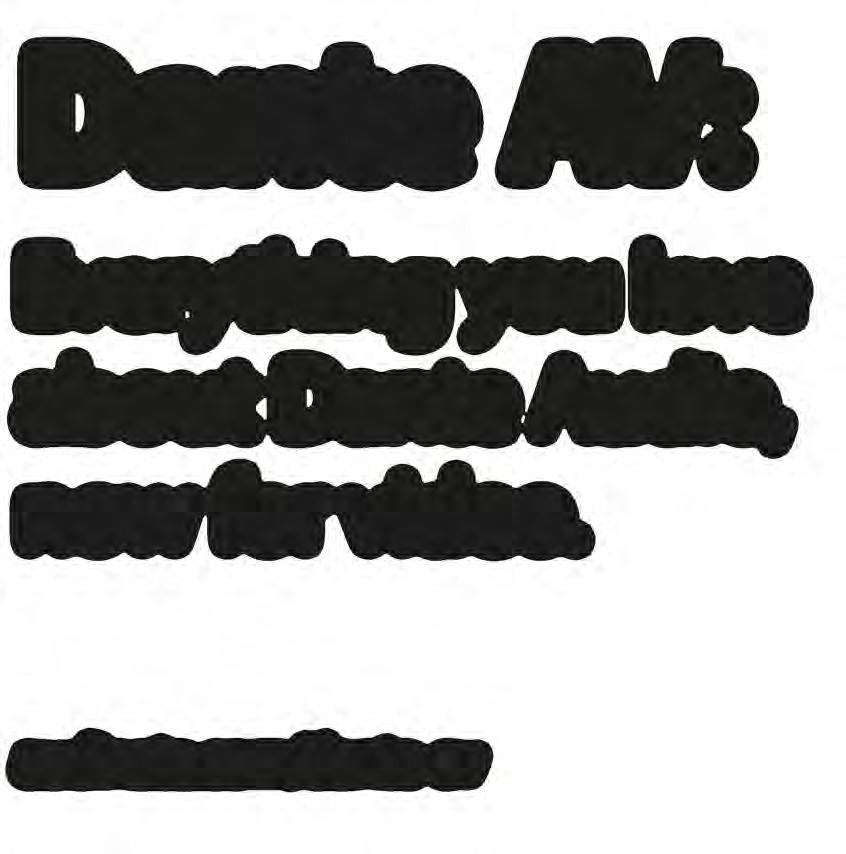
PRODUCTS
Everything you love about Dante Audio, now for video. audinate.com/dante-av
RØDECaster Duo
The power of eight
THE BP3600 immersive audio microphone is the latest addition from Audio-Technica, a broadcast audio tool capable of capturing stable, threedimensional sound beds at live events. The microphone houses eight compact capsule assemblies integrated into the body while remaining compact and lightweight enough for single-operator usability and simple setup. According to the manufacturer, this practical broadcasting solution captures realistic sound that will bring the recording location directly to listeners without the need for other extensive equipment.
The BP3600’s eight microphone modules extend from the body to form a cube with 15cm between each microphone assembly. Each assembly in the eight-channel, near-coincident array is equipped with a 12mm hypercardioid capsule to produce ideally separated, discrete signals and deliver immersive audio experiences.

When used in a typical 5.1.4 immersive scenario, the four upper microphone channels can be assigned to the upper speaker channels, and the four lower channels can be assigned to the lower speaker channels. This eliminates the need for additional decoding or latency processing during routing.
The end of the microphone’s grip includes a LEMO 2B multi-pin output connector for attaching the included LEMO-to-XLRM (x8) breakout cable, for routing the eight channels to a mixing console or audio interface. LEMO-toLEMO 2B multi-pin connector extension cables are available separately for use between the microphone and the breakout cable to increase the cable run length. Phantom power (48 VDC) is required for each channel.
Designed for podcasters, streamers and other content creators, the manufacturer has also extended its range of 20 Series products with the AT2040USB hypercardioid dynamic USB microphone. Combining the company’s AT2040 dynamic microphone with plug-and-play USB Type-C connectivity, the microphone
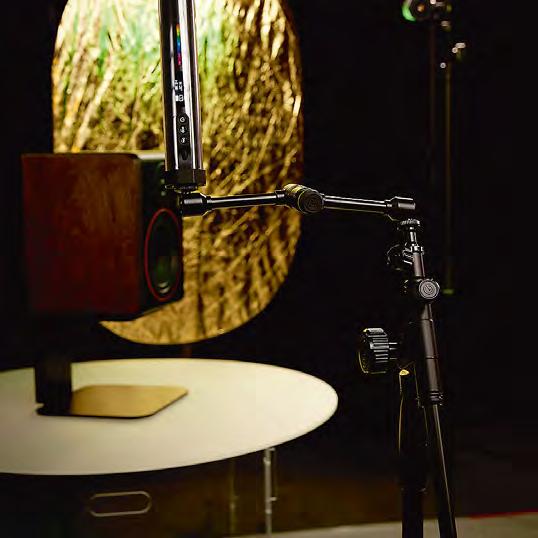
Forewarned is four-ARMed with Gravity’s quartet
STAND SPECIALIST Gravity has announced its VARI-ARM series of stands which allow all three joints of the stand to be locked and released with only one central adjusting screw. The VARI-ARM M14, VARI-ARM M38, VARI-ARM L38 and VARI-ARM L TV provide flexible positioning for a range of equipment, from cameras and monitors, to microphones, pop filters, recorders and smartphones.
resolution A/D converter with a sample rate of up to 24-bits/96kHz and a hypercardioid pickup pattern that isolates the user’s voice from surrounding noise. Its metal body includes an integrated shockmount to attenuate unwanted noise and vibration, while an internal multistage foam mesh windscreen protects against harsh spoken sounds. Additionally, its low-cut filter eliminates low-frequency sound for additional reduction of vibration and surrounding environmental noise.
www.audio-technica.com
Shure scans the spectrum
THE AXIENT Digital AD600
Digital Spectrum Manager delivers real-time, wide-band spectrum scanning and monitoring from 174MHz to 2.0GHz, spectrum analysis and frequency
coordination in a single rack unit. Six antenna connections deliver multiple coverage options, while Dante connectivity provides advanced audio monitoring of the

network. The USB port can be used to export, import or save backup scans, event logs and other important data.
The AD600 features a large, fullcolour 6.6-inch front panel screen, said to make viewing information easy, while real-time scanning and monitoring of RF activities keeps live information available when it’s most needed. Guided Coordination
Each VARI-ARM model is based on a stable articulated steel arm with three joints that allow equipment to be moved freely and precisely into any desired position. The three joints can be tightened and
Meanwhile, the VARI-ARM M38 is equipped with a 3⁄ 8 -inch thread and a mounting bracket with a wide clamping range of 15–35mm. Gravity says it is suitable as a mount for heavy broadcast microphones as well as for mounting an SLR camera on tabletops, and comes with a 3⁄ 8 -inch to ¼-inch adapter. With the same thread and clamp equipment as the M38, the VARI-ARM L38 can be used as a quick-action microphone arm for mounting to desks, microphone stands or other surfaces. Its extended arm length of 415mm makes it suitable for the alignment of microphones in front of instruments.

50 WORSHIP AVL September–October 2023 PRODUCTS
BP3600
AD600
Neumann bridges microphones and monitoring
IN COLLABORATION with sister company Merging Technologies, the MT 48 distinguishes itself as Neumann’s first-ever audio interface. Based on the Merging Anubis audio interface, the MT 48 features additional USB and ADAT connectivity, in addition to a user interface. With
KH 120 II studio monitor. The new second-generation model is stated to offer improvements in all acoustic parameters for deeper bass, higher SPL capability and increased resolution. In addition, its internal DSP engine allows for phase linear crossovers and room correction via
Lawo powers up
LAWO HAS introduced the mc²36 xp as well as a host of upgrades to its Power Core software-defined DSP mixing engine and I/O gateway. Physically identical to the mc²36 MkII, the Lawo mc²36 xp desk is an addition to Lawo’s audio production console range. Supporting up to 256 DSP channels, the mc²36 MkII is without onboard processing and can share the DSP of a Lawo A__UHD Core with up to seven other virtual or physical console surfaces. Available with 16, 32 and 48 faders, the mc²36 xp comes equipped with the same controls and touchscreens as the mc²56 and mc²96, while its onboard I/O
RAVENNA/AES67 ports with SFP; four ports can be used to expand I/O to as many as 512 RAVENNA/ AES67 channels, or to provide LAN segment separations or LAN-WAN gateway applications in largescale deployments. In addition, bidirectional Unicast RAVENNA/ AES67 streams are now supported for wide-area applications, while the front panel benefits from a USB port and an SD memory card slot for easy software maintenance operations.
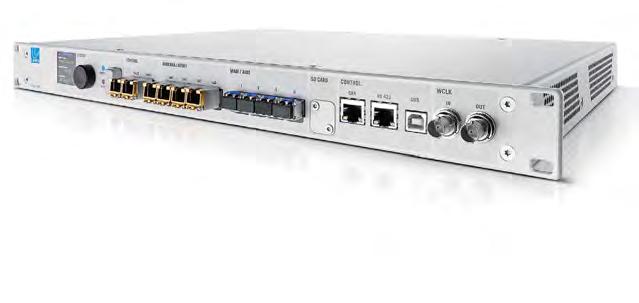
A GPIO expansion card provides eight GPI + eight GPO, along with two VCA inputs. This brings control features to the family of Power Core expansion cards, which include
The interface is also equipped with two headphone amplifiers with low output impedance. Onboard DSP effects include EQ, dynamics processing and reverb. Additionally, the MT 48’s Dual Output Technology allows users to record the pre-FX and post-FX signal simultaneously. Four independent mixers for each stereo output provide monitoring, and a touchscreen interface allows users to change parameters, including mixer levels and pan positions.


Building upon the success of its predecessor, Neumann has also announced the release of the
result, stereo imaging is described as “razor-sharp”.
The new model is also an update in sustainability, as Neumann engineers developed a patentpending amplifier technology which it says combines superior audio performance with the energy efficiency of Class-D. Although the amplifiers of the KH 120 II deliver up to 145W to the 5.25-inch woofer and 100W to the 1-inch tweeter, they only consume 17W when idle. Autostandby reduces power consumption.

www.neumann.com
GPIOs and a local MADI port (SFP). The mc²36 xp supports both 48kHz and 96kHz operation, immersive audio mixing and IP standards, including ST 2110, AES67/RAVENNA and ST 2022-7. It is a HOME native and offers roduction file compatibility with Lawo equipment across the mc² range.
Lawo has also unveiled the newest generation of its Power Core, the Power Core Rev3. The 1U Power Core platform is a scalable licence model which uses RAVENNA/ AES67 networking; AoIP facilities built with Power Core can scale from simple on-air suites to bigger broadcast networks with thousands of audio channels. Additional features in Rev3 include double the number of
card with two mic/line inputs, two line outputs and two HP outputs. New DSP capabilities include a loudness leveller, high-granularity EQ with extended “Q”, a self-keyed side-chain filter for dynamics processing, de-esser with adjustable trigger frequency and support for up to eight AutoMix groups and 16 VCA groups.
The addition of BMCA-PTP grandmaster failover capability ensures constant master clock synchronisation, while Power Core Rev3 now supports Lawo’s eightslot audio I/O extender (AIOX). Up to 20 AIOX devices populated with I/O cards can connect to a single Power Core, expanding the system I/O by 1,280 additional channels.
September–October 2022 WORSHIP AVL 51 PRODUCTS
www.lawo.com MT 48 KH 120 II
mc²36 xp
Power Core Rev3
Marshall adds NDI technology to its compact 4K60 camera
THE CV420NE from Marshall Electronics is an NDI|HX3 version of its ultra-wide 100° angle-of-view streaming POV camera, which offers digital robotic movement of pan, tilt and zoom of HD
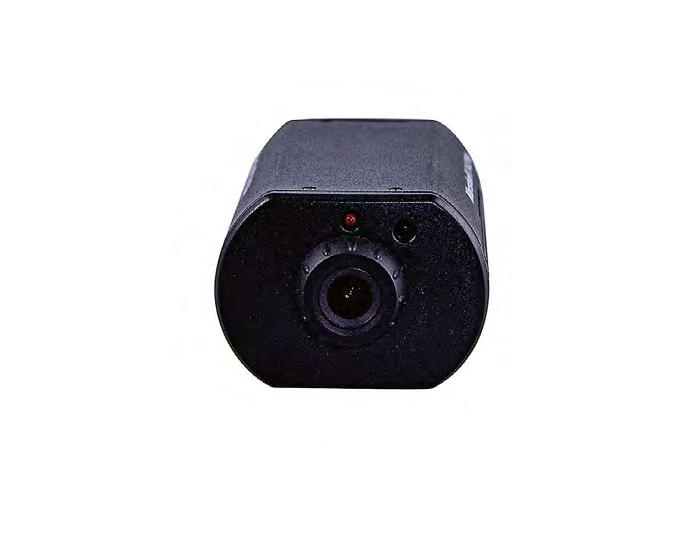
Panasonic advance its 4K credentials
DESIGNED FOR broadcasting and live event applications, Panasonic has developed the AW-UE160W/K PTZ camera. Finished in pearl white or black, the flagship model combines the flexibility of a PTZ camera for freely setting up in position and the functionality of a system camera commonly used in broadcast. With the simultaneous release of the AW-SFU60, the Japanese brand has added an optional software key to activate SMPTE ST 2110 for the AW-UE160 series.
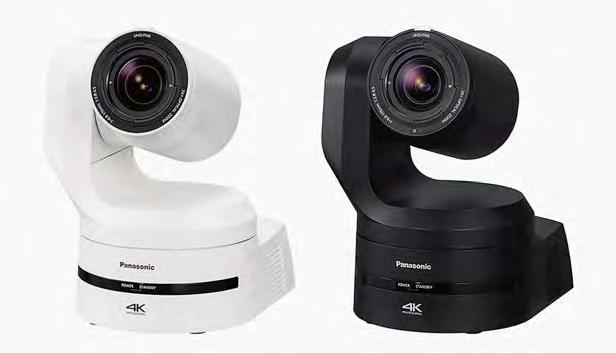
Promoting a high sensitivity of F14/2,000 lx, equivalent to a studio camera, and the latest generation image processing found in Lumix, the AW-UE160 is equipped with a phase detection autofocus that enables highspeed focusing to capture fast-moving subjects. Featuring a 20x optical zoom and offering a horizontal view range across 75.1°, the AW-UE160 is the first PTZ to support the SMPTE ST 2110
IP transmission standard and wireless transmission with a 5G mobile router via USB tethering. For combined operation with system cameras, it supports a return input and a rear tally lamp that can also be lit in yellow. In addition, it is equipped with a cropping zoom function that can output multiple angle videos with a single camera and 2x high-speed output (HD) from SDI/HDMI. Support for a variety of interfaces and protocols (SMPTE ST 2110, high band width NDI, NDI|HX, SRT, FreeD, RTMP/RTMPS, etc.), the 4.6kg camera can fit into existing systems. Even if output is performed from multiple video terminals, there is no restriction on video output, promoting simulcast operation in 4K. The waveform display function and the horizontal level gauge display function have been added to reduce setting up time and adjusting the video.
www.panasonic.com
Clearly Hitachi
OFFERING SEAMLESS fibre-to-triax transition, the Z-HD6500 HD camera system provides HD visual quality and enhanced price performance for live productions. Supporting multiple HD formats to 1080p, the Z-HD6500 camera’s design includes three 2⁄3 -inch CMOS image sensors with global shutter to enable the clear capture of BT.2020 colour gamut compliant video. The global shutter technology reduces artefacts including banding and flicker that occur when capturing video in houses of worship with LED lighting and large LED displays. The Z-HD6500 also delivers high sensitivity for HD production.

Delivering sharp and clear images, the DK-H700 is a multi-format, reference display camera that incorporates 2⁄3 -inch, RGB and 8.3 million pixel CMOS sensors. Designed as a standalone camera system or as a complement to the SK-UHD7000 Series in larger productions, the DK-H700 can be deployed in live events venues, in addition to AV applications. Complying with the ITU-R.BT.2020 wide colour gamut specs, the DK-H700 complements the camera’s dynamic range by operating within REC BT2100 High Dynamic Range standards. Other features include a ¼ ND filter to
HD resolutions. The camera’s 4.5mm lens features an ultrawide 100° angle-of-view delivering high-quality video with no spherical distortion. The CV420Ne’s digital pan, tilt and zoom comes with more than 250 presets that are savable and selectable from any number of command sources,
including IR remote, NDI|Tools, Camera Control Software, web browser GUI, OBS plugins, vMix and a host of other compatible soft codecs and devices.
With the latest NDI|HX3 codec,
latency as Full-NDI at less than 100ms end-to-end and has video quality performance closer to premium Full-NDI where video quality is not lost from camera source when sent over the network.
www.marshall-usa.com
produce a minimised depth of field, adding to artistic value and reducing the moiré effect on videowalls.
Kokusai’s latest HD and 4K camera technology, the SKUHD7000-S2 can convert a 4K camera with an affordable licence upgrade option. In addition to offering a lower initial purchase point for customers wanting to upgrade to 1080p, it also provides a cost-effective, field-upgradeable path to 4K.
www.hitachi-kokusai.co.jp
52 WORSHIP AVL September–October 2023 PRODUCTS
AW-UE160
Z-HD6500
Unlock your Soundscape.
Hearing, seeing, feeling, connected. A new listening experience. Involvement with a most beautiful intensity. The interaction between artist and audience, more intimate than ever before. Enveloping sound reinforcement, succeeding so much more than right and left.
d&b Soundscape gives designers, engineers and artists the tools to create exceptional audience experiences.
dbsoundscape.com
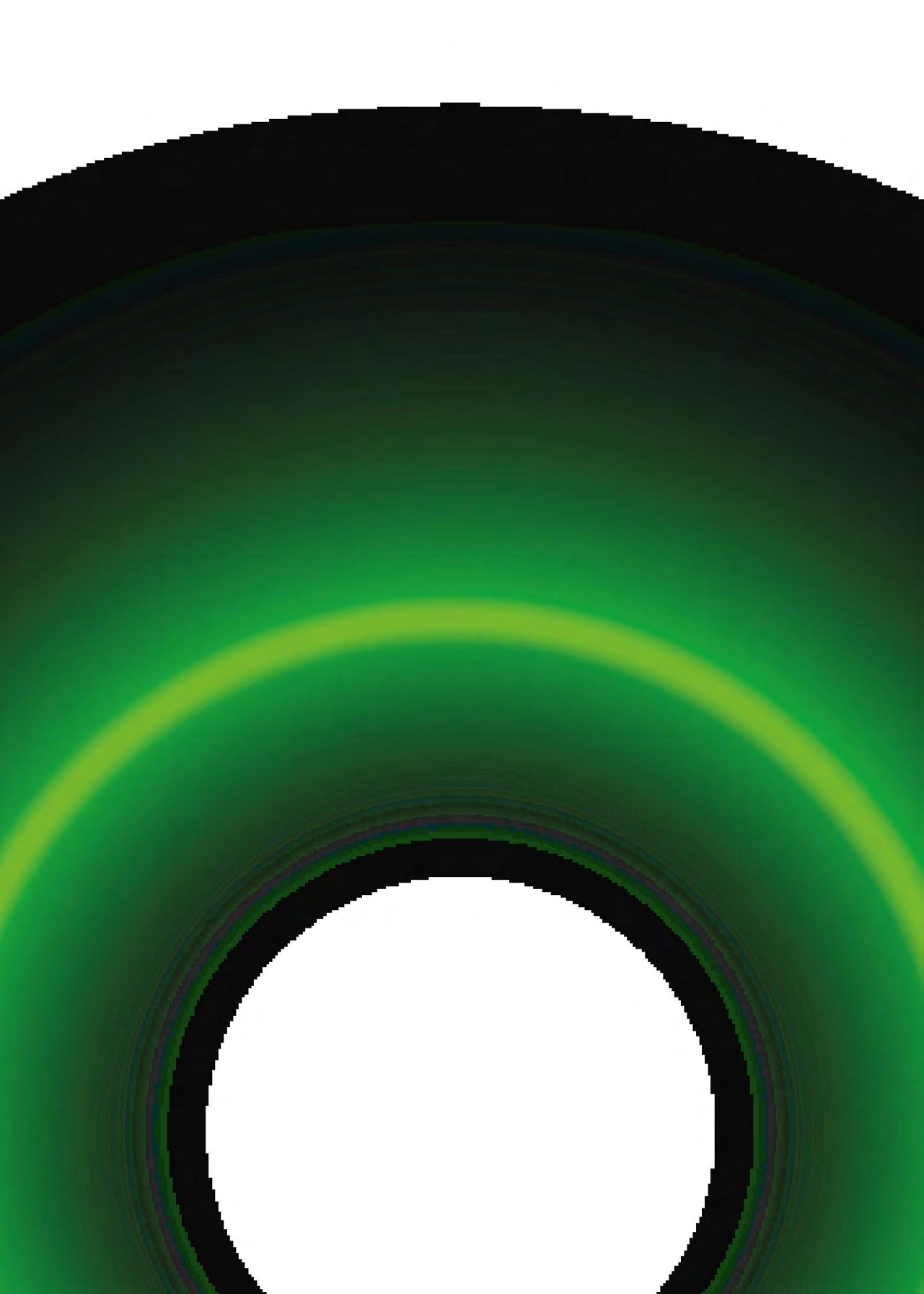
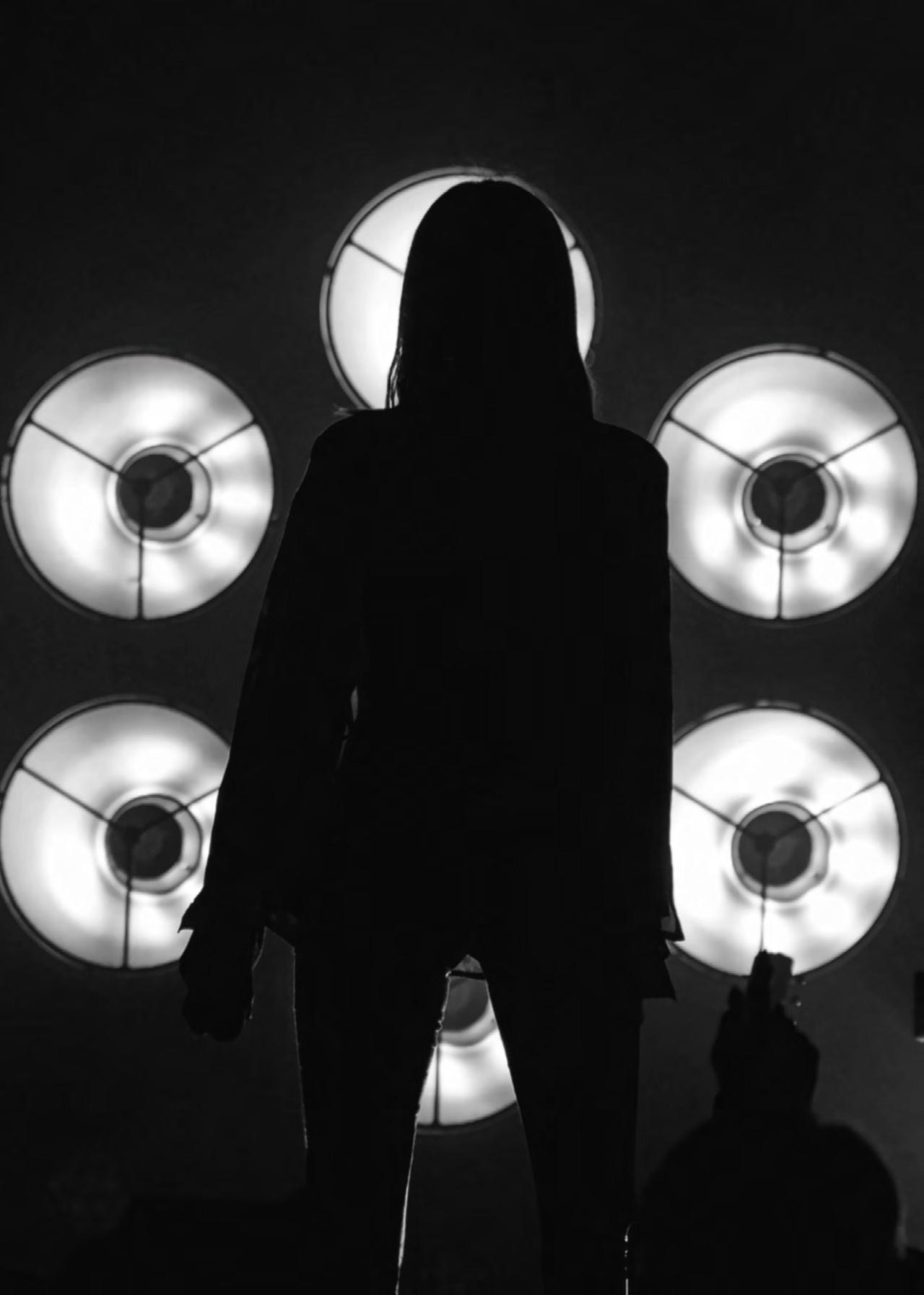 Photo: Tanner VonnahmeI, unsplash
Photo: Tanner VonnahmeI, unsplash
Blackmagic releases capture and playback PCIe cards

and a four-port 10G Ethernet switch. It supports livestreaming, talkback and optional internal network storage, as well as a joystick for precise DVE control.

The ATEM 4 M/E Constellation 4K is an Ultra HD model of the ATEM Constellation family with 40 12G-SDI standards-converted inputs with
systems. It features 10G Ethernet which means it can support up to three separate 3G-SDI video channels at the same time. Each channel has independent inputs and outputs, for connecting up to six different SDI devices. It also includes a front panel with a colour LCD for monitoring, menus and diagnostics.
uncompressed, broadcast-quality video directly into 2110 IP-based broadcast systems. The cards support multiple video channels plus each channel can capture and play back at the same time. DeckLink IP provides total IP network security as all video is captured and played back using the DeckLink IP’s frame buffers, which act like a video-based firewall, isolating the Ethernet port from anything other than video and audio.
There are three models in the family. DeckLink IP HD features three channels of capture and playback to 2110 IP broadcast systems via a
channels of capture and playback to 2110 IP broadcast systems via an SFP-based optical fibre Ethernet connection. DeckLink IP/SDI HD allows connection to both 3G-SDI and 2110 IP systems.
The manufacturer has also released the ATEM Television Studio 4K8 live production switcher that combines all the broadcast features of the ATEM Television Studio HD with additional support for Ultra HD standards up to 2160p60. The ATEM Television Studio 4K8 features eight standardsconverted 12G-SDI inputs, 10 12G-SDI aux outputs for external recorders
JVC’s bundles of joy
JVC PROFESSIONAL VIDEO is hoping to give a boost to smaller production teams with five entry-level video production products aimed at houses of worship.
Available as part of a bundled package with two or more JVC PTZ cameras, the RM-LP5G Connected Cam PTZ joystick controller features a dual-axis joystick and zoom bridge and can manage up to five PTZ cameras. Its four-colour LED multiscreen is designed to simplify setup and operation, and it supports VISCA, UDP and PELCO P/D control protocols over IP, RS-422 and RS-232.
Meanwhile, the KM-HD6 Connected Cam six-input switcher features four SDI and two HDMI inputs, with a USB Type-C output enabling users to stream video with embedded audio to any platform. Additional output options include two 3G/HD/SD-SDI outputs, one
well as one each of HDMI and SDI multi-view outputs. The switcher also boasts a variety of production options, such as automatic cut transitions; mix, fade and wipe effects; an adjustable PiP/PoP window; and a GPIO interface for live tally. The integrated audio mixer also features 3.5mm and RCA audio

support for standards up to Ultra HD 2160p60. Featuring the same features as the ATEM 4 M/E Constellation HD, the 4K model has 24 12G-SDI aux outputs, 16 upstream ATEM advanced chroma keyers, four downstream keyers, four Ultra HD media players and two SuperSource processors. The 2110 IP Converter 3x3G is a rackmount converter which converts 3G-SDI devices to 2110 IP broadcast
Blackmagic Design has released DaVinci Resolve 18.5, which adds new AI tools, over 150 feature upgrades such as Resolve FX relight, speech to text editing, automatic subtitling, AI audio classification, Universal Scene Description file support and new menus on the Cut page to give customers more time to be creative.

www.blackmagicdesign.com
input and output, along with USB Type-C HDMI- and SDI-embedded audio.
As an alternative to the KM-HD6, the KM-IP8 or KM-IP8S4 Connected Cam vMix studio switchers can each manage up to eight NDI inputs using vMix 4K licensed software for Windows 11 Pro. The KM-IP8S4
also features four 3G-SDI inputs with bidirectional connectors and mini SDI-to-SDI cables. Both 2U devices offer several output options, including one 3G-SDI, one HDMI and four DisplayPort, as well as a Gigabit Ethernet network port. vMix is a complete live video production software solution that provides live mixing, switching, recording and livestreaming of SD, Full HD and 4K. The RM-LP350G Connected Cam vMix control surface is a desktop controller for vMix and works with the KM-IP8 studio computer. It provides four-channel PTZ camera presets, panning and zoom, and features a lowprofile transition fader. The controller also supports 12-channel PGM and PVW switching, as well as selectable PGM/PVW in four groups of 12 downstream key settings. pro.jvc.com
54 WORSHIP AVL September–October 2023 PRODUCTS
RM-LP5G
DeckLink IP
DaVinci Resolve 18.5
disguise launches pixel-perfect video playback solution
DESIGNED SPECIFICALLY can be added and synced together app and previewed in the 3D space. All project content is stored and collated in disguise Cloud. The EX 3 can also be used alongside disguise’s camera-based projector calibration system, OmniCal, to quickly and accurately align
To facilitate production for xR and live events, disguise has also developed a tool with ZeroSpace that bridges Spout technology and RenderStream. Integrated into most commercial VJ software, Spout is available as a free plugin for the open-source cross-platform screen casting and streaming app, OBS Studio. This allows sharing of the same GPU video texture with content render engines for uncompressed, zero-latency frame
The integration of SpoutBridge with disguise is the latest development
Roland aims to simplify live events
VR-400UHD
THE VR-400UHD
AV mixer is described by Roland as an easy-to-use 4K switcher that gives anyone the power to run a successful live event. With its two touchscreens, users can quickly set various scene presets, preview them in real time and confidently run transitions by knowing precisely what viewers will see in every instance. The VR-400UHD can preview eight scenes at once on the touchscreen and, with eight programmable scene banks, the switcher can hold up to 64 possible saved scenes, providing houses of worship with all the presets they may need for production.
with seven HDMI ports, the VR-400UHD supports high-quality video up to 4K/60p with four cross points. The fourth cross point has four HDMI inputs, so additional sources can be connected and instantly assigned with a scene switch. It also includes a 14-channel audio mixer for combining analogue inputs with embedded digital audio.
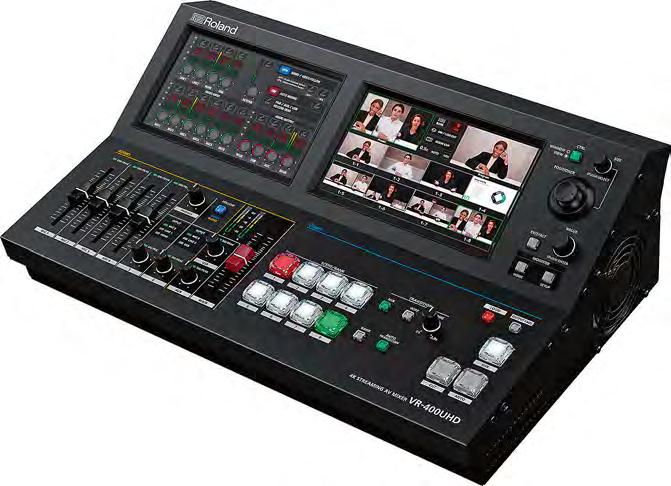

The USB-C port outputs up to 4K/30p video with audio to a PC for high-end 4K livestreaming of the event from the venue.
Meanwhile, the VR-120HD direct streaming AV mixer provides audio
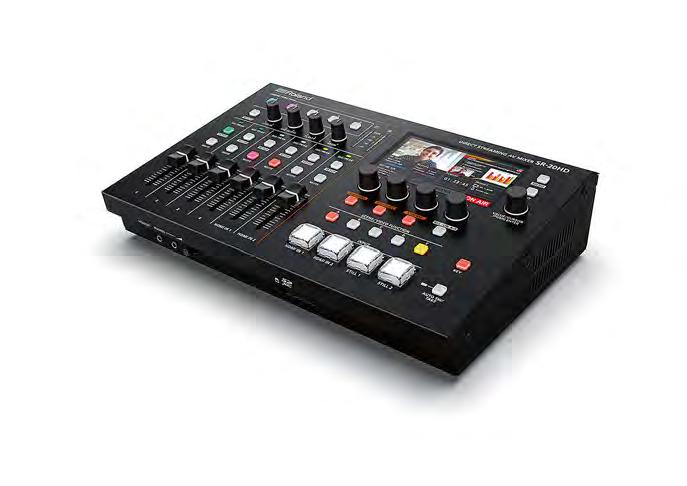
and video I/O, a large touchscreen and hands-on controls. The unit gives a single operator all the tools needed to manage any mid-level hybrid production. Advanced features simplify difficult tasks with customisable workflows, deep automation functions, remote PTZ camera control, one-touch macro sequencing and streaming over LAN and USB. The operator can assign sources to eight cross points on the fly – including live video inputs, still images and video clips – and prioritise cameras and
in the disguise/ZeroSpace relationship. By promoting the distribution of video content over IP networks between disguise machines, it offers 12-bit RGBA colour, ultra-low latency and ease of setup while removing the need to distribute SDI inputs across all physical machines. Users need to configure their Spout application on a disguise rx render node to target the RenderStream bridge.
Aimed at installations and events with large LED displays that require a simpler method to distribute live and interactive visuals across displays, the solution minimises cabling and enables resolutions and colour depths beyond HDMI and SDI. Visualists can control large LED screens and take advantage of cluster rendering with video-over-IP.
www.disguise.one
client sources such as computers, tablets, gaming consoles and legacy 4:3 devices.
Finally, the SR-20HD direct streaming AV mixer has been created to add a full audio mix to any production and encode for livestreaming without a dedicated PC. The latest version 1.20 firmware update brings improved streaming visual quality, backward/forward video preview dialogue and additional tools for setting up detailed video playback. The SR-20HD combines an audio mixer, preview screen, recorder/ player, streaming encoder and two HDMI inputs in one unit. Presenters can stream directly to various online platforms or by RTMP to a CDN without needing a computer, removing
SR-20HD
PRODUCTS
3
EX
It’s all Greek to Astera with Fresnel products
NAMED AFTER a Greek mythological figure and a large constellation of stars, LED lighting specialist Astera has launched the PlutoFresnel for medium to small applications, and the LeoFresnel, an LED alternative to its 1K Fresnel for applications requiring more power and punch. Utilising Astera’s award-winning Titan LED engine, the Fresnels are the company’s first battery-powered Fresnel lighting fixtures and are supplied as a complete package with barndoors and a full yoke with TVMP adapter for stand mounting.
The PlutoFresnel has an in-built battery with up to three hours run time. Weighing 4.5kg, the fullspectrum, high-rendition Titan LED engine offers an output comparable to a traditional 300W Tungsten Fresnel, yet the power consumption is
less than 80W. The larger LeoFresnel is comparable in light output to a standard 1K tungsten lamp. At 14kg in weight, it has a two-hour
onboard battery and a 250W power consumption.
Both fixtures offer 15–60° beam angles with no colour fringing, as well
as wireless and wired DMX control, and are supplied with removable handles and with multiple mounting options.
On both units, the Fresnel lens is also detachable so the light source can be used in different ways. Astera says it will be launching a series of projection lenses which will transform it into a multipurpose fixture with “potent projection capabilities”, complete with a slot for size B glass or metal gobos.
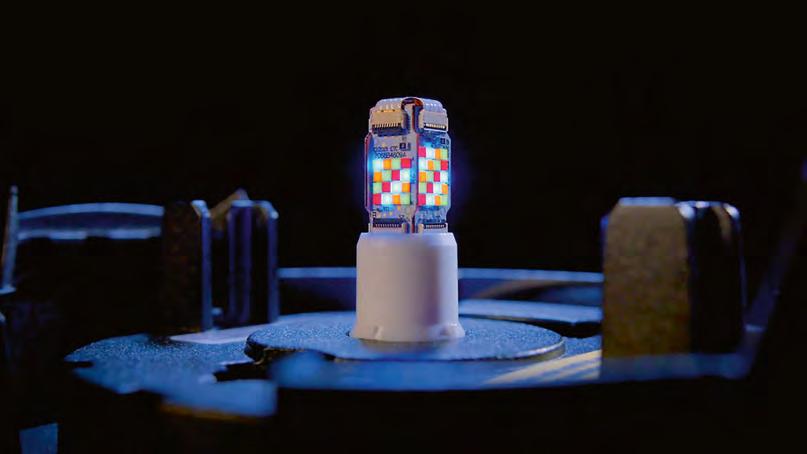
Both sizes of Astera Fresnel have a four-leaf barndoor system that can be extended to eight leaves and are compatible with several DoP Choice products, including the Rabbit Rounder for beam modifiers and various soft boxes.
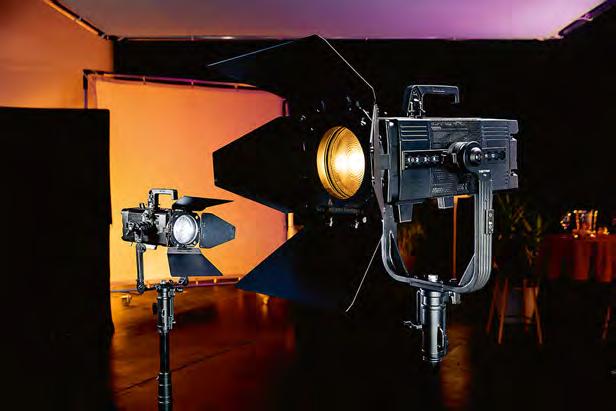
www.astera-led.com
ETC’s LED upgrade is easy on the environment
adjustment and a library of Source Four lens tubes. Real-time updates are now possible with ETC’s v3.2 software update to its flagship Eos lighting control family. As modern lighting systems encompass more controllers and devices, access to network configuration controls are paramount, and Eos v3.2 brings key settings from the shell into the Eos application itself, allowing them to be saved in the show file and adjusted in real time, without leaving the session or stopping output.
retrofit to its Source Four ellipsoidal fixture, which the company says is as good for the environment as it is for the pocket. The company’s Source 4WRD Color II LED engine allows users to upcycle any existing ETC incandescent Source Four fixture to an RGBA LED fixture. This nondestructive retrofit reduces waste by maintaining the majority of the Source Four incandescent fixtures in the field.
Compared to the previous generation of Source 4WRD Color, the engine uses a quarter of the power. Meanwhile, the addition of the snap-in reflector and the brighter red emitter provide an intensity increase of 36% in warm whites, while ETC claims it dramatically improves colour rendering performance.
It can be a full spot profile, a full PAR or full PARNel fixture, and has 12 built-in colour presets and five built-in sequences. It maintains Source Four features such as shutter cuts, pattern projection, field peak-to-flat
Device settings are also now stored in profiles within the show file, allowing users to bind devices for quicker configuration. With the template file feature, starting from a known point is as simple as starting a new show. Output protocol settings
have also been brought into Eos and expanded to support configurations for dynamic and static systems, laying the groundwork for future system expansion. Updates include fixture-, deviceand session-level adjustment settings, as well as expansions in ETC’s built-in Augment3d programming environment. Augment3d now include a Zones feature which provides the ability to define regions in the 3D model space and automatically affect fixture behaviour when they intersect with the zone. This functionality extends to attaching a Zone to a moveable element to allow it to affect the behaviour of static fixtures as well as movers.
Colour control has also received upgrades with the ability to set configurations for fixtures. As users build LED fixtures, Eos dynamically generates a gamut to provide use of the colour tools with any fixture. The software also adds native and virtual CIE XY controls via the colour tools and command line to keep users up to date on any communication path the fixtures may use.
Eos v3.2 also introduces implementation for Vectorworks and the ability to import glTF from other drafting suites. Other features include macro search, cue alerts and focus palettes that follow Augment3d objects. www.etcconnect.com

56 WORSHIP AVL September–October 2023 PRODUCTS
Eos v3.2
Source 4WRD Color II
Ayrton raises its Profile
AT JUST
lightweight Rivale Profile is the latest addition to the company’s Classical IP65 3 Series. Punching above its weight with a 160mm frontal lens and a 450W highefficiency LED module, Ayrton says its high-definition progressive CMY colour-mixing system provides a perfect reproduction of pastel colours. A variable deep red channel optimises the colour rendering index at low levels and offers a progressive red with a high level of saturation. A progressive CTO and a seven-position colour wheel complete the palette of tools dedicated to colour.
Calibrated at 6,500K with a luminous flux of 27,000 lumens, the Rivale Profile can produce a beam of 4° with a 13:1 zoom ratio and a zoom range of 4–52°. Other features include seven rotating gobos, eight fixed gobos, a framing section that allows the precise positioning of each shutter blade on 100% of the surface with a rotation of ±90°, an iris diaphragm,
LIGHTING MANUFACTURER
ADJ has added a raft of new products to its growing catalogue.
First is the Encore LP12Z IP, an IP65-rated zooming LED PAR fixture equipped with 12 20W four-in-one RGBL colour-mixing LEDs, including 64 built-in colour macros and tunable white control (2,700–6,500K). Its lime chip allows for an increased colour palette CRI of 84.4 and features a motorised zoom to remotely control coverage for a variable field angle of between 9–50°.

the Focus Spot 7Z
simplified lens guidance and integration of low-density optical components, mean Ayrton
that can deliver a light output of 13,000 lumens. The Argo 6 can obtain a highly intense beam
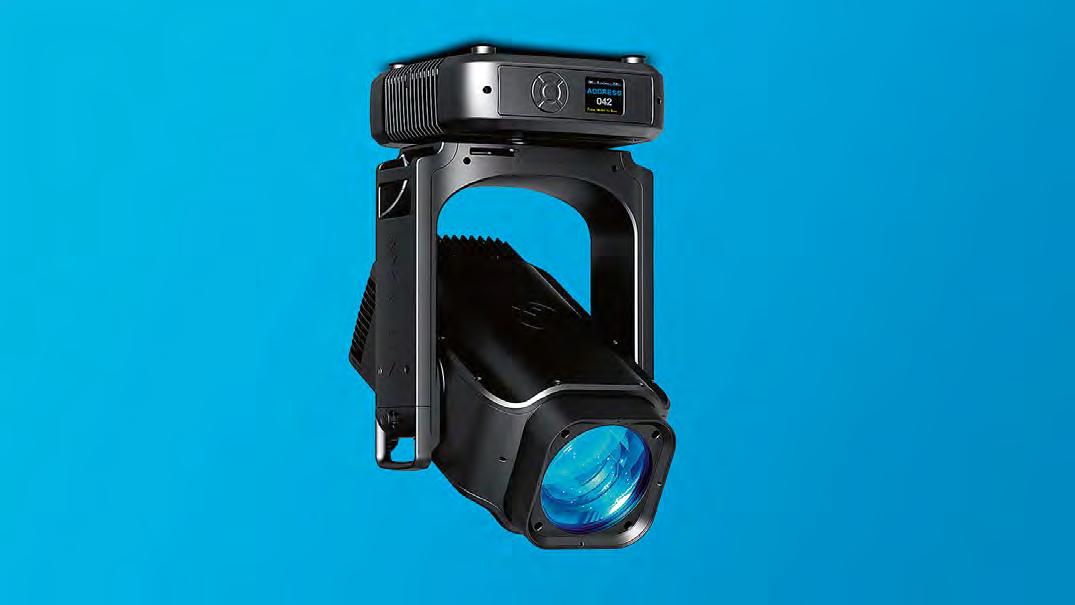
tilt movement. The Argo 6 FX is also equipped with LiquidEffect, Aryton’s high-definition effects system which generates complex graphic effects. Both the Argo 6 Wash and Argo 6 FX can be used alone or in combination
part of Ayrton’s Multi Sources IP65 6 Series.
www.ayrton.eu
expands ADJ’s Focus Series of LED-driven moving heads. Its 420W white light LED engine generates an even output of 20,000 lumens and the fixture features a comprehensive suite of beam-shaping tools, including motorised focus, iris and zoom (6–48°), electronic dimming and variable speed strobing (1–20Hz). CMY provides a wide colour gamut, while a variable CTO flag offers white light output with variable colour temperature between 2,700K and 8,000K. The fixture has a separate colour wheel as well as an indexed rotating
animation wheel, two rotating prisms (four-facet circular and six-facet linear) and two frost filters.
The Focus Flex L19 moving head is an LED wash-zoom with an output of 7,814 lumens capable of creating wash, beam and pixel effects. Its wide zoom range of 5–50° is powered by 19 40W fourin-one RGBL colour-mixing LEDs, each of which can be controlled independently. A virtual CMY mode allows control alongside native CMY colour-mixing fixtures, while it also offers Virtual Foreground and Background Colour Wheel control. White light output has a variable colour temperature between 2,700K and 10,000K.

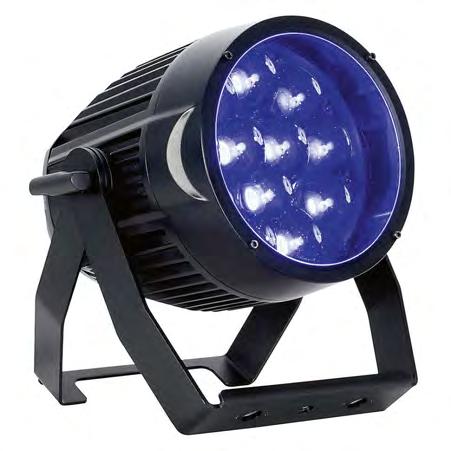
The Element H IP is a compact, IP54-rated, uplighting fixture which features four 20W six-in-one RGBAW+UV colour-mixing LEDs, an internal rechargeable battery and onboard wireless DMX. The Element H6 Pak is supplied as a set of six flight-cased units with onboard battery charging and a UC-IR wireless remote, while the Element H IP Chrome features a polished chrome finish.
Finally, Accu-Cable Power Bones are power distribution boxes
that feature locking Seetronic IP65-rated power input and thru connectors on either end, and two outputs on either side. Three versions are available: the POWER BONE T1ED, with four Edison output sockets; the POWER BONE T1PC, with four Seetronic indoorrated locking output sockets; and the POWER BONE T1T1, with four Seetronic IP65-rated locking output sockets.
www.adj.com
September–October 2023 WORSHIP AVL 57
ADJ adds a dash of lime
Argo 6
Rivale Profile
Focus Spot 7Z
Encore LP12Z IP
Practice makes perfect
Mikhail Sujan, business development manager, technical sales, at Thomsun Trading, Dubai puts his years of sound engineer experience to good use at his local evangelical church
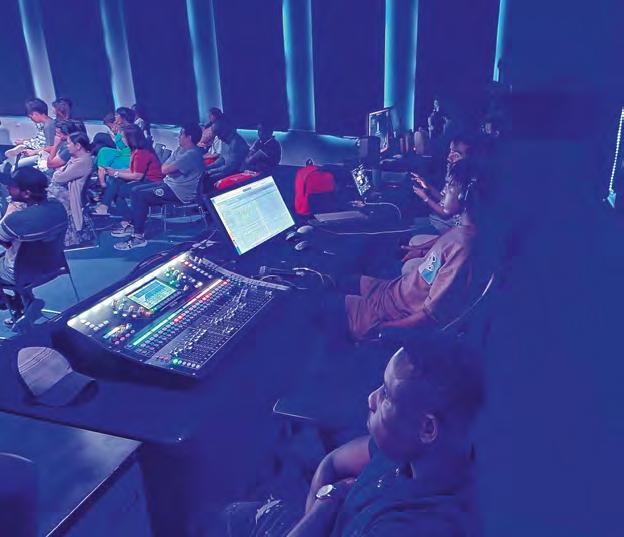
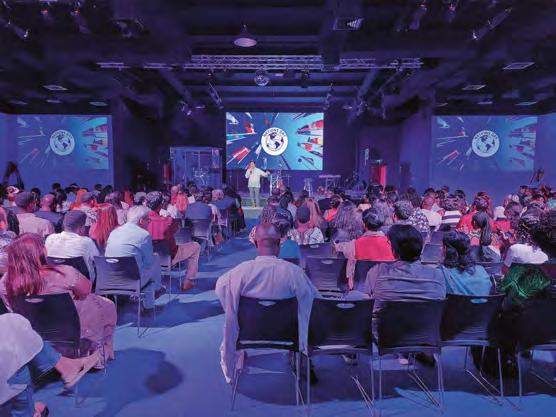

HAVING ALWAYS HAD A passion for music and speakers, Sujan completed an audio engineering course in India in 2009, followed by three years working as a sound engineer in a church in Chennai along with doing his Bachelor’s degree in Electric Media. During this time, an opportunity to work in a studio came along. “I only managed it for a couple of weeks,” he laughs. “I didn’t like being in a closed space with headphones on and just listening to music. It didn’t motivate me at all – I like the pressure of being in a live setting.”
Sujan began volunteering at Citygates church shortly after arriving in Dubai in 2014 and has stayed there ever since, apart from a two-year interlude to study a Master’s degree in Entertainment Business in Orlando, Florida. Sujan joined Thomsun Trading as business development manager, technical sales, in 2019, one of the leading AV distributors in the UAE. Having merged with a second church last year, Citygates is an evangelical Christian church based in the Al Quoz area of the city which holds two English-speaking Sunday services, each welcoming between 300 and 350 worshippers. While the format of the two services is the same, the later service is geared slightly more towards younger members, with the volume levels raised a little higher. “Initially, we tried having only one service but we were having to push a lot more sound through the speakers and we only have two tops and two subs per side,” explains Sujan. “We didn’t want to overpower the speakers too much, so that’s when we decided to hold two services.”
After years of moving around various temporary venues such as hotels, schools and theatres and Saturday band practice in the band members’ homes, the church moved into a warehouse in Al Quoz
in September 2022 which also afforded Citygates the luxury of not having to load the AV equipment in and out every weekend. However, it took nearly two months to get the sound right, with the building requiring acoustic panelling, carpeting and cushions on the seats to help absorb reflections.
Before moving to the new warehouse, the church had updated its main PA system with Meyer Sound LINA speakers and 750-LFC subwoofers along with an Allen & Heath SQ-6 mixer. “This meant that when we moved into the warehouse, we were able to focus more on updating the lighting and video equipment. Livestreaming was very new to us during Covid –we had a lot to learn! We use a software called E-Cam and then upload the stream to YouTube. At the start of the pandemic, we would connect an iPhone to E-Cam with a USB cable which was the best solution for us at the time because there wasn’t any money coming into the church. Eventually, we were able to invest in one really good camera. In terms of audio, we were struggling to control the sound so that’s when we started using a lot of Waves plugins. Now, we also have a 5m x 4m
LED screen, two projectors and a confidence monitor for the band.”
Through his work with Thomsun, Sujan was able to convince the church to invest recently in Sennheiser in-ear monitors and custom in-ears for the band members. “Everyone’s happy with their wireless bodypacks and microphones because they’re not fixed to one place anymore – they can move around,” continues Sujan. “I’m very lucky because the
before the service, I can tweak the EQ or increase the gate depending on the noise levels.”
Clearly Sujan and his church band have gained years of experience together, but there’s always something on any sound
plan is to get five more Sennheiser handhelds for the main vocals. So, I’d like to add one more speaker and one more subwoofer on each side. It’ll improve the quality of the audio so we don’t have to push too much sound through our two current cabinets.” Here’s hoping it’s not too long before Sujan can turn his wish list into a reality.
www.citygatesdxb.com
www.thomsunmusic.com/proav
58 WORSHIP AVL September–October 2023 THE TECH VIEW
Mikhail Sujan
The Allen & Heath SQ-6 at FOH



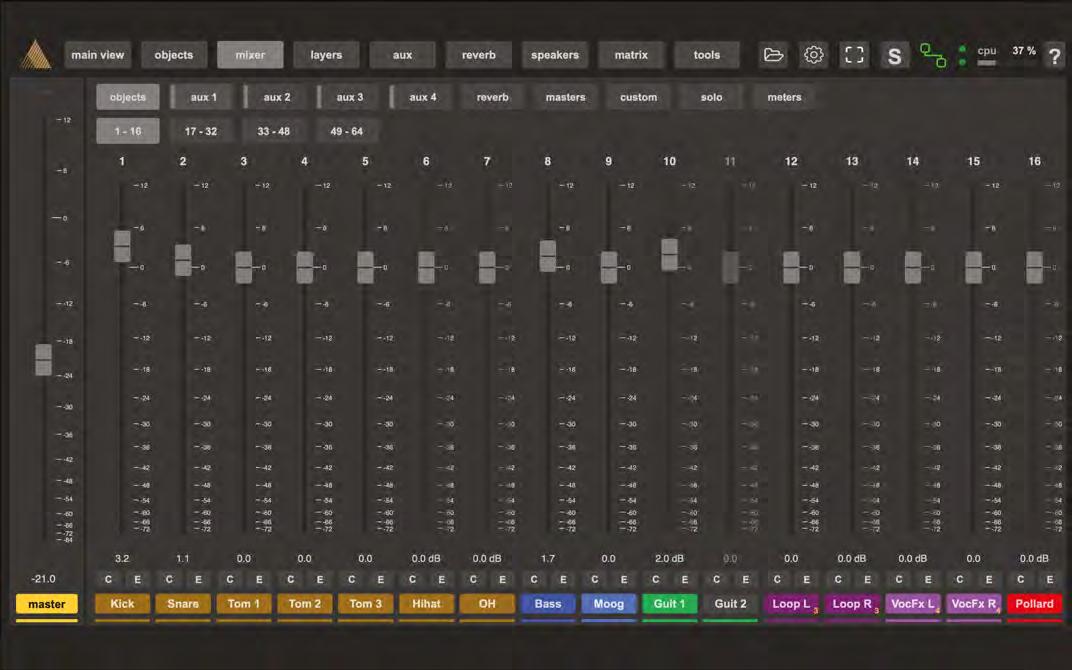
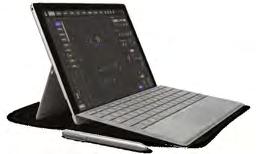

The FletcherMachine Remote software offers an easy-to-use yet complete set of mixing functionalities, including EQ, compression, auxiliary sends, and much more. To learn more about the FletcherMachine visit our website at adamsonsystems.com MIXER PAGE Send on Fader for Speakers, Aux, Reverb and VCAs Dedicated Page for Solo in Place Custom Fader Page Mixdown Connects with the FletcherMachine Remote software without the requirement of a dedicated hardware engine. Download now | Free of charge!

L-ISA 3.0 AVAILABLE NOW l-acoustics.com NEW FEATURES FOR L-ISA STUDIO & L-ISA PROCESSOR II FX ENGINE. Stereo Mapper. Snapshot Engine. Mixhalo Beta. Upgraded MIDI. Refined Room Engine. L-ISA Studio 16 Outputs. Milan AVB Certified.


































































































































































































 Active Audio an Arbane Groupe brand
Active Audio an Arbane Groupe brand
























 Photo: Tanner VonnahmeI, unsplash
Photo: Tanner VonnahmeI, unsplash






















